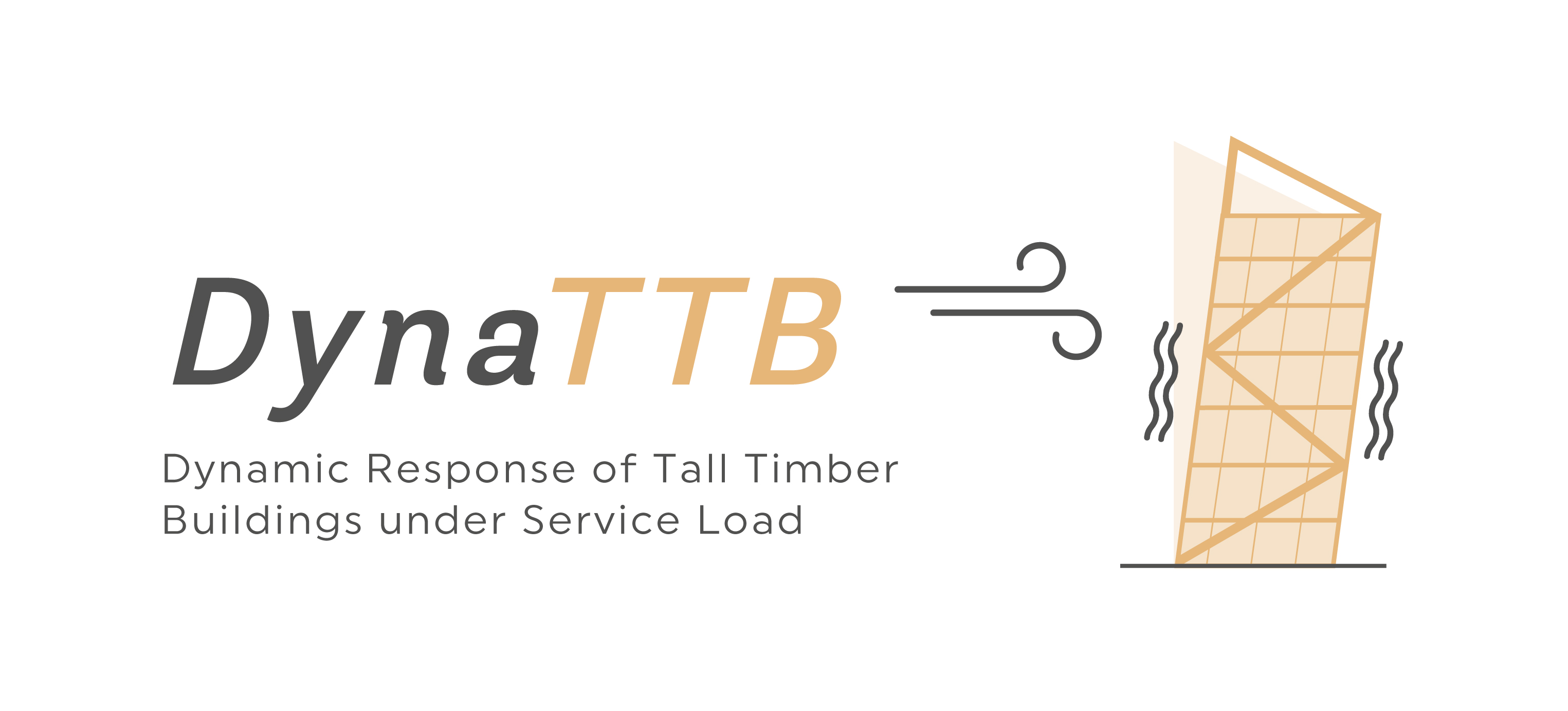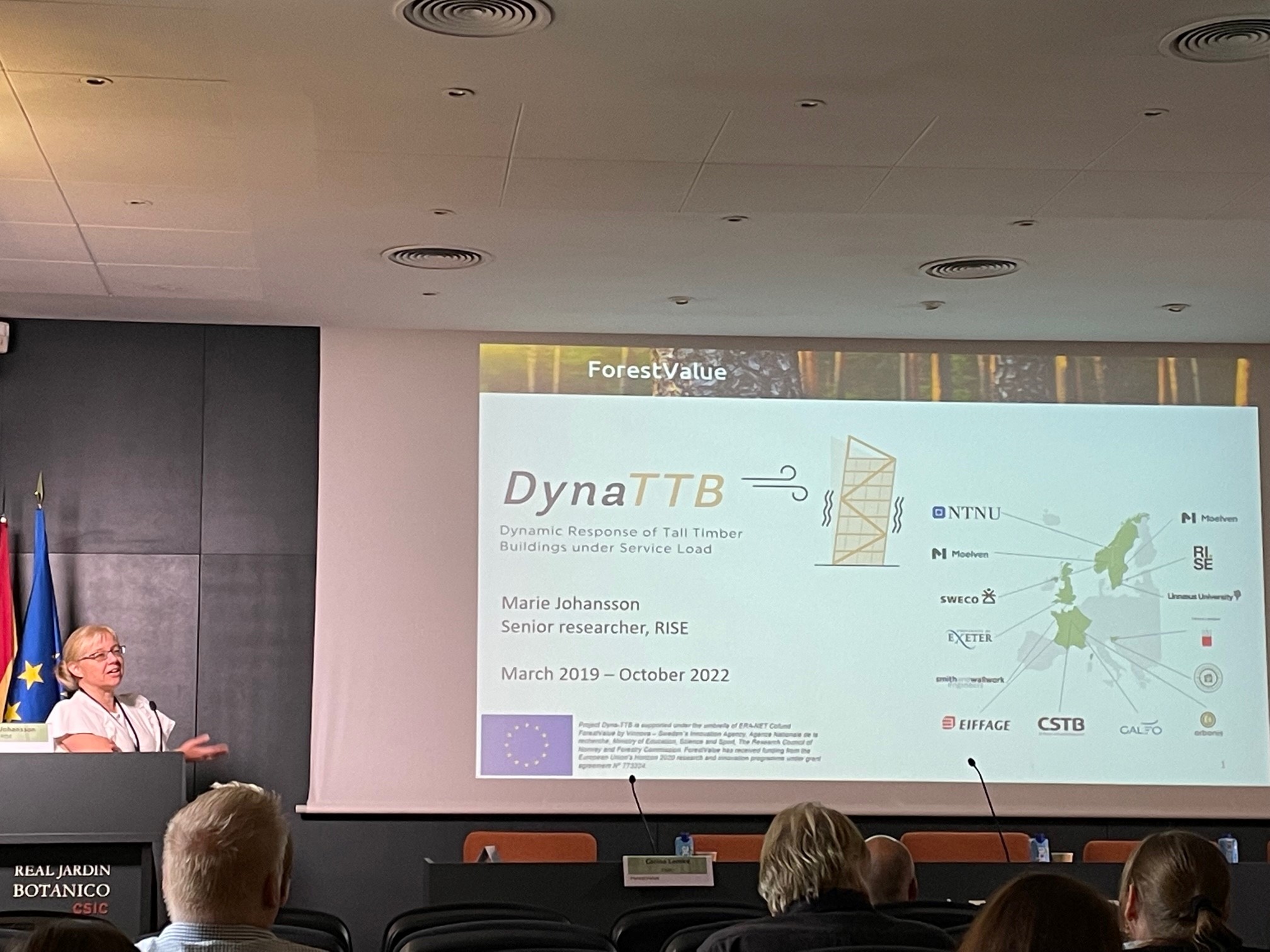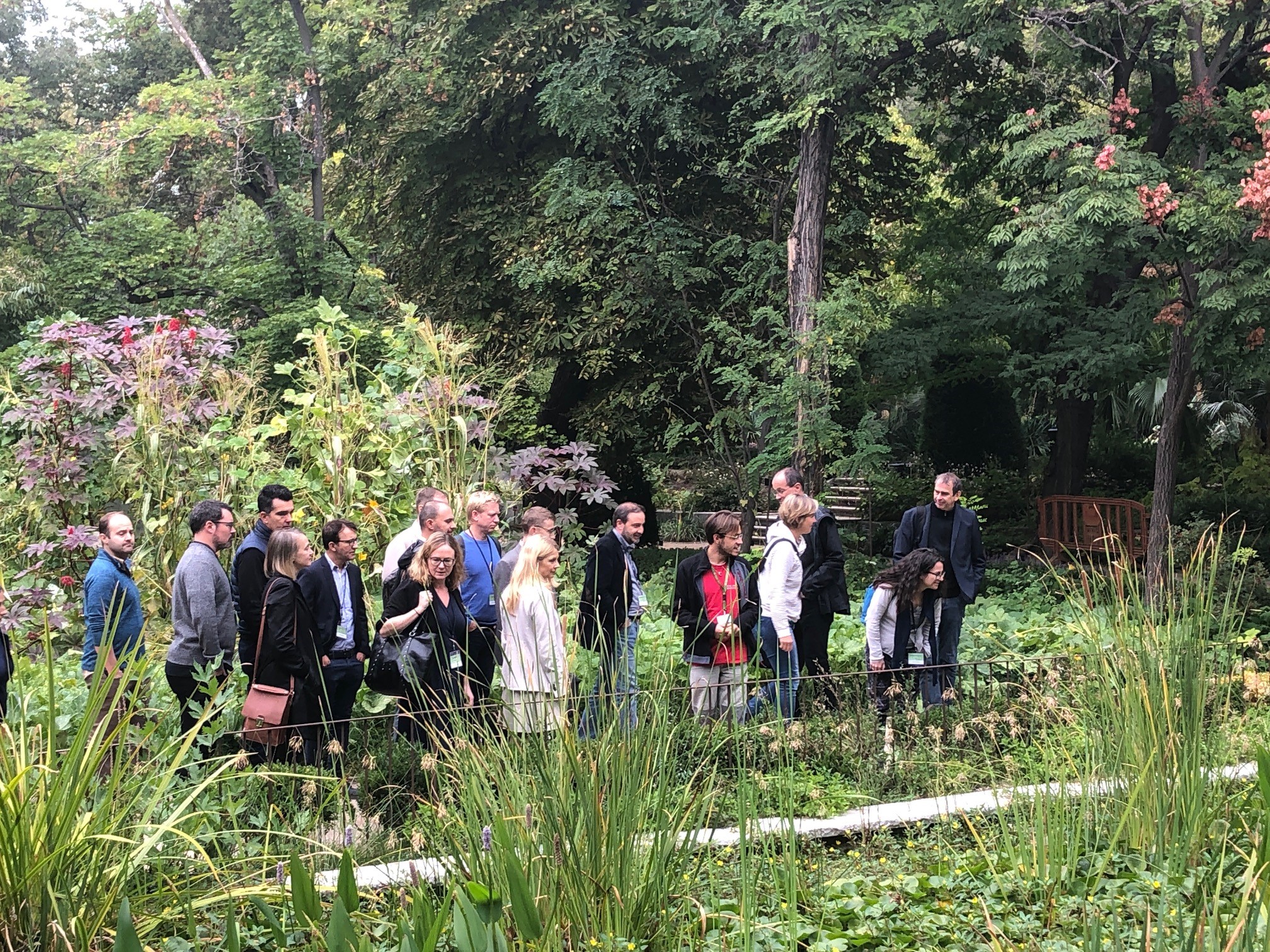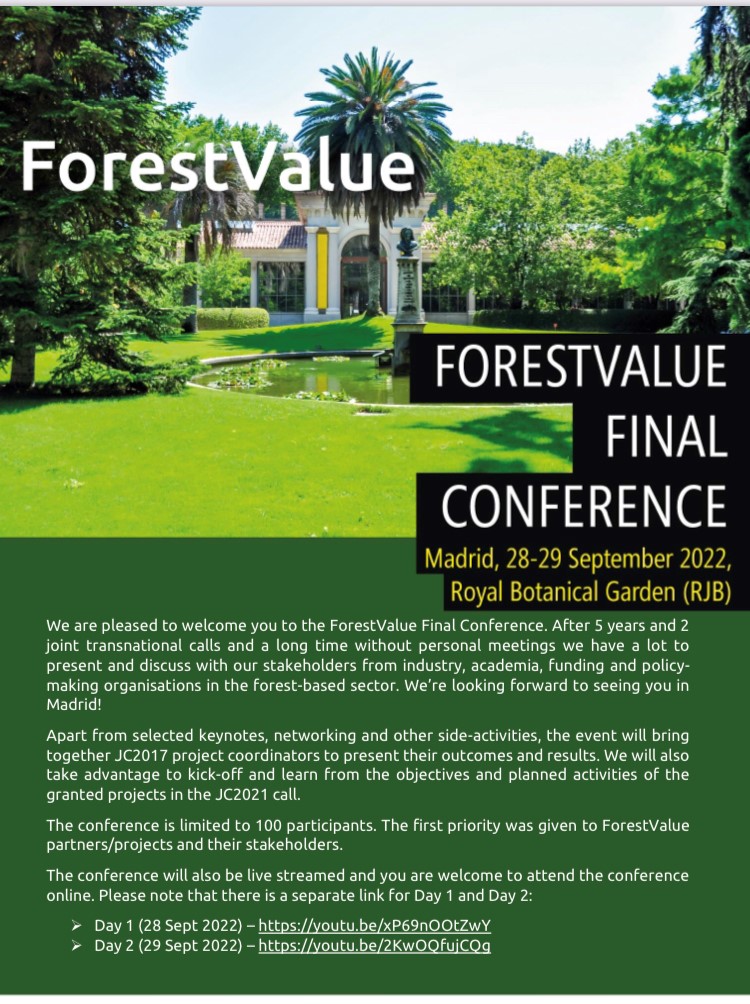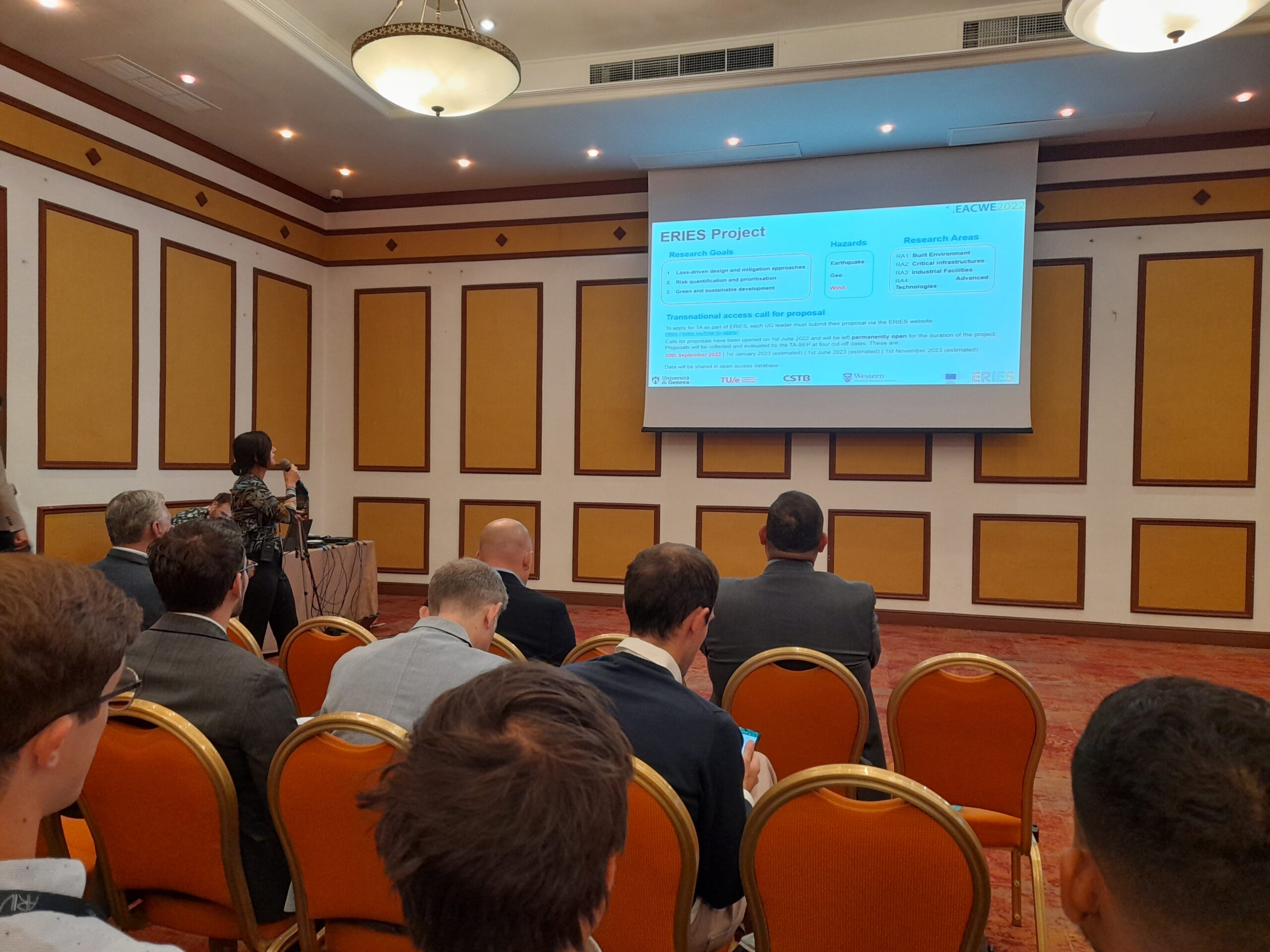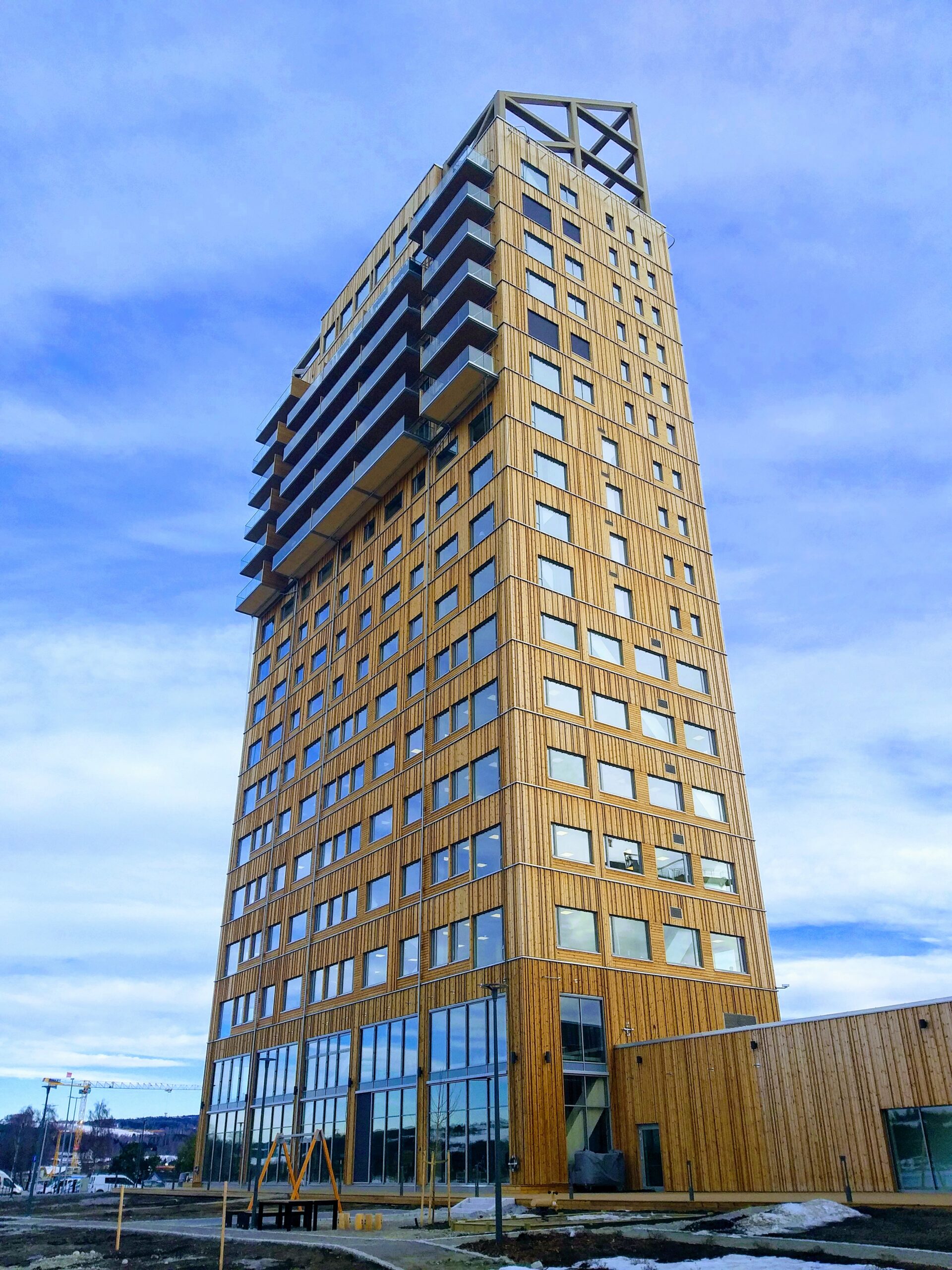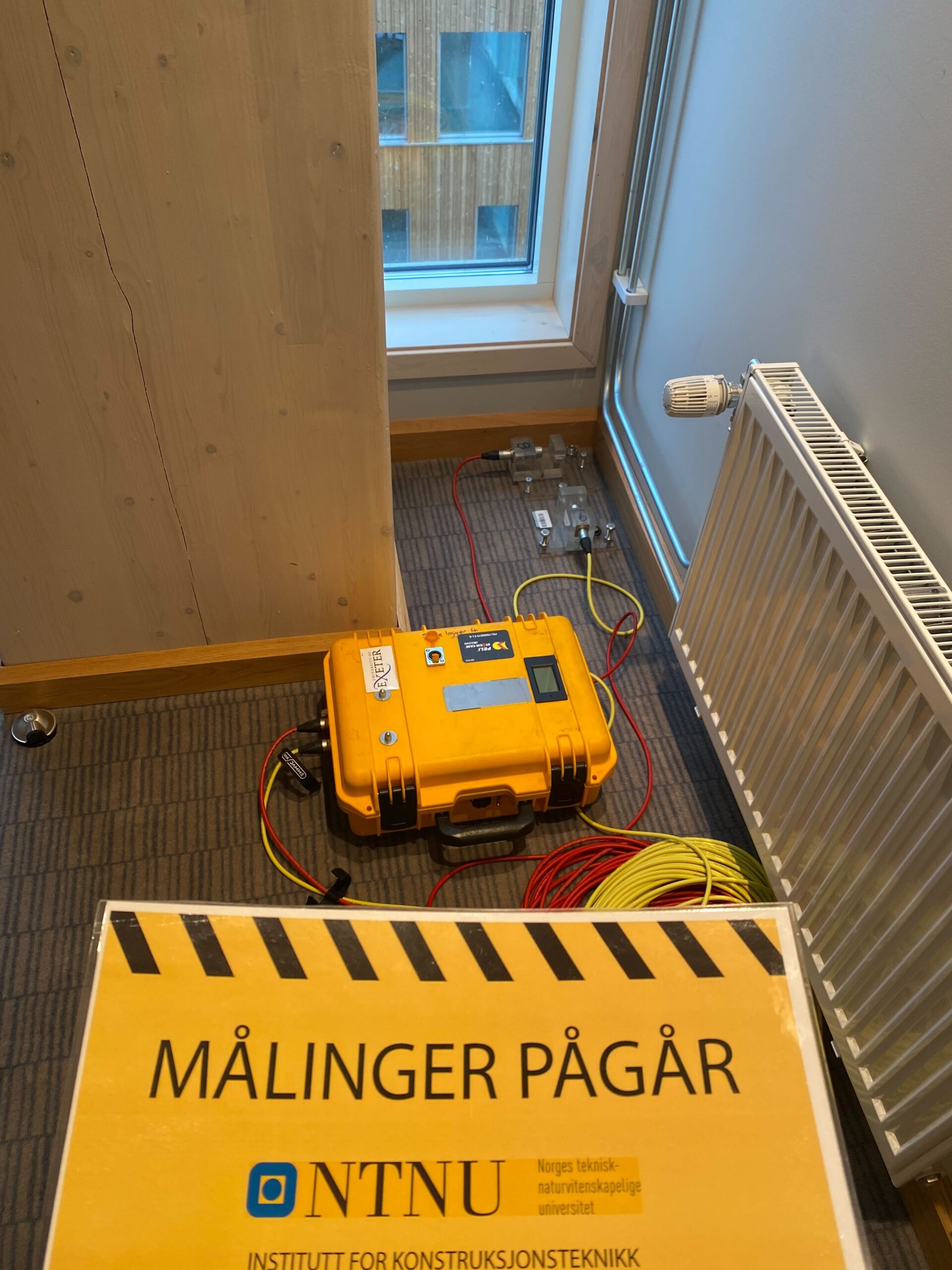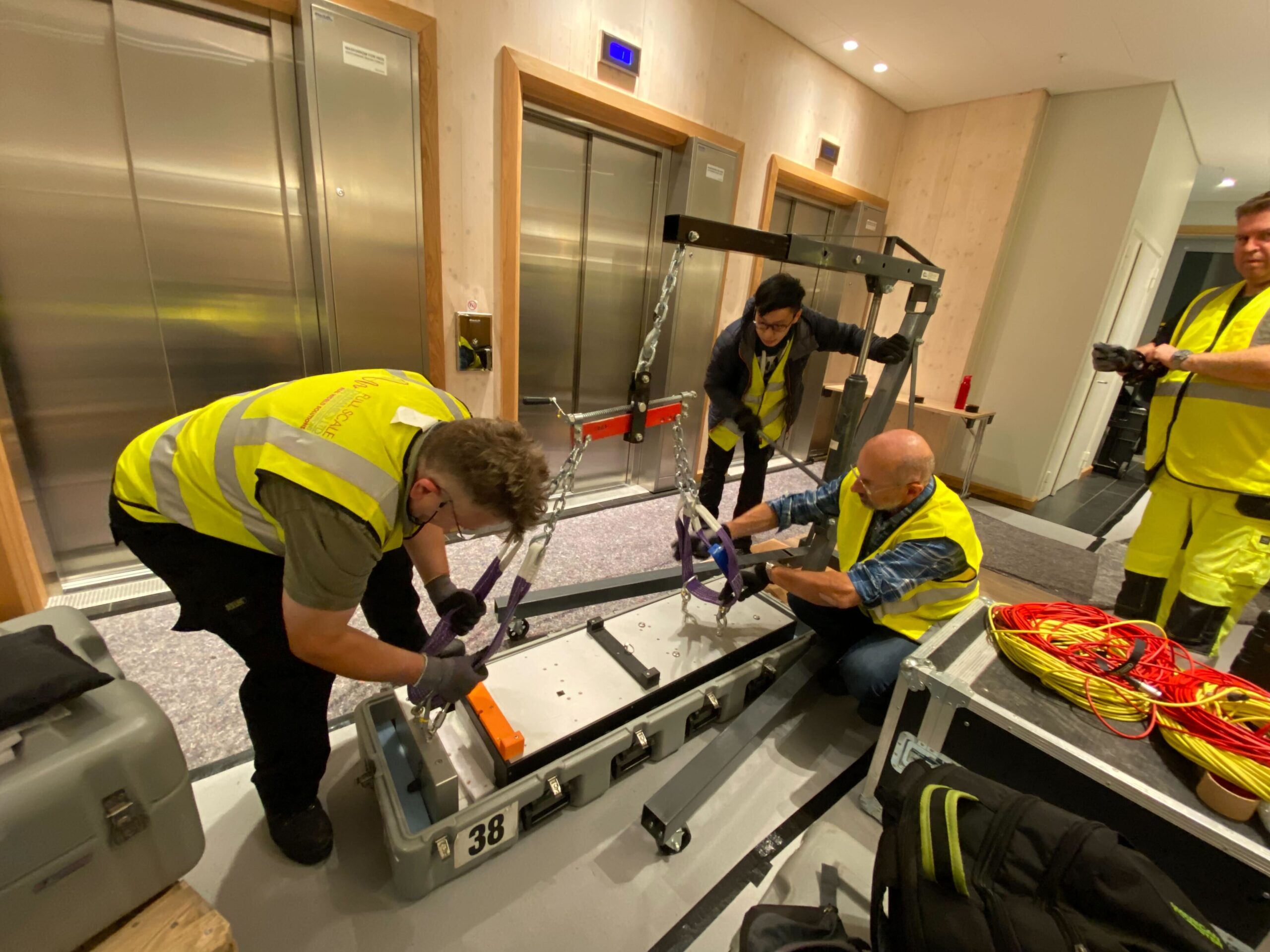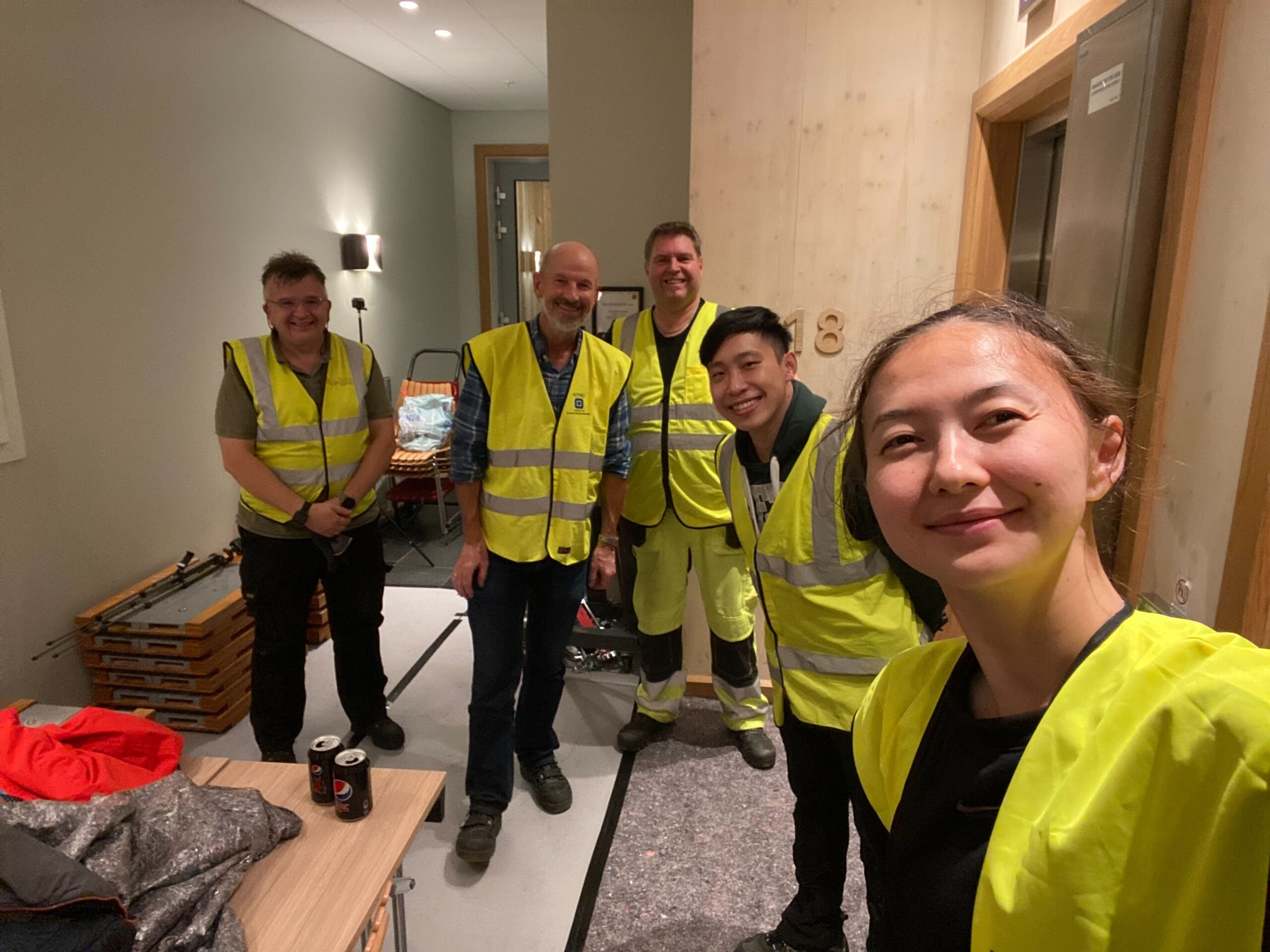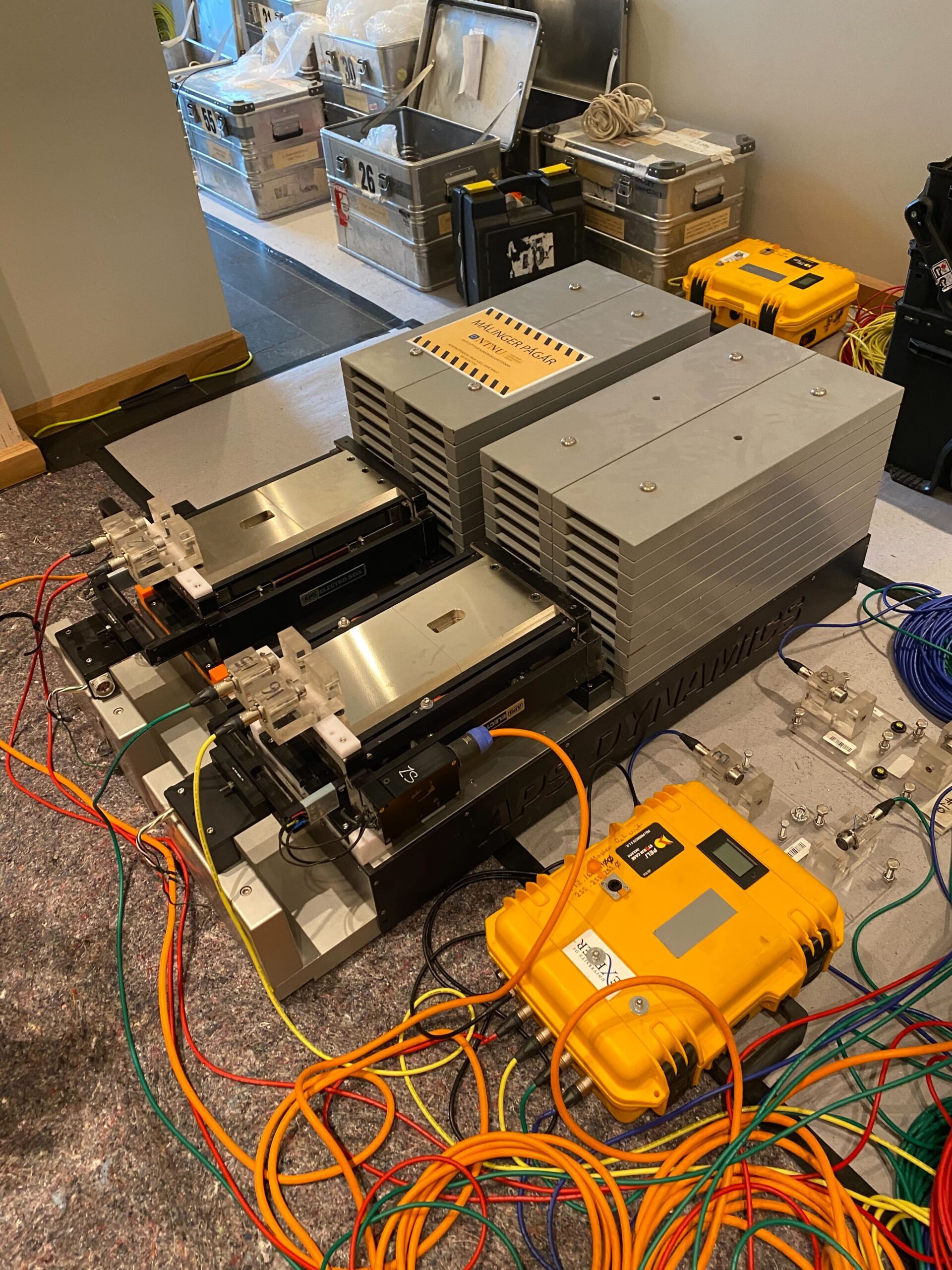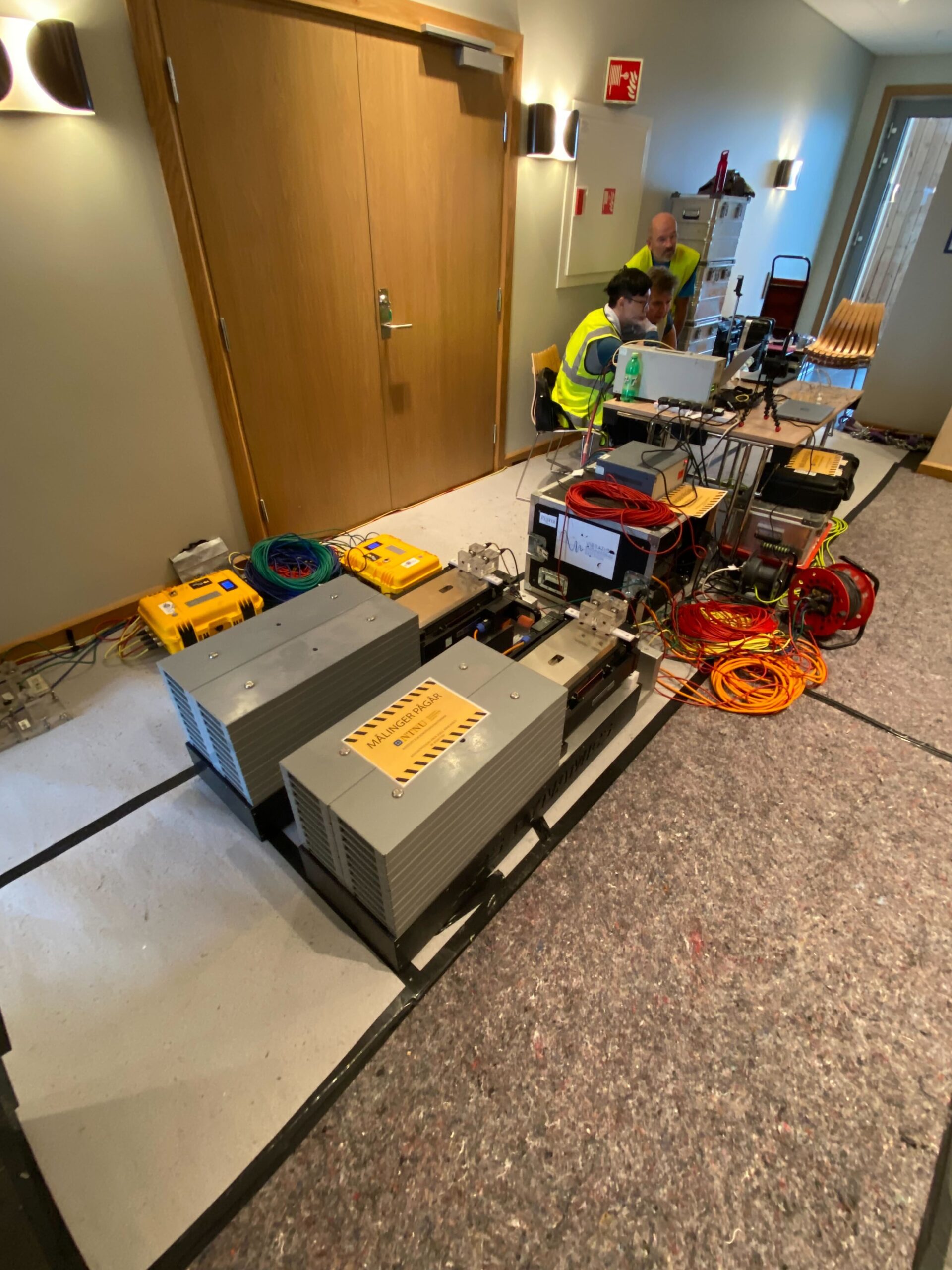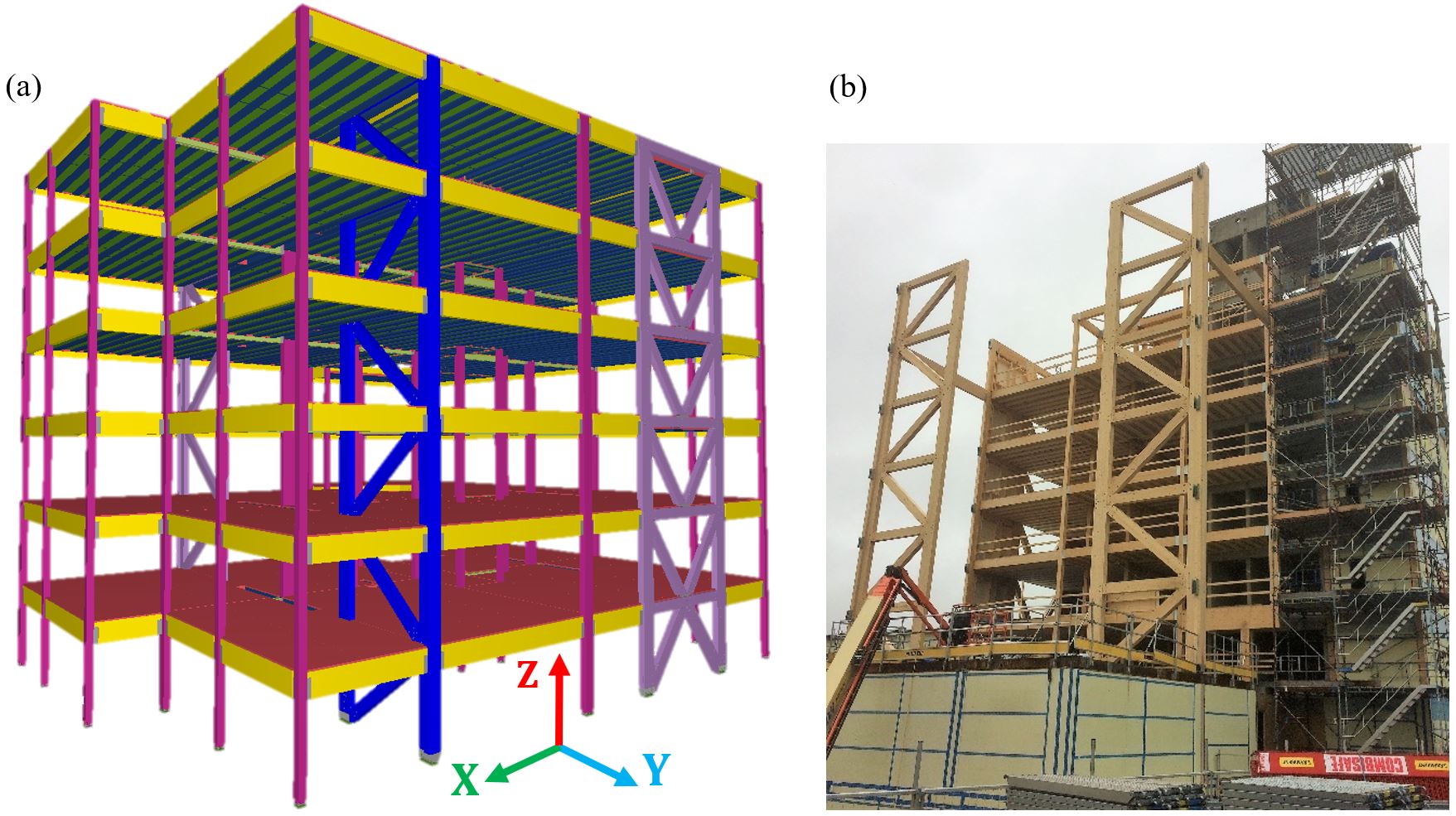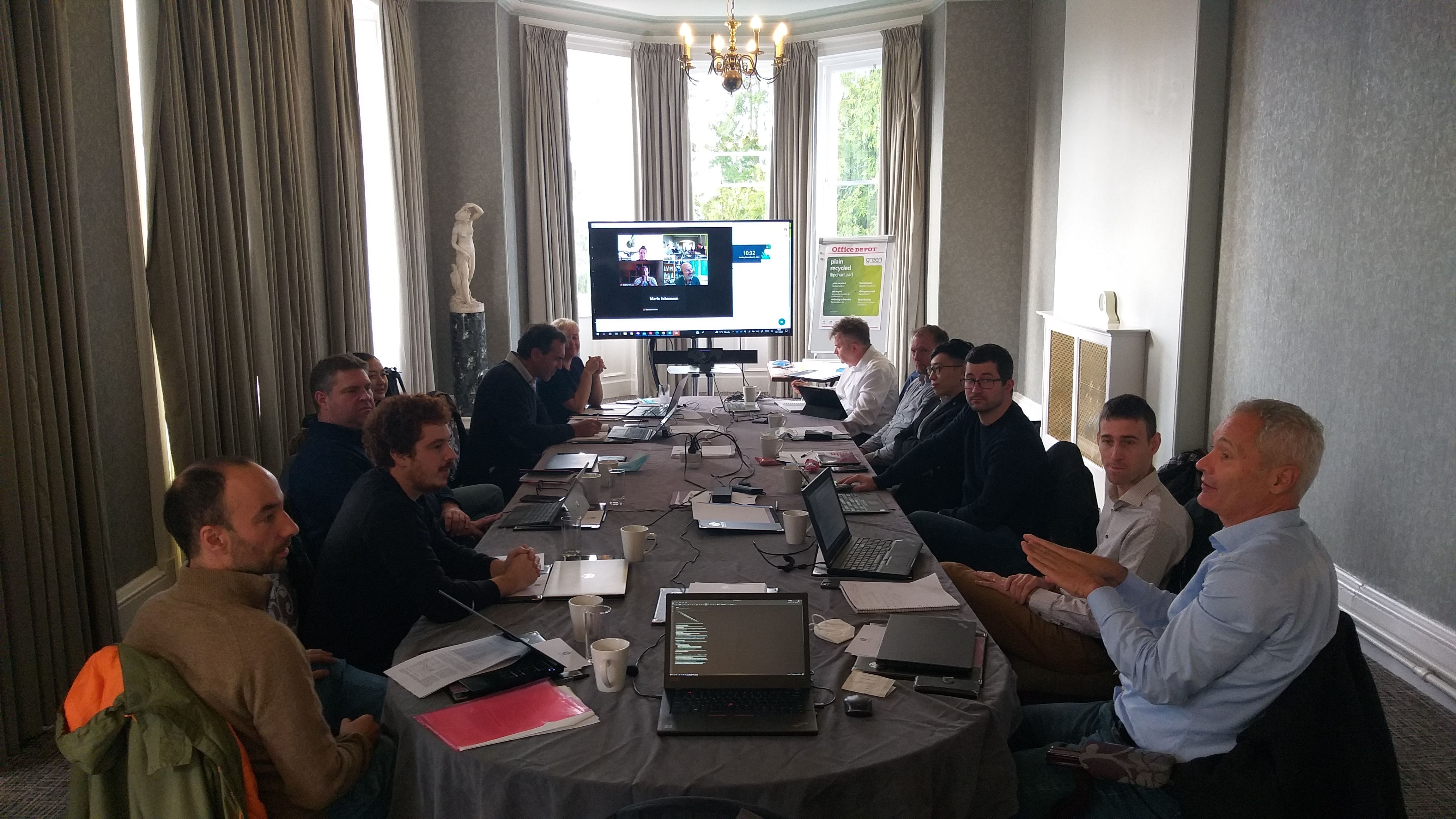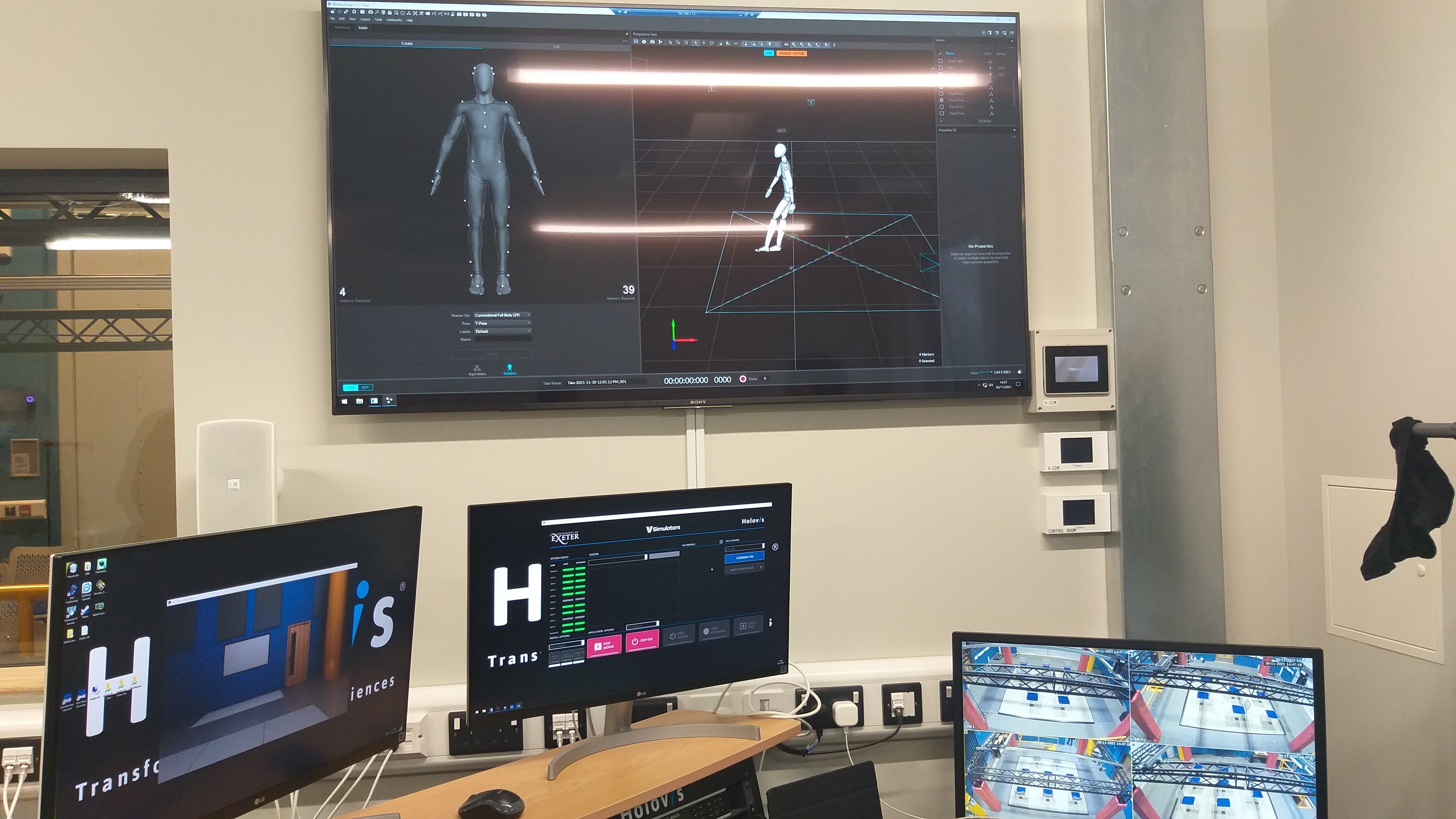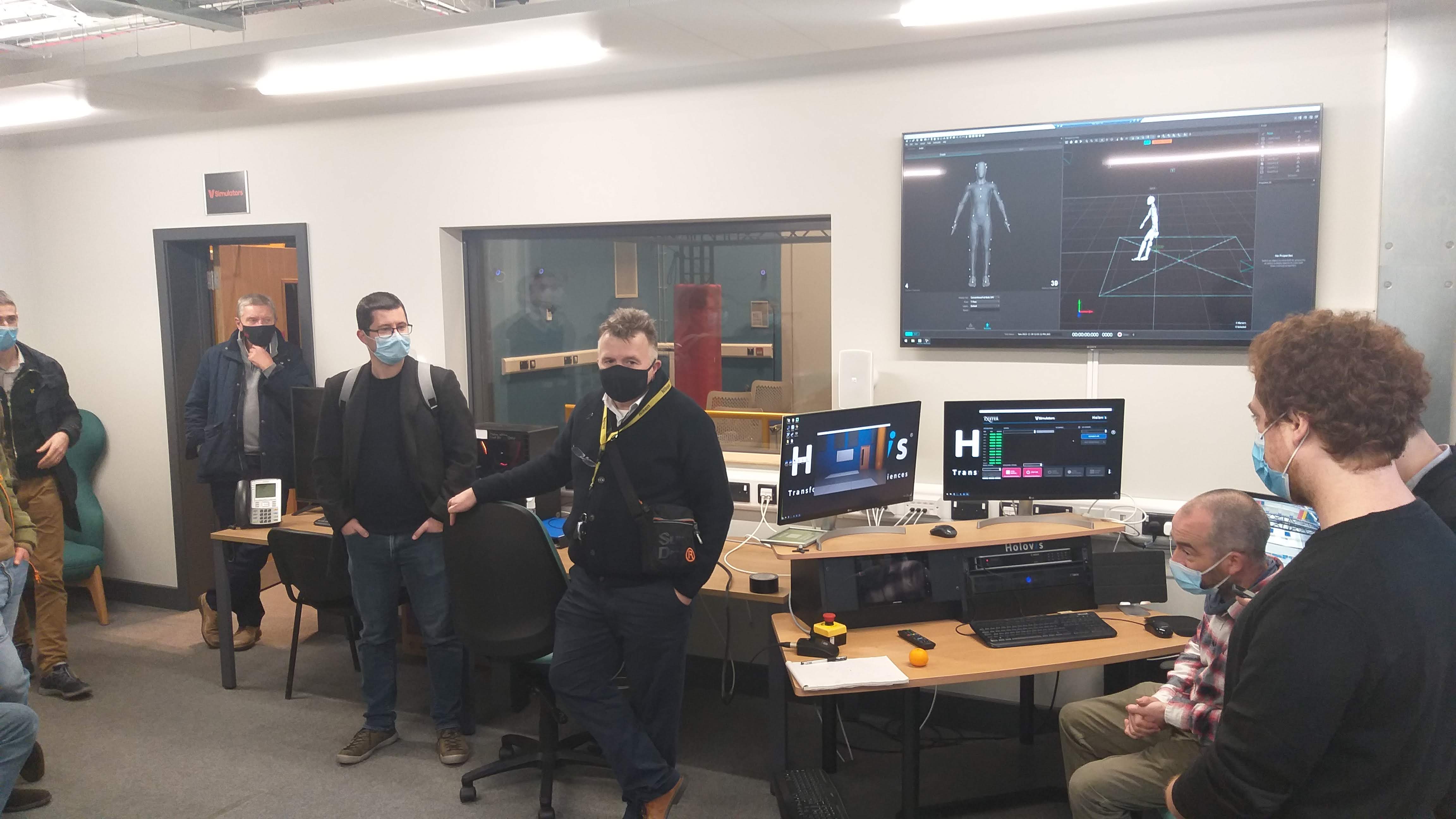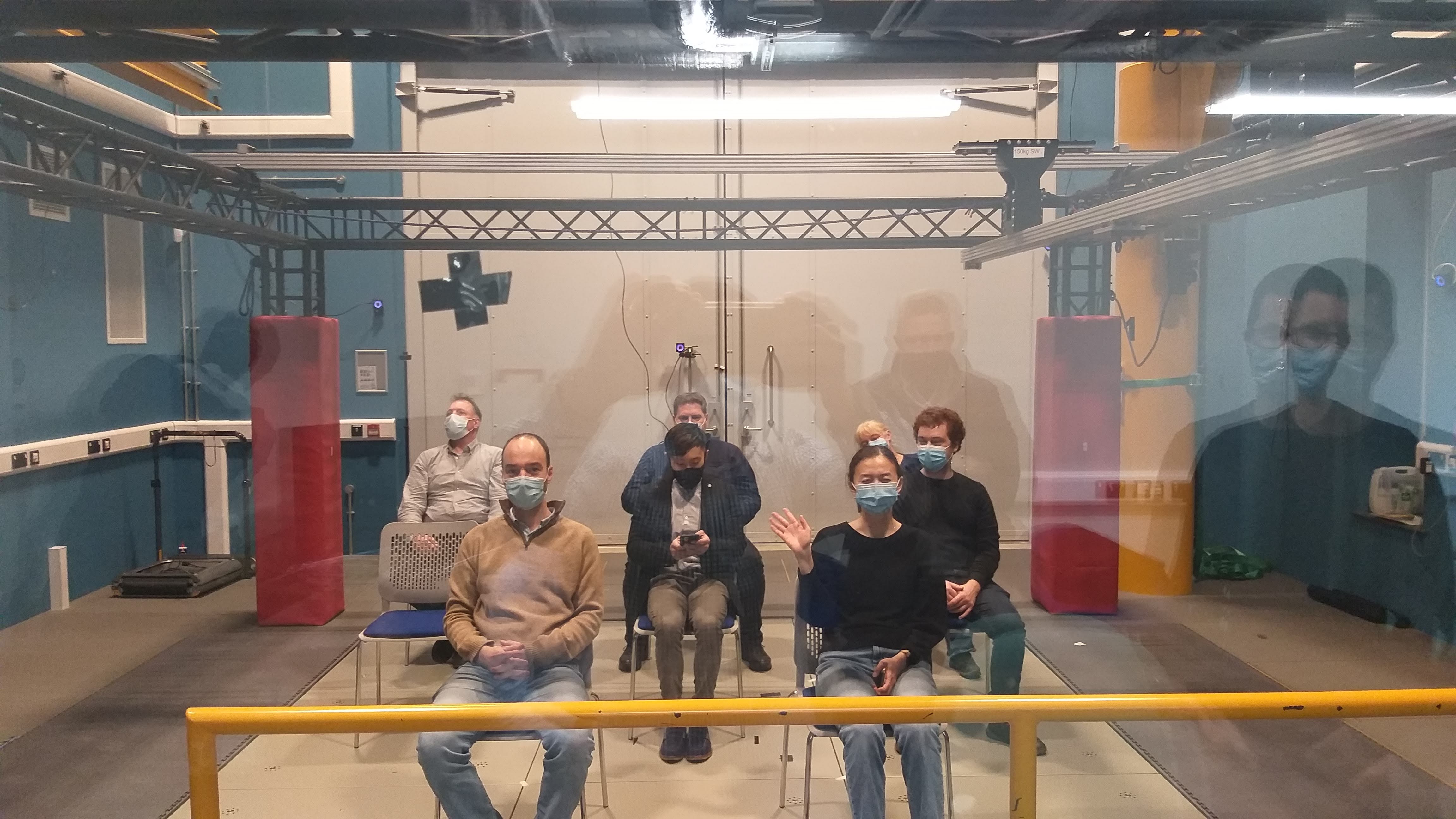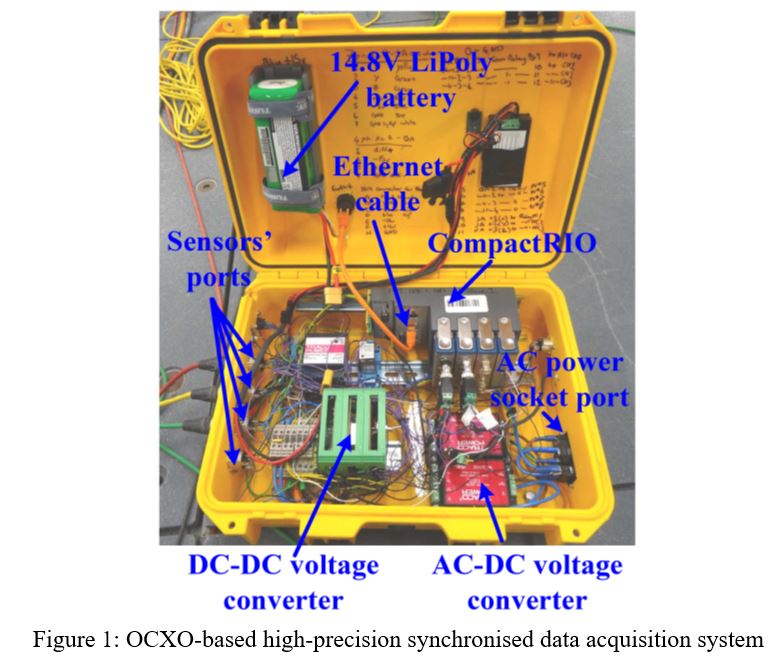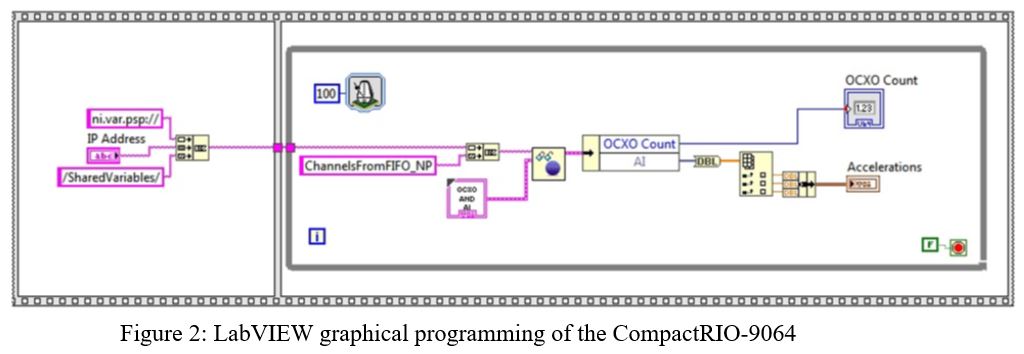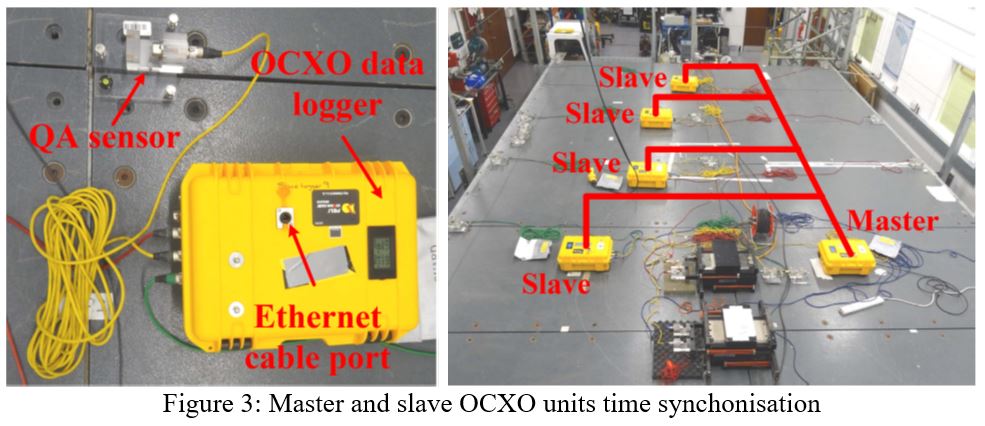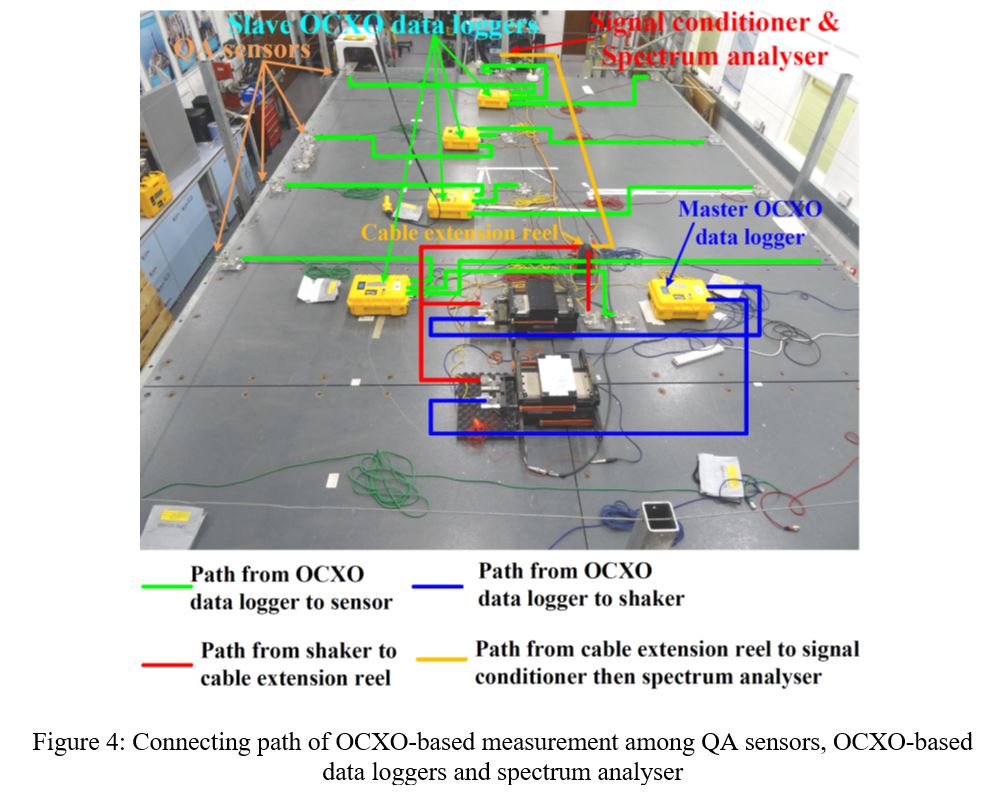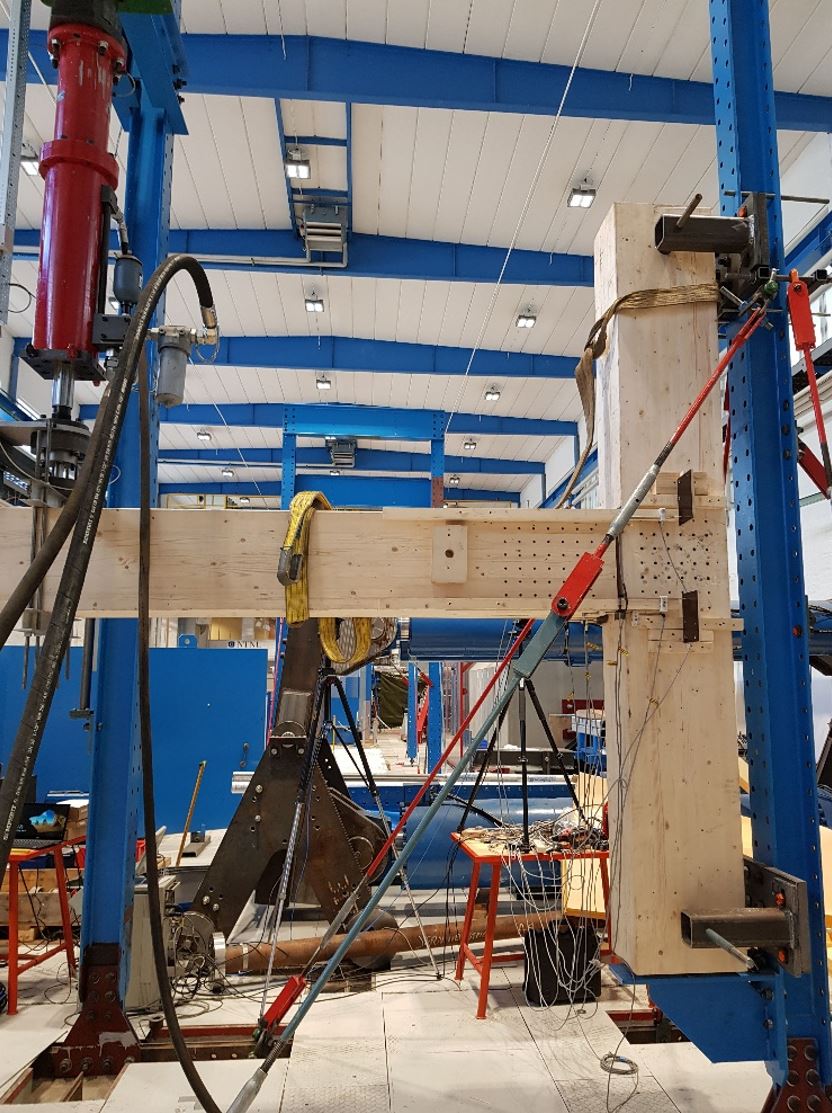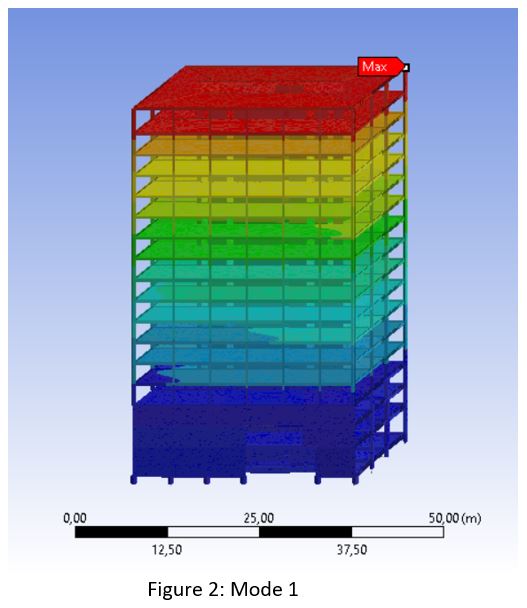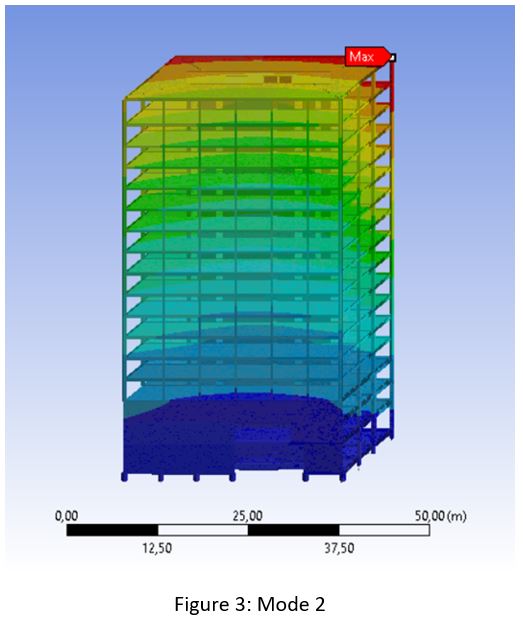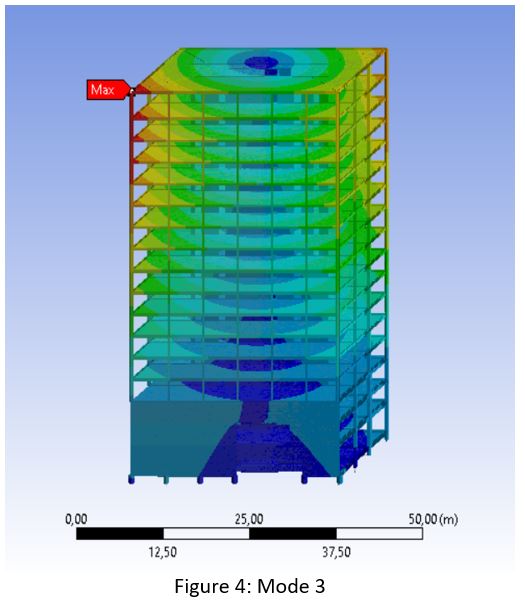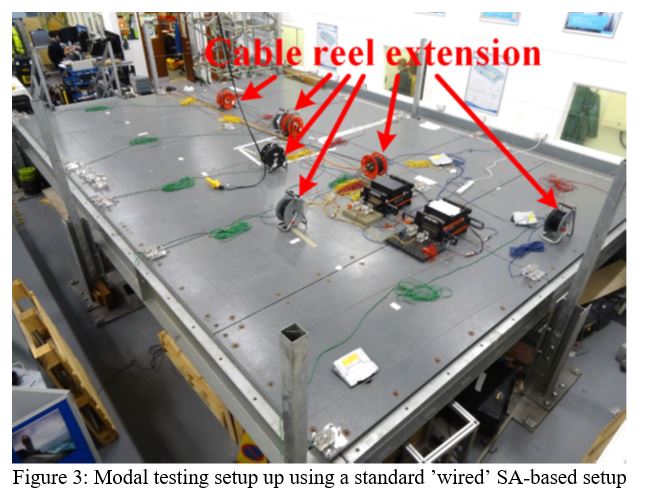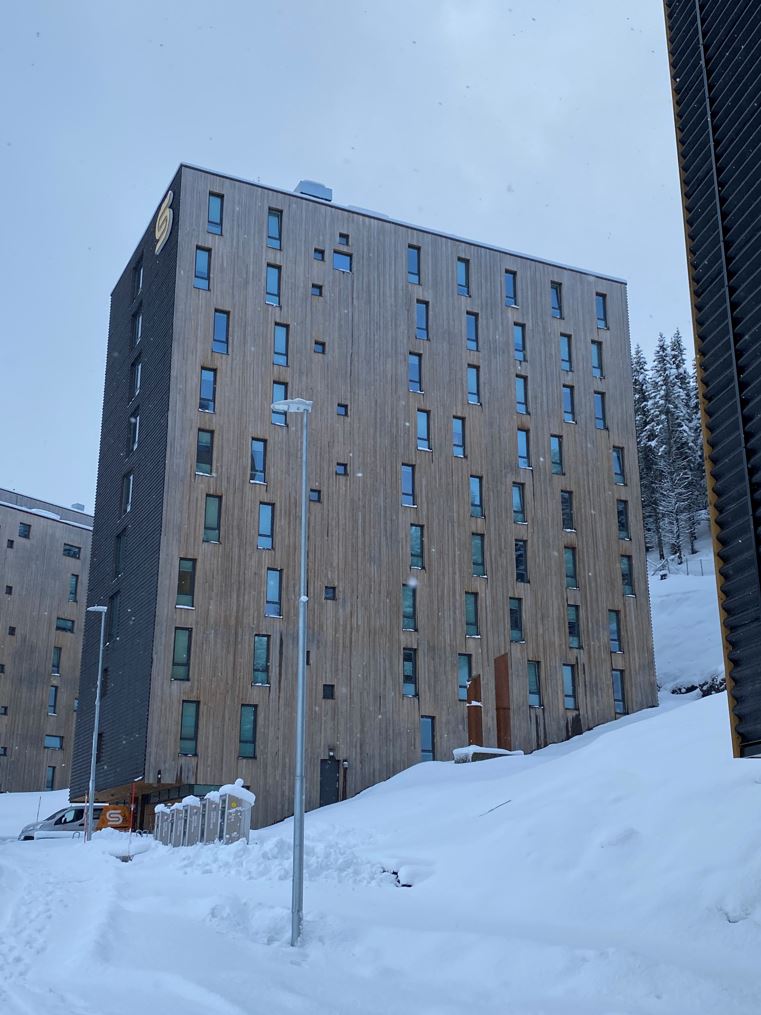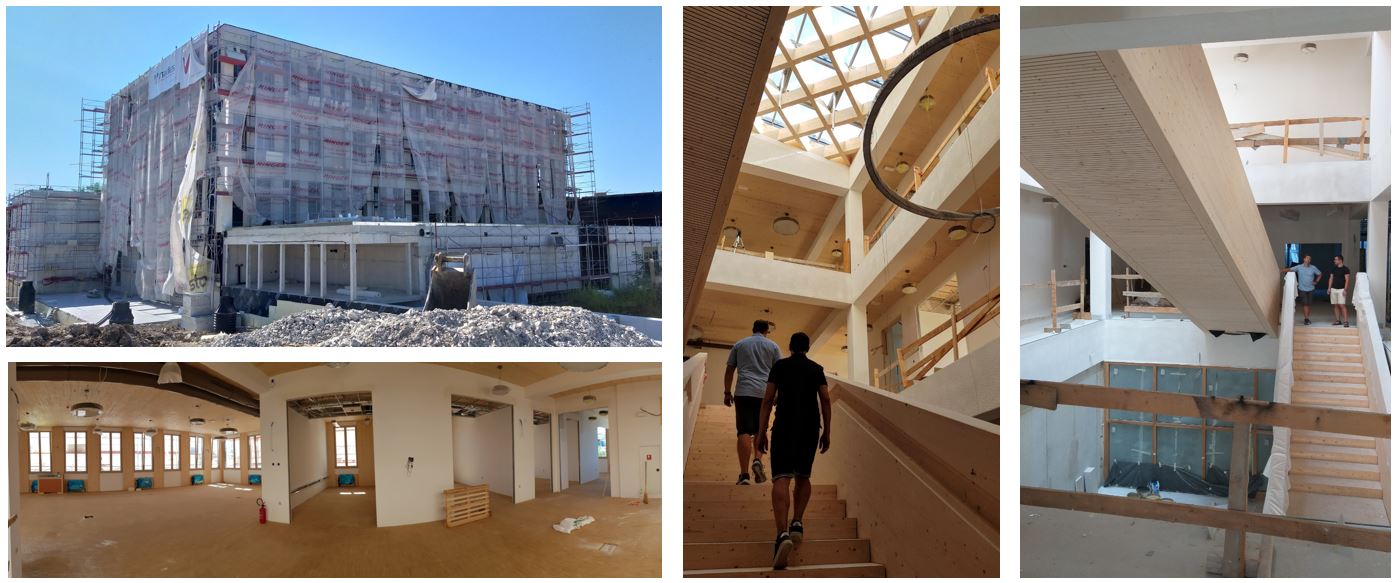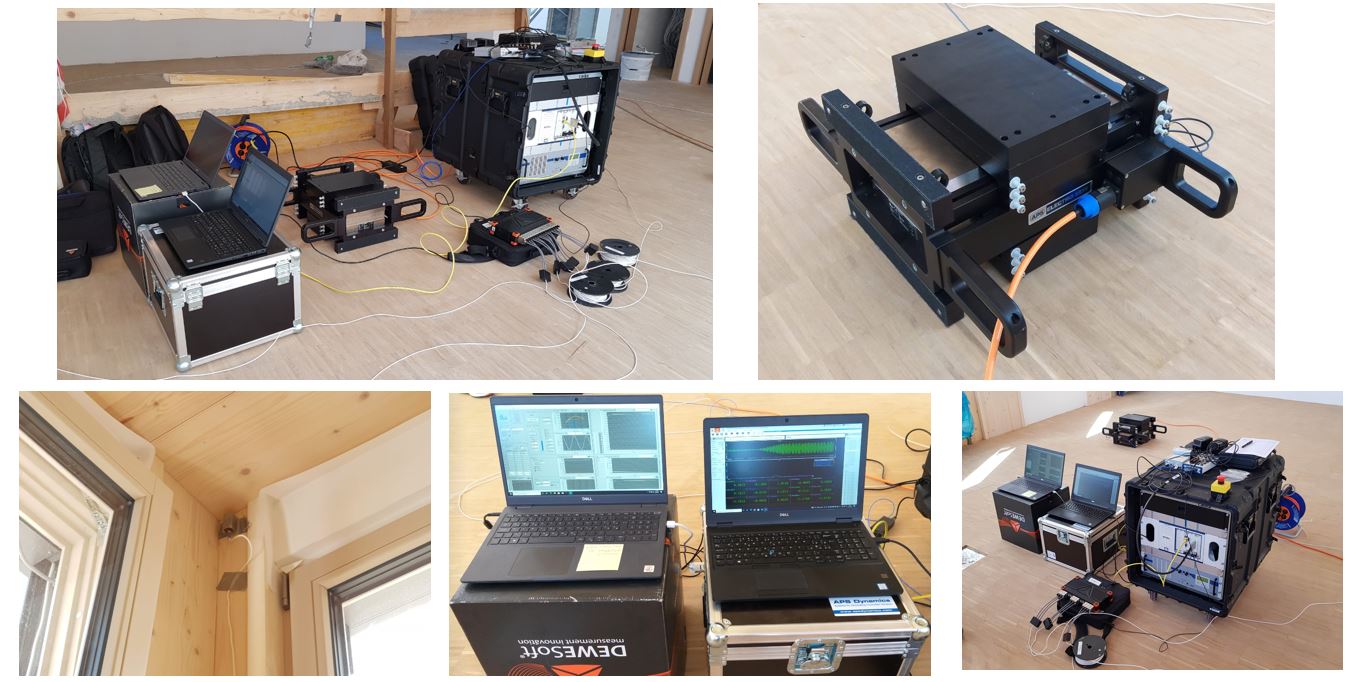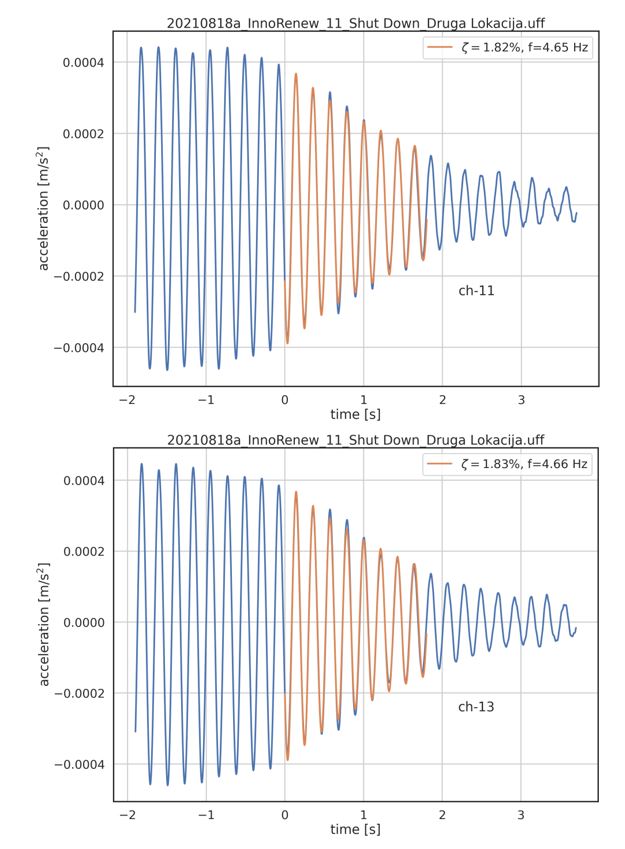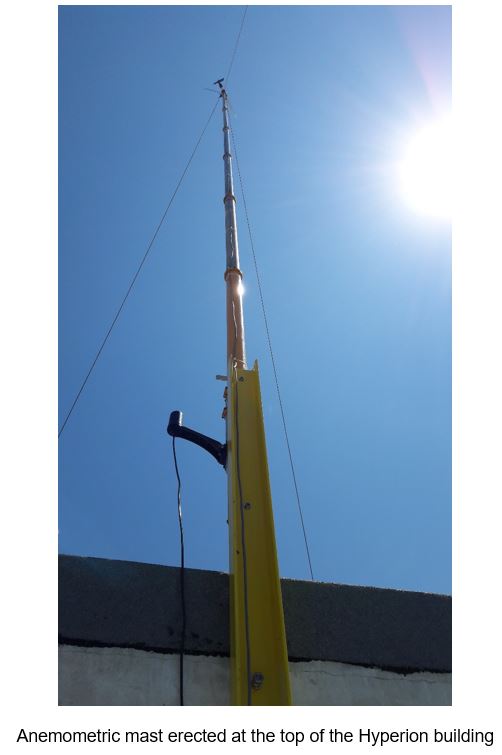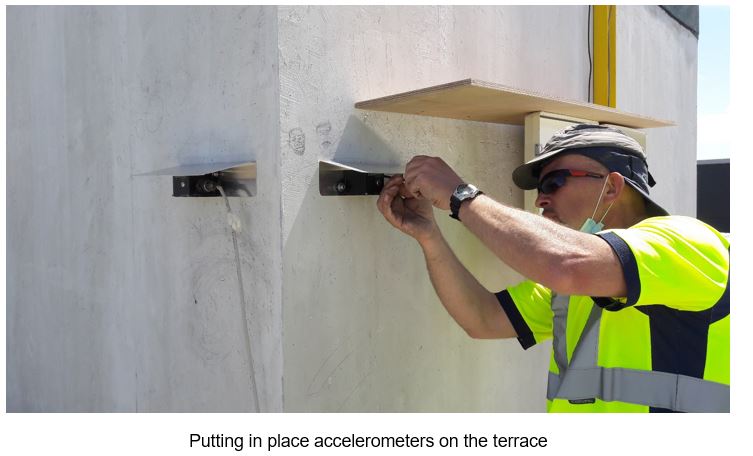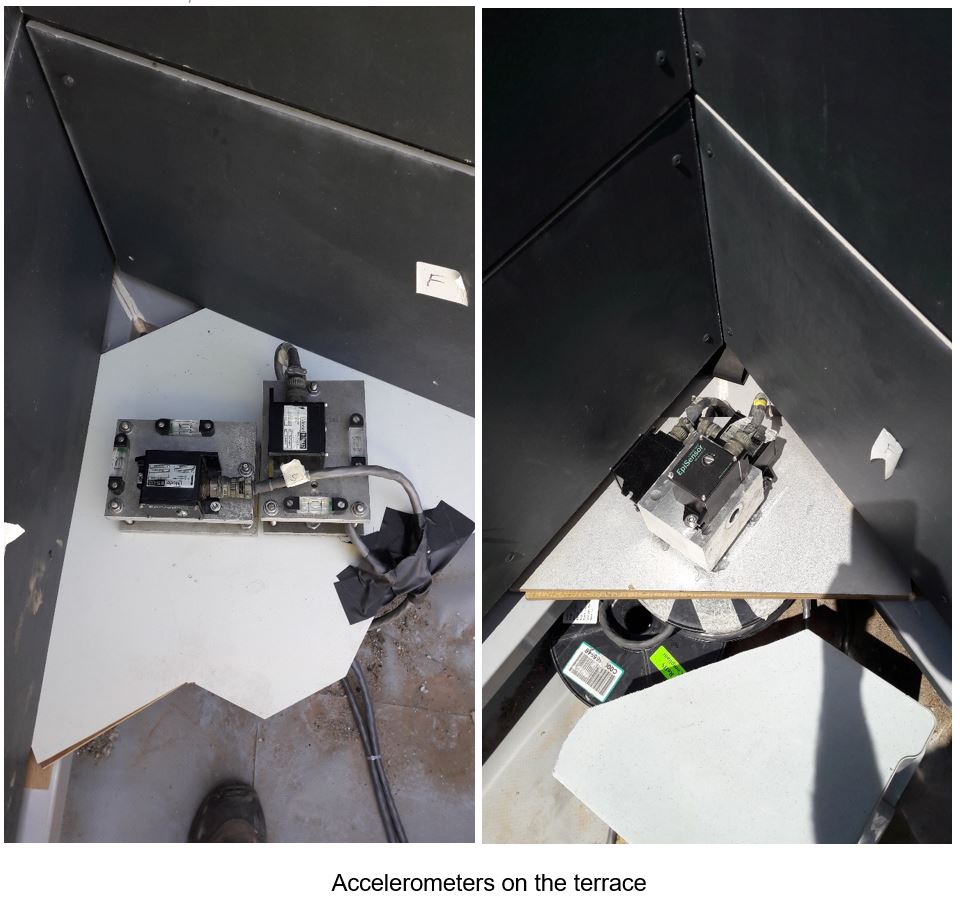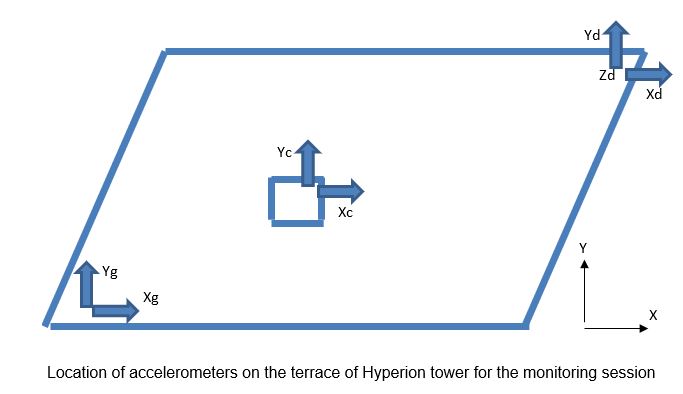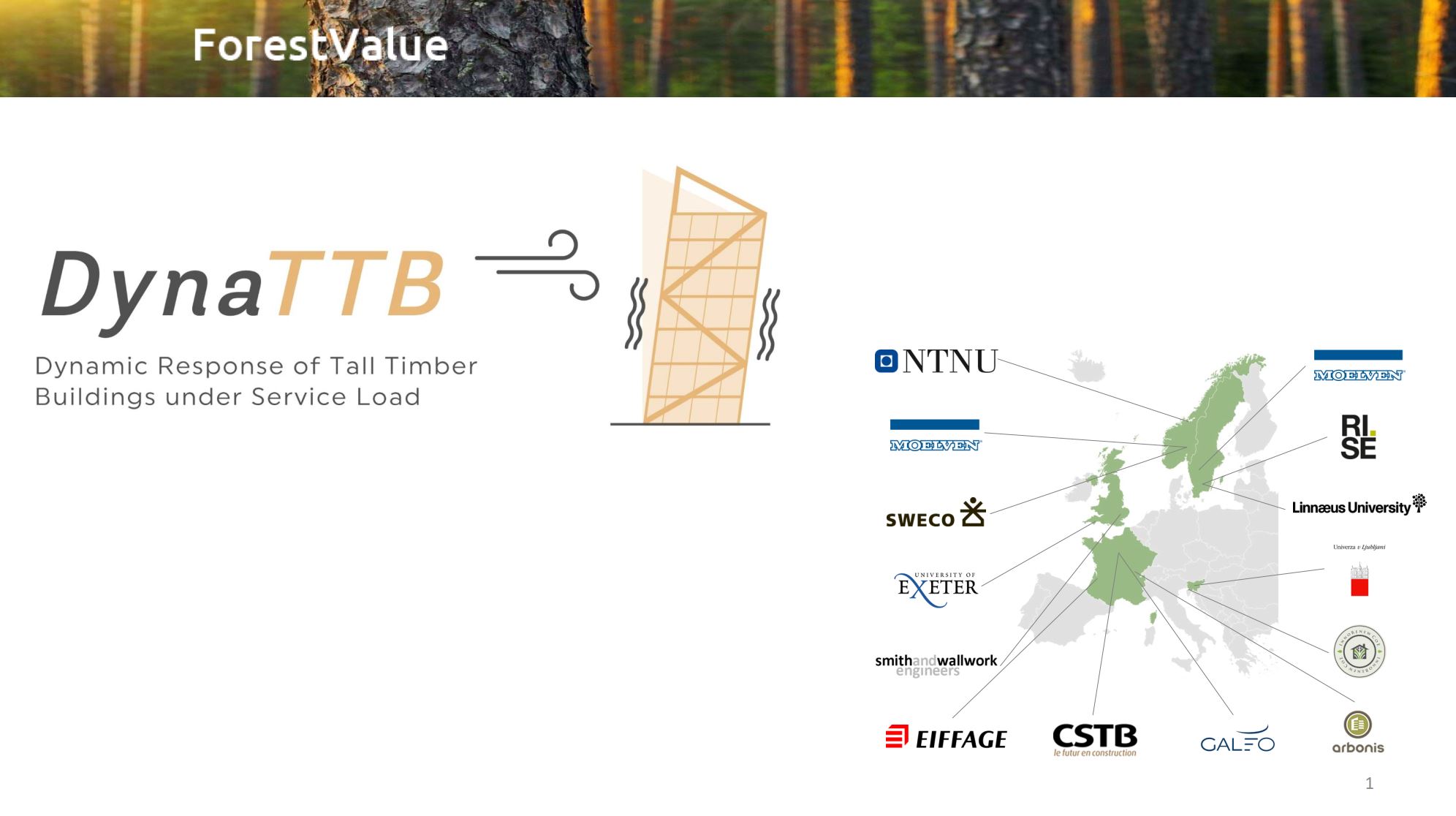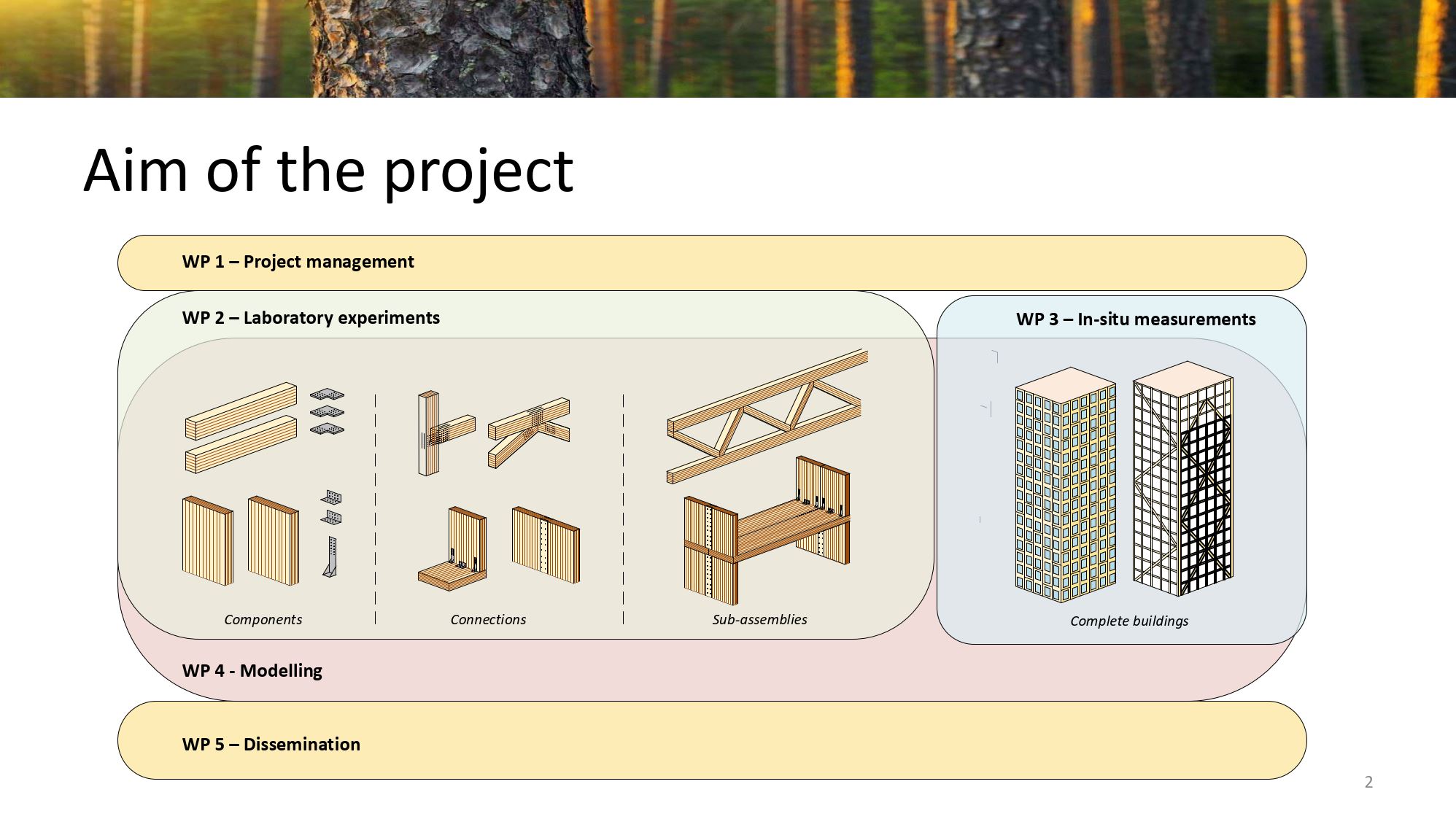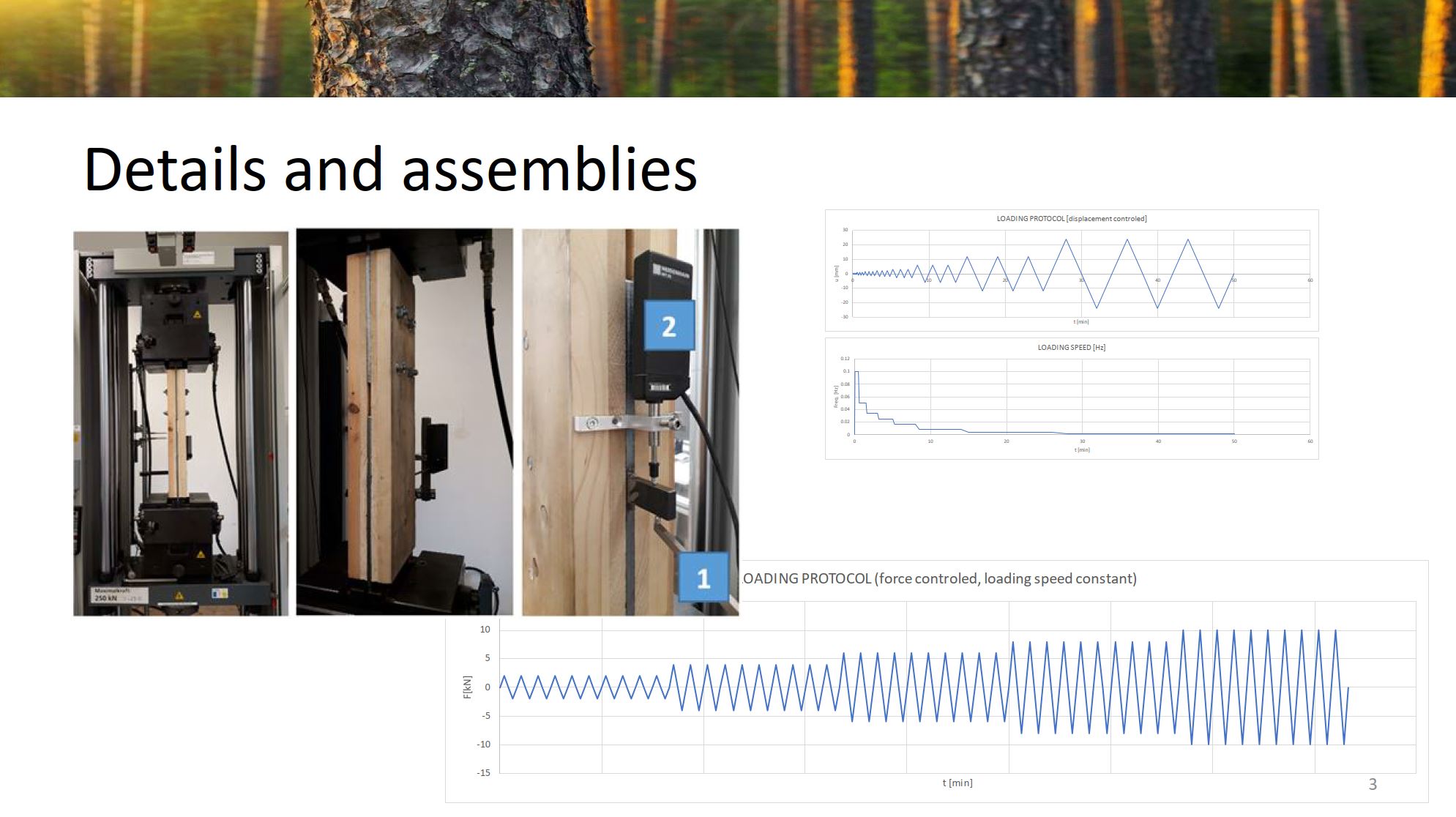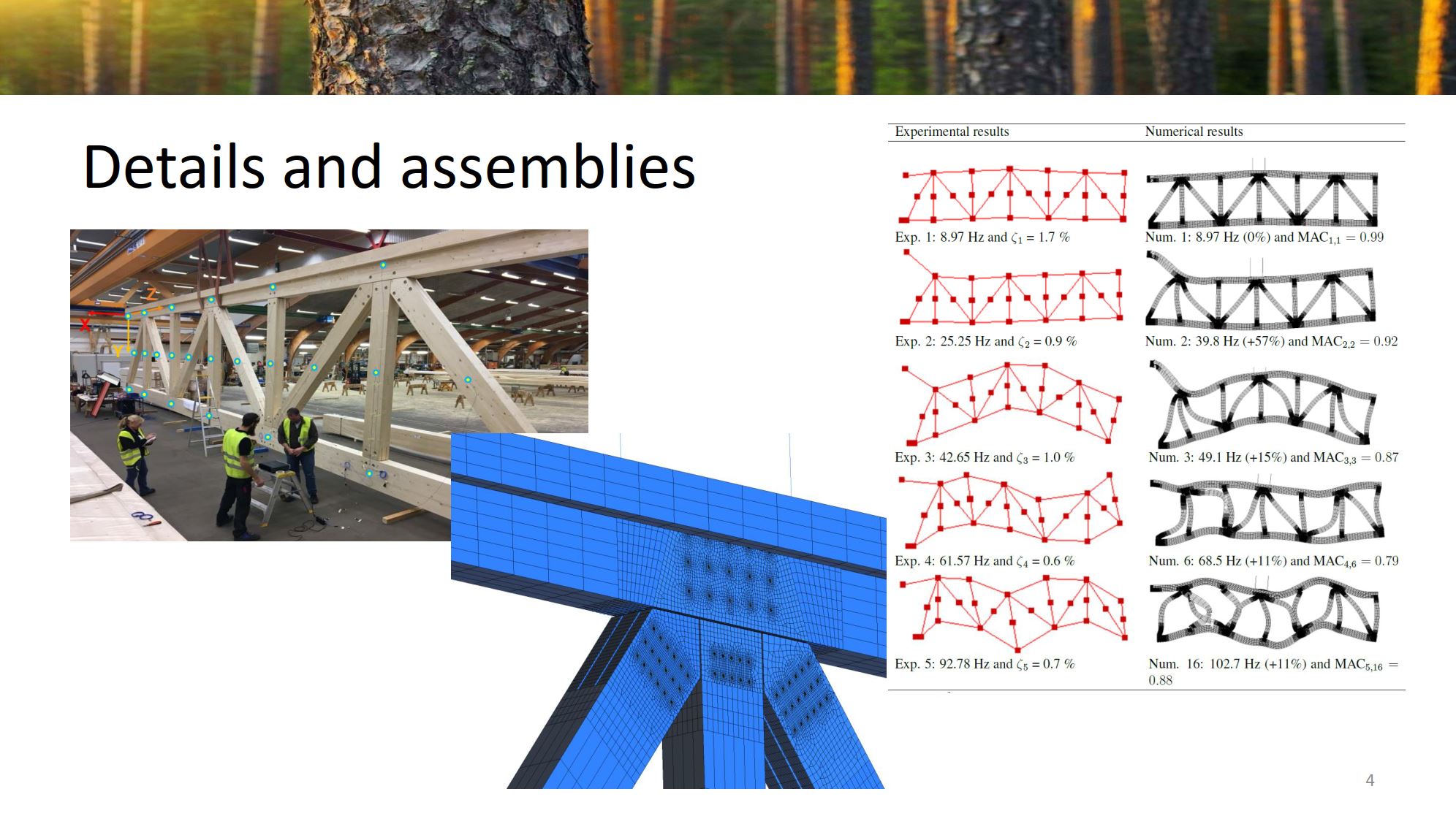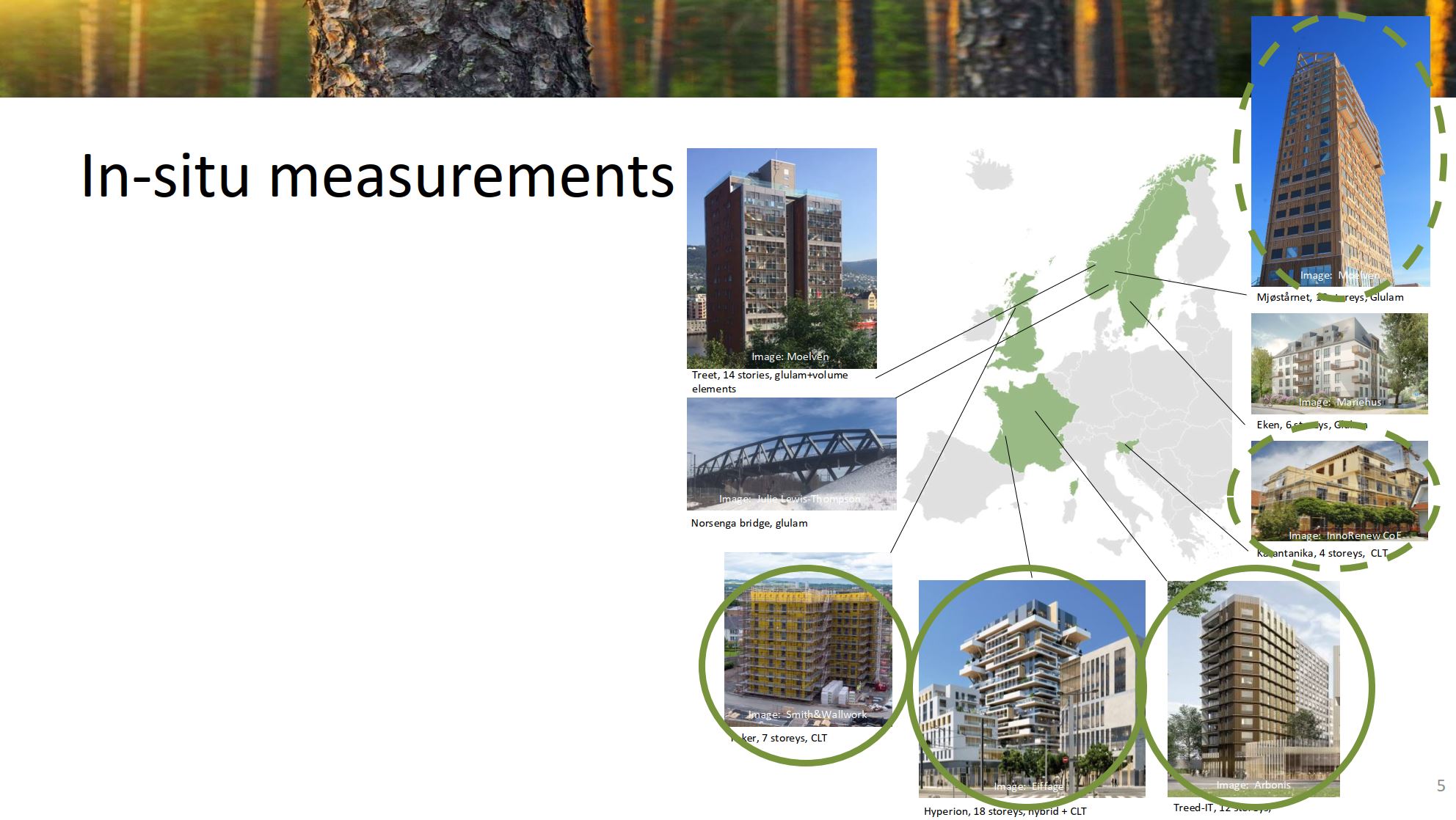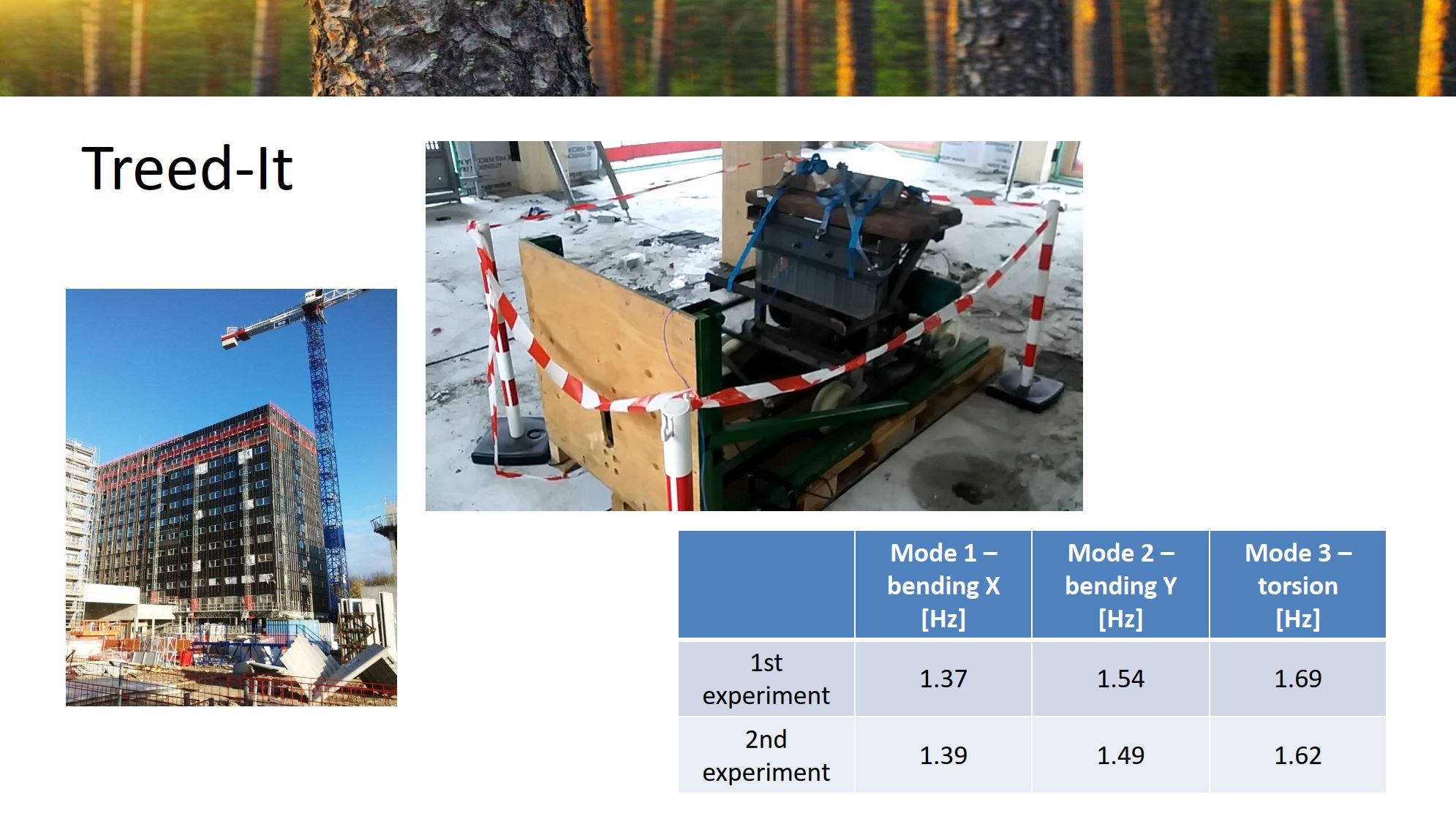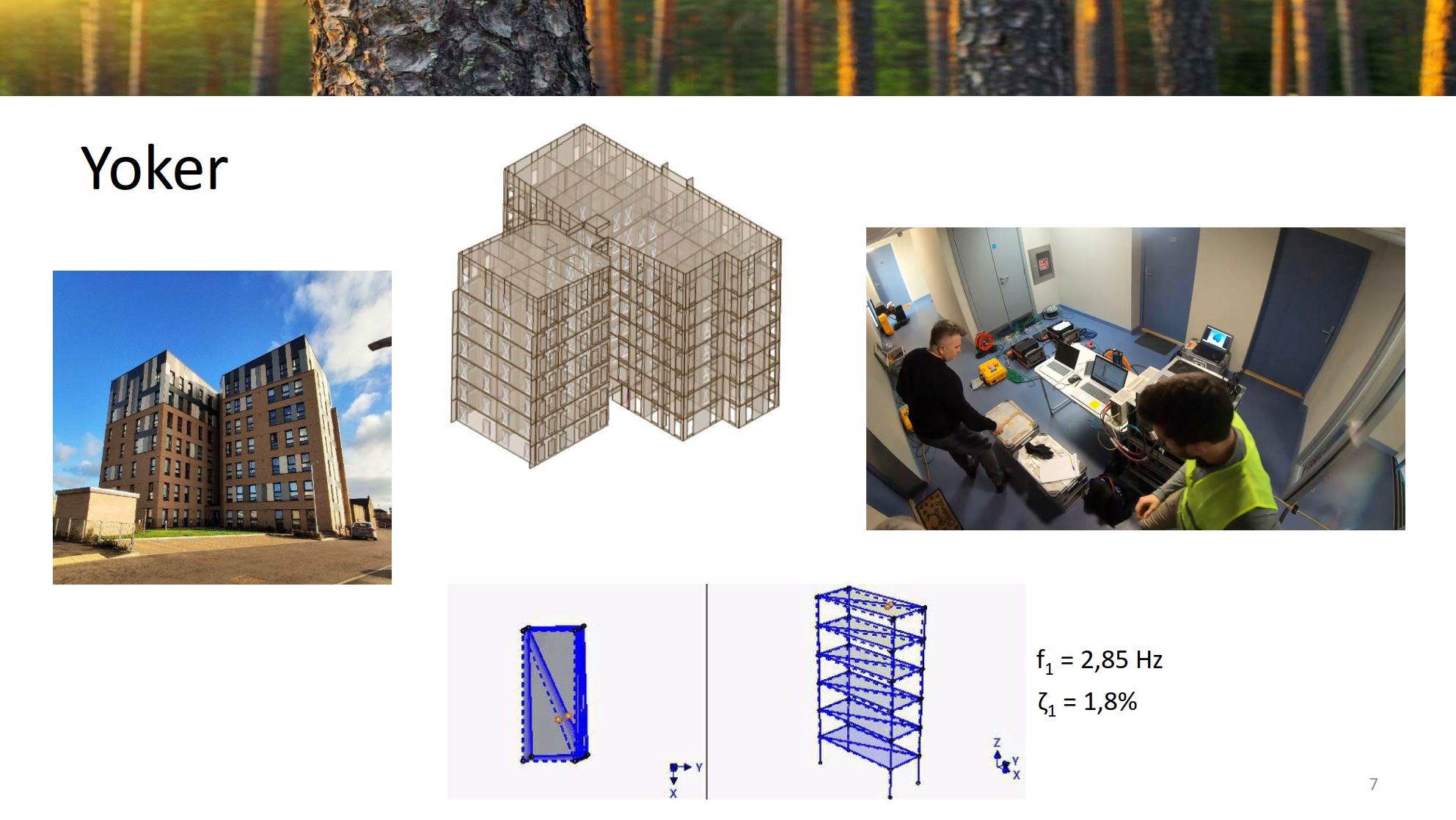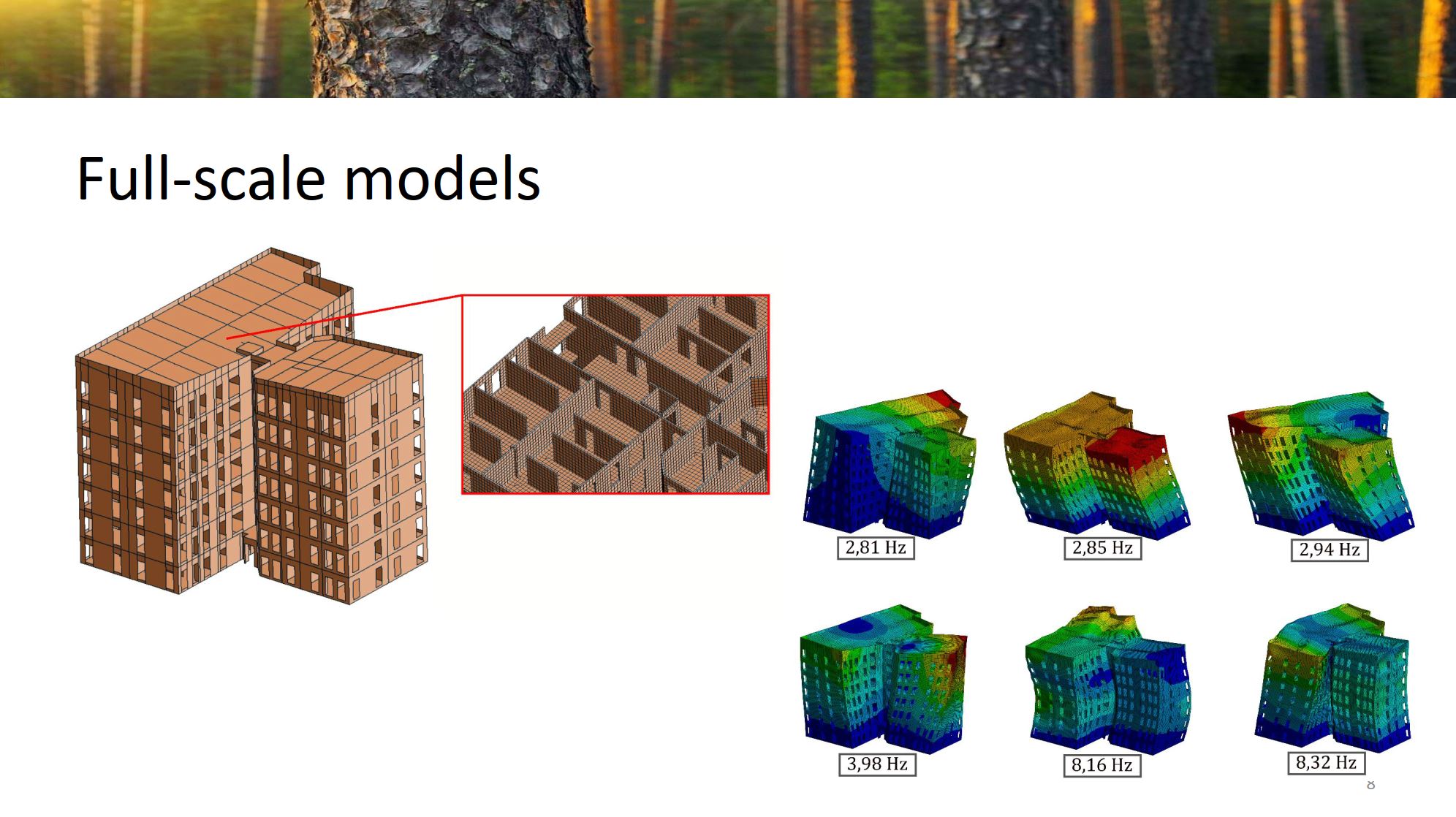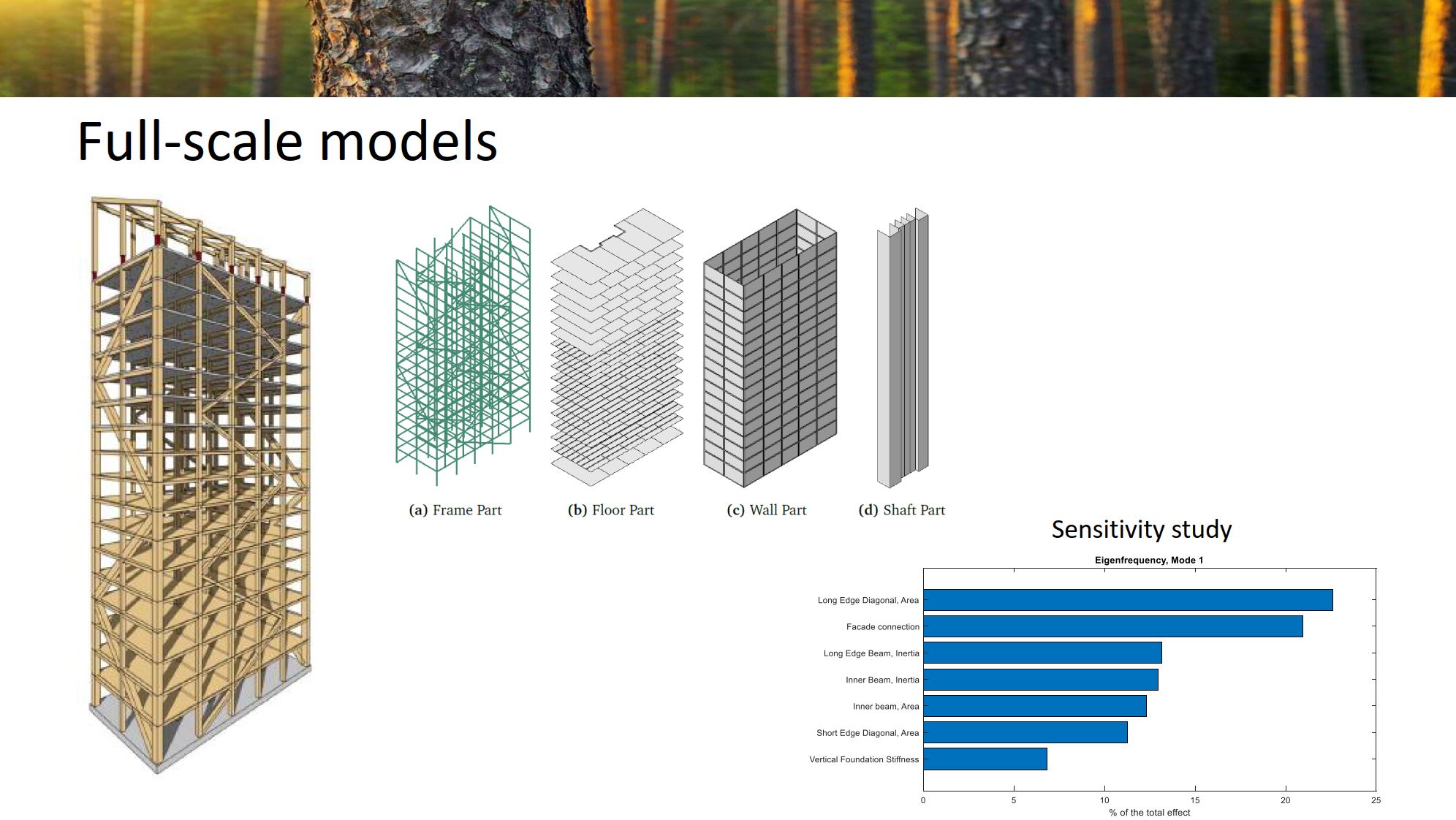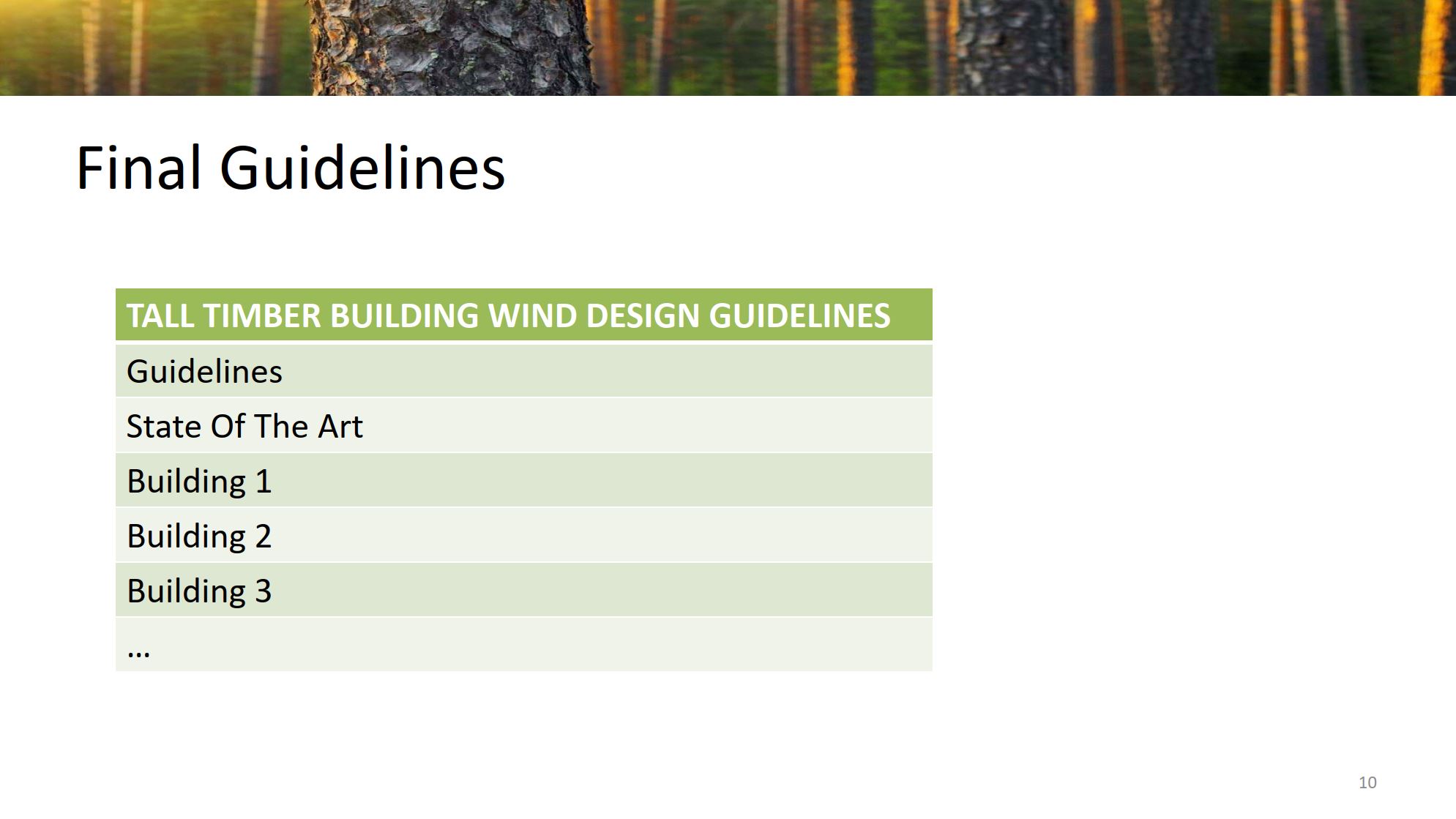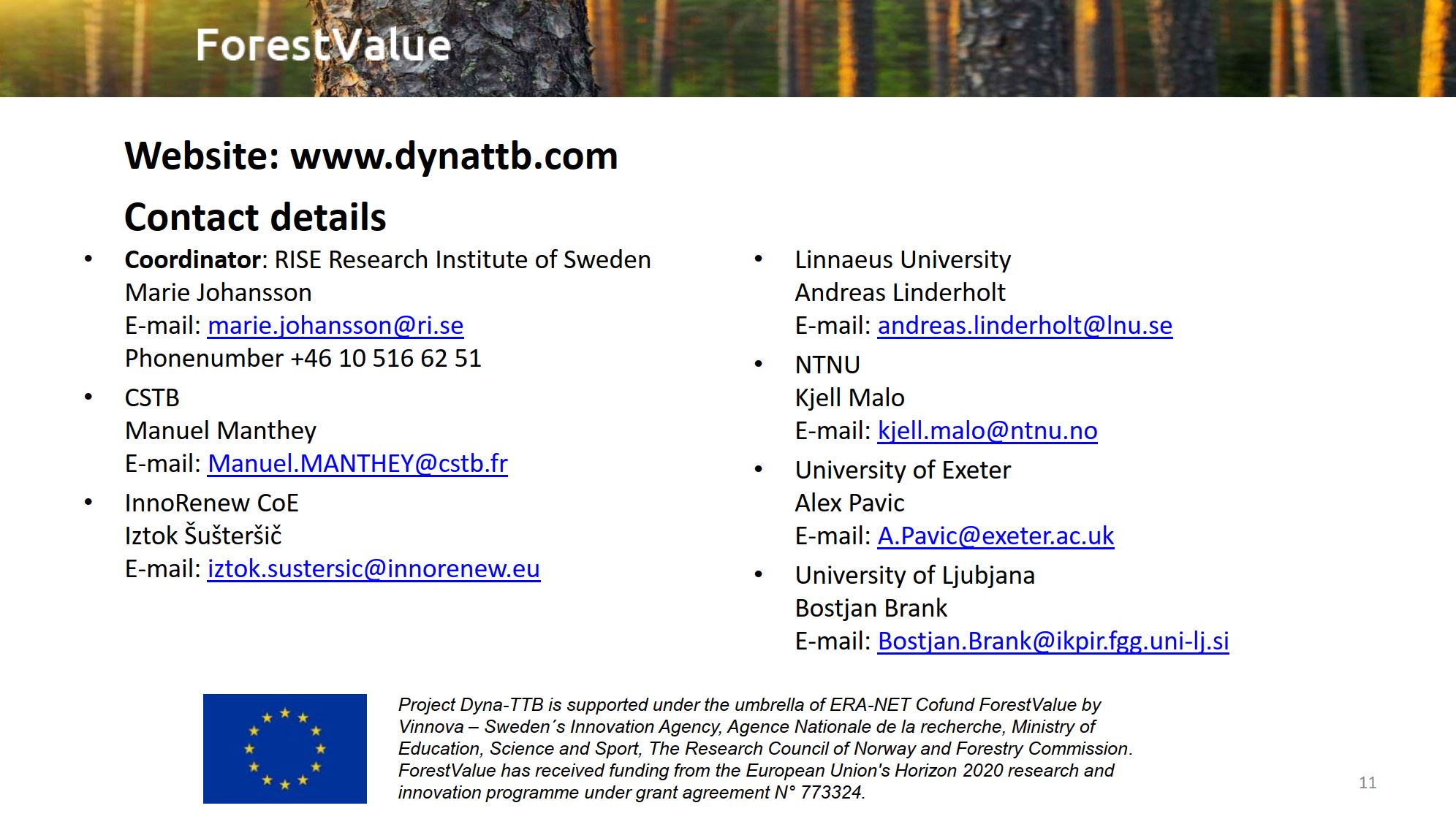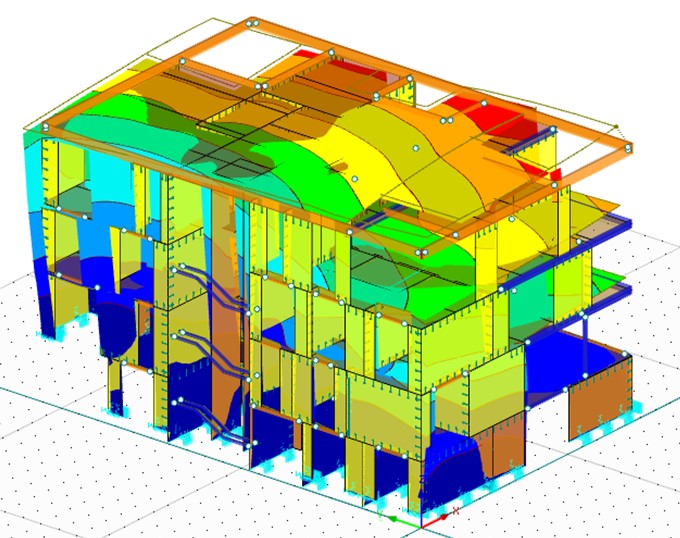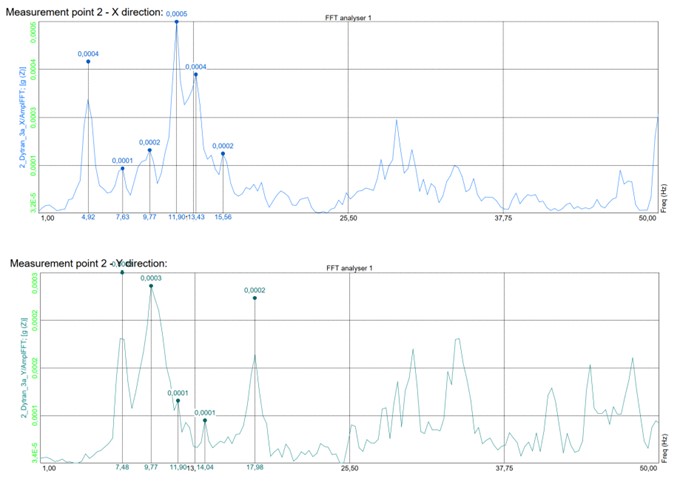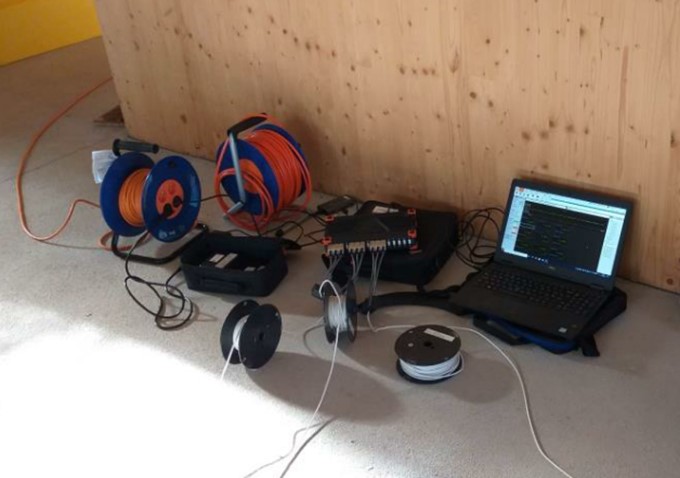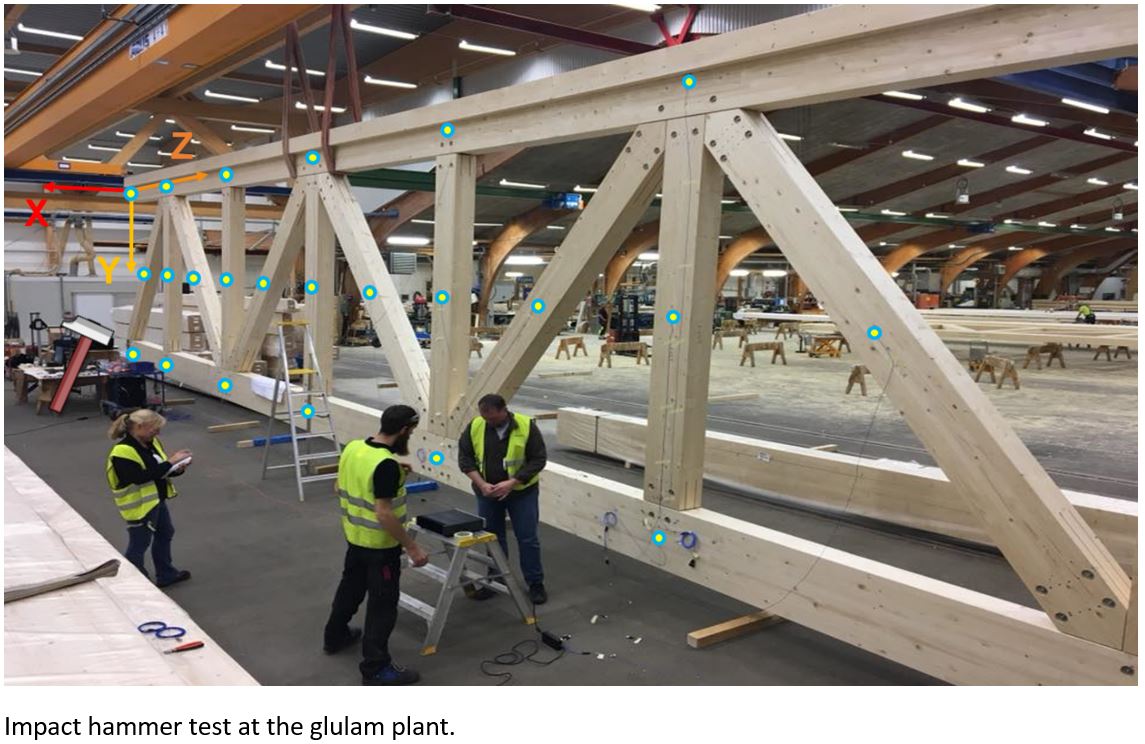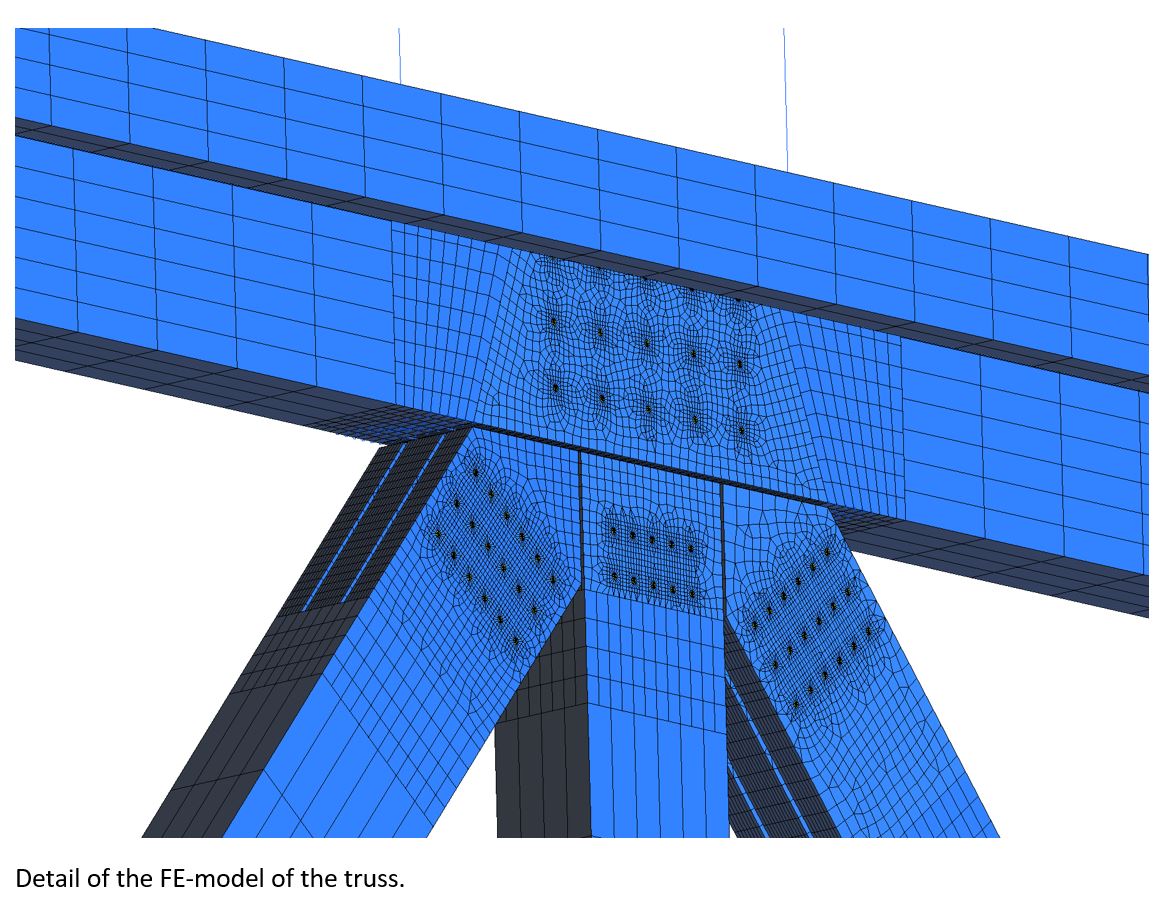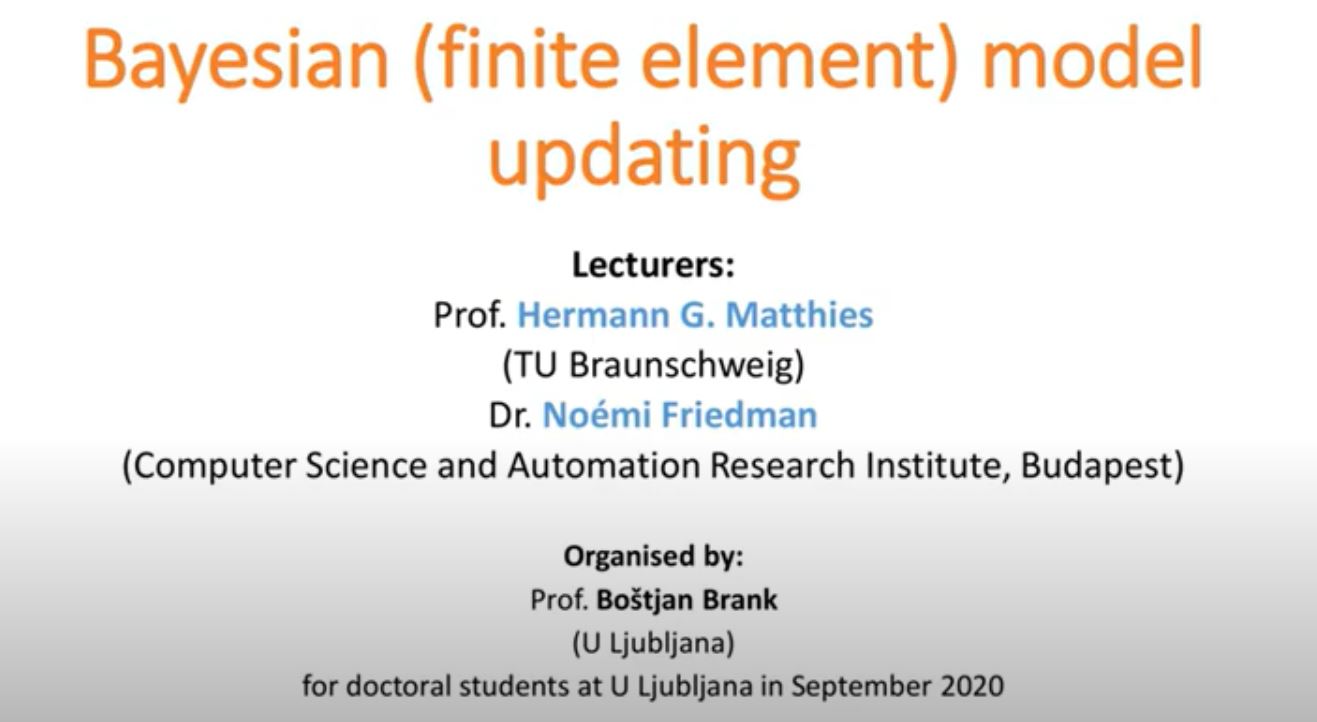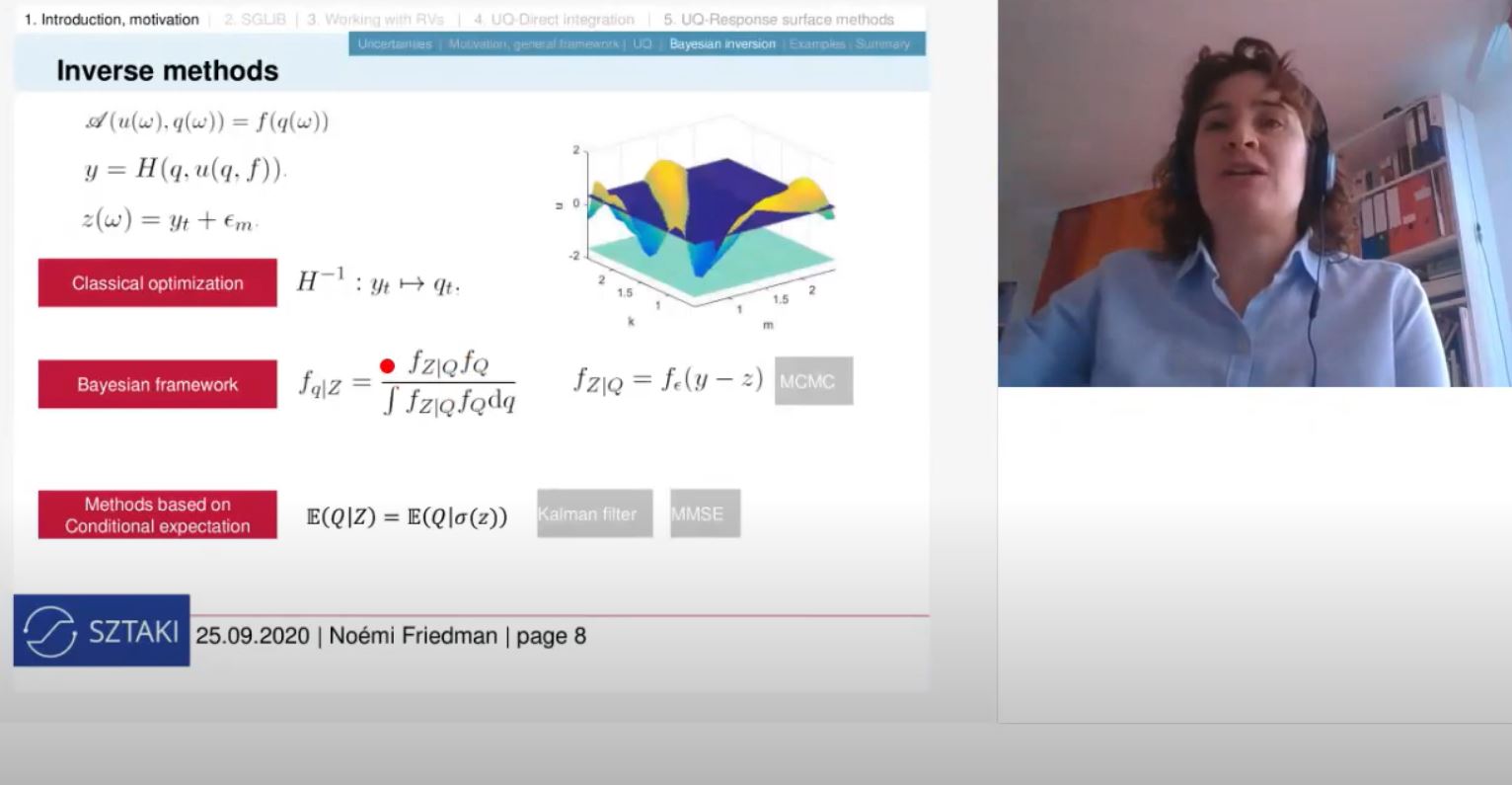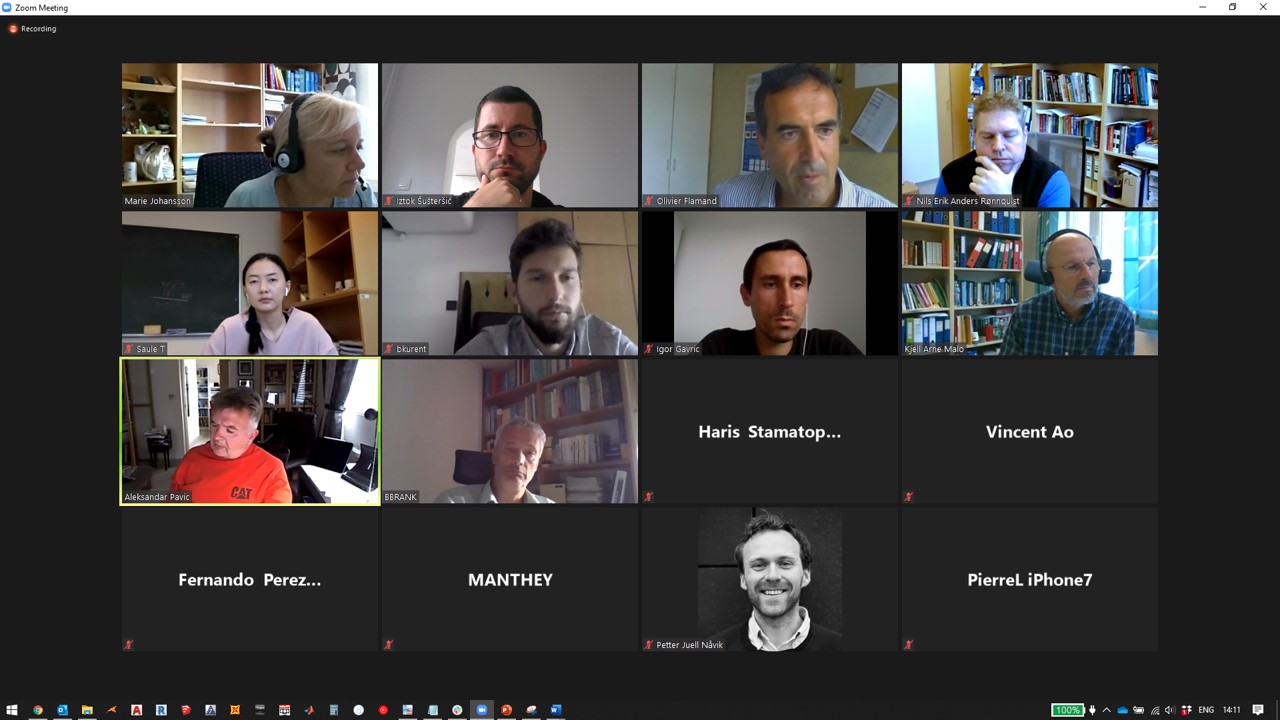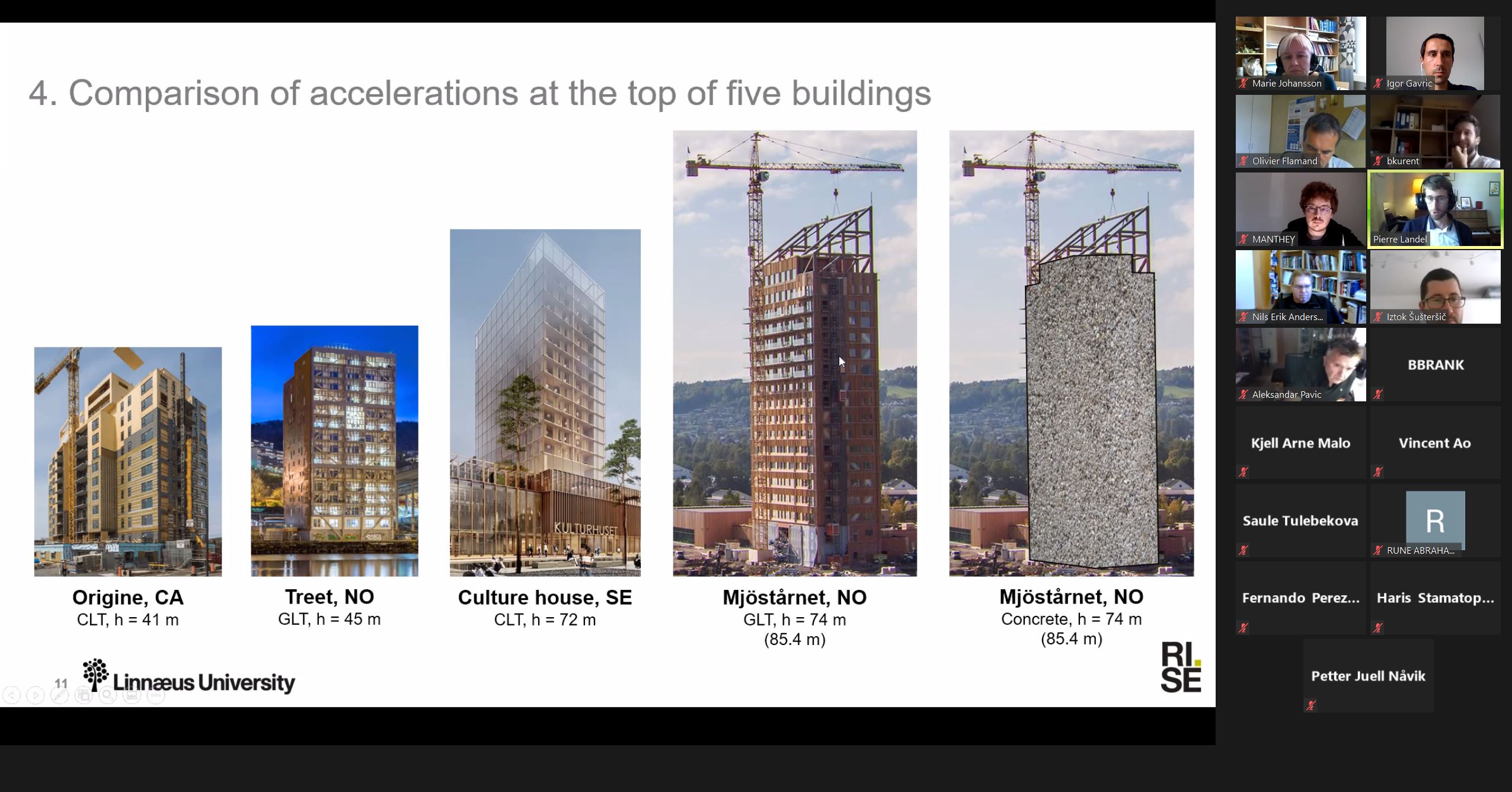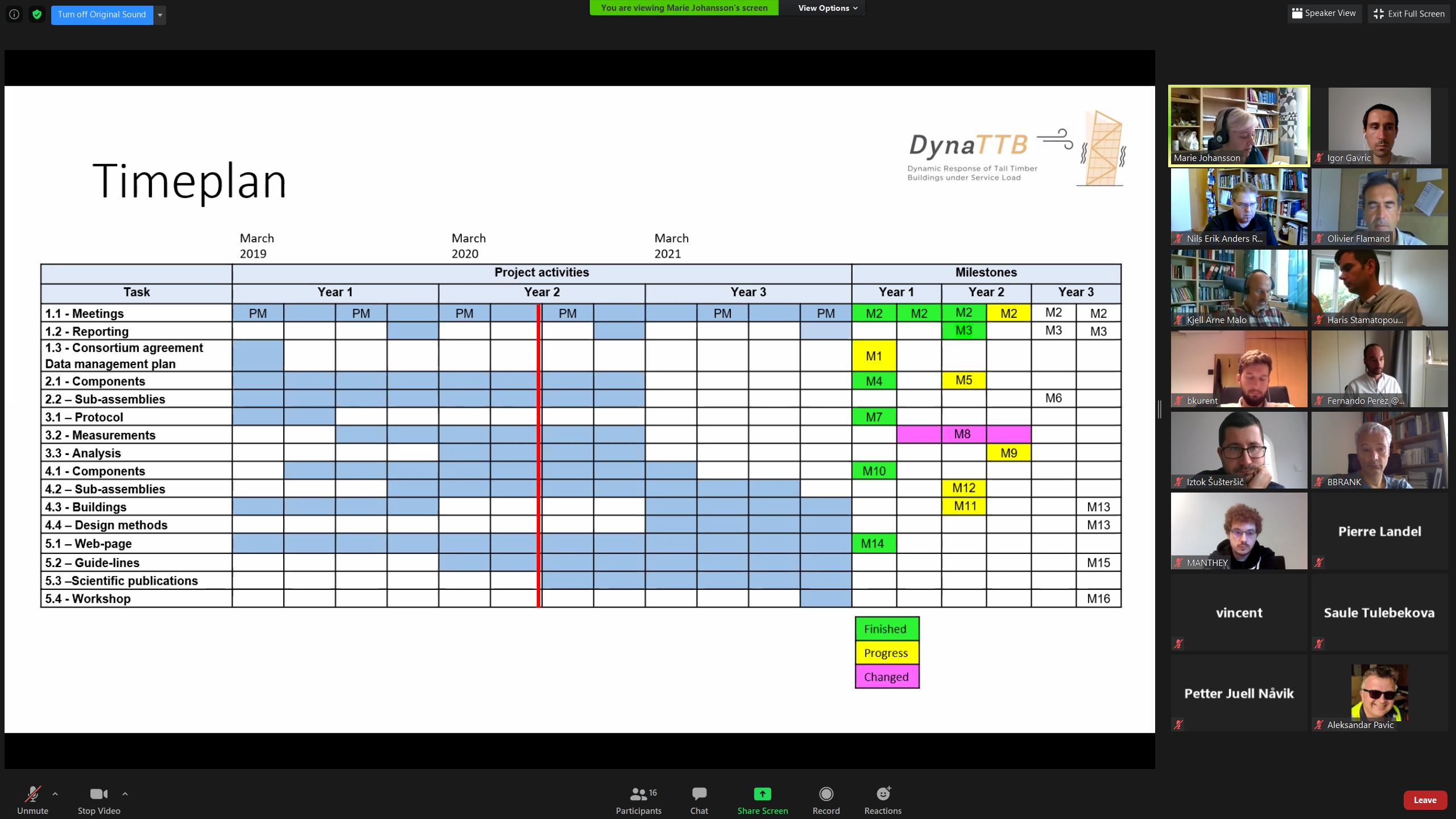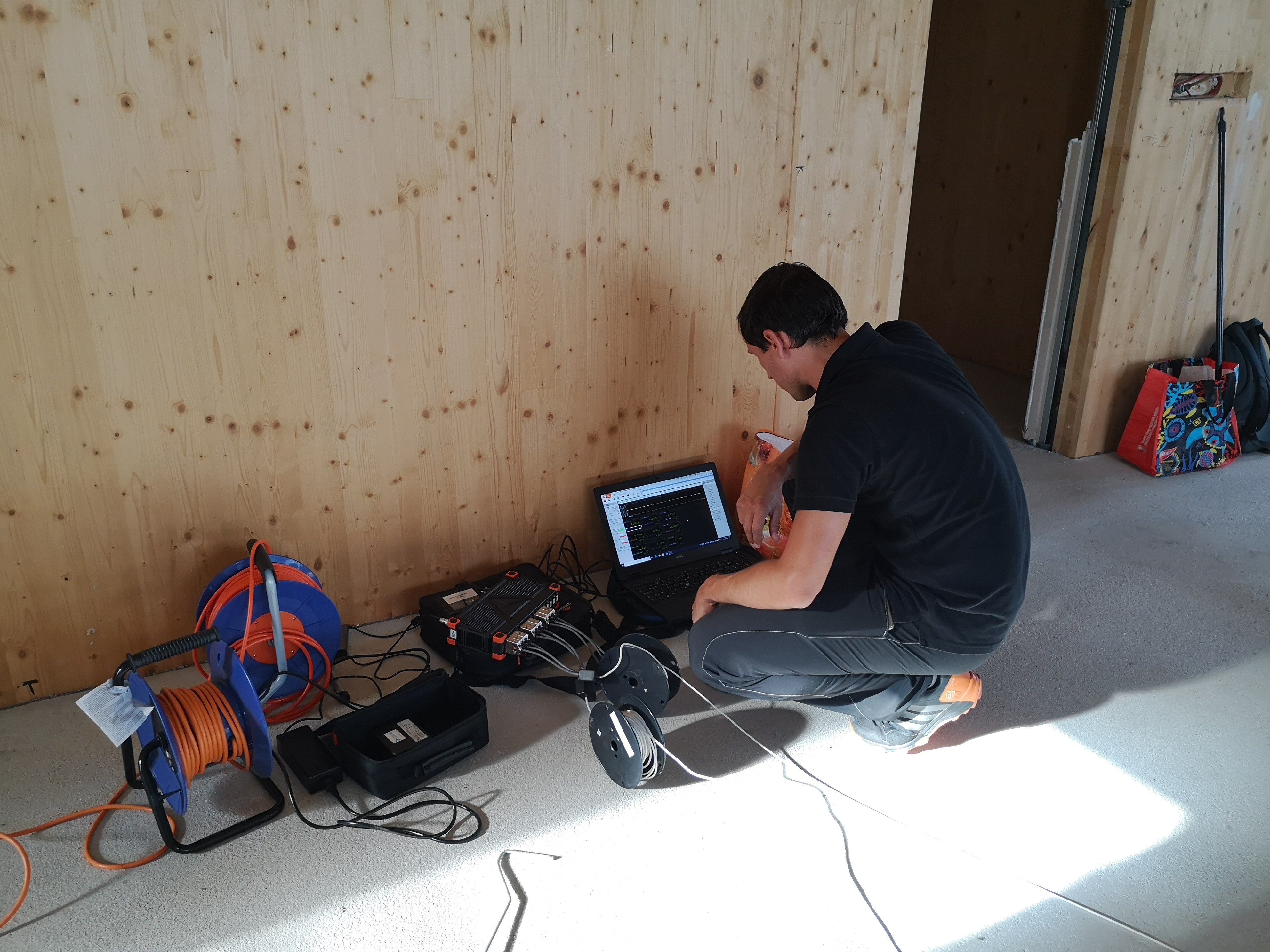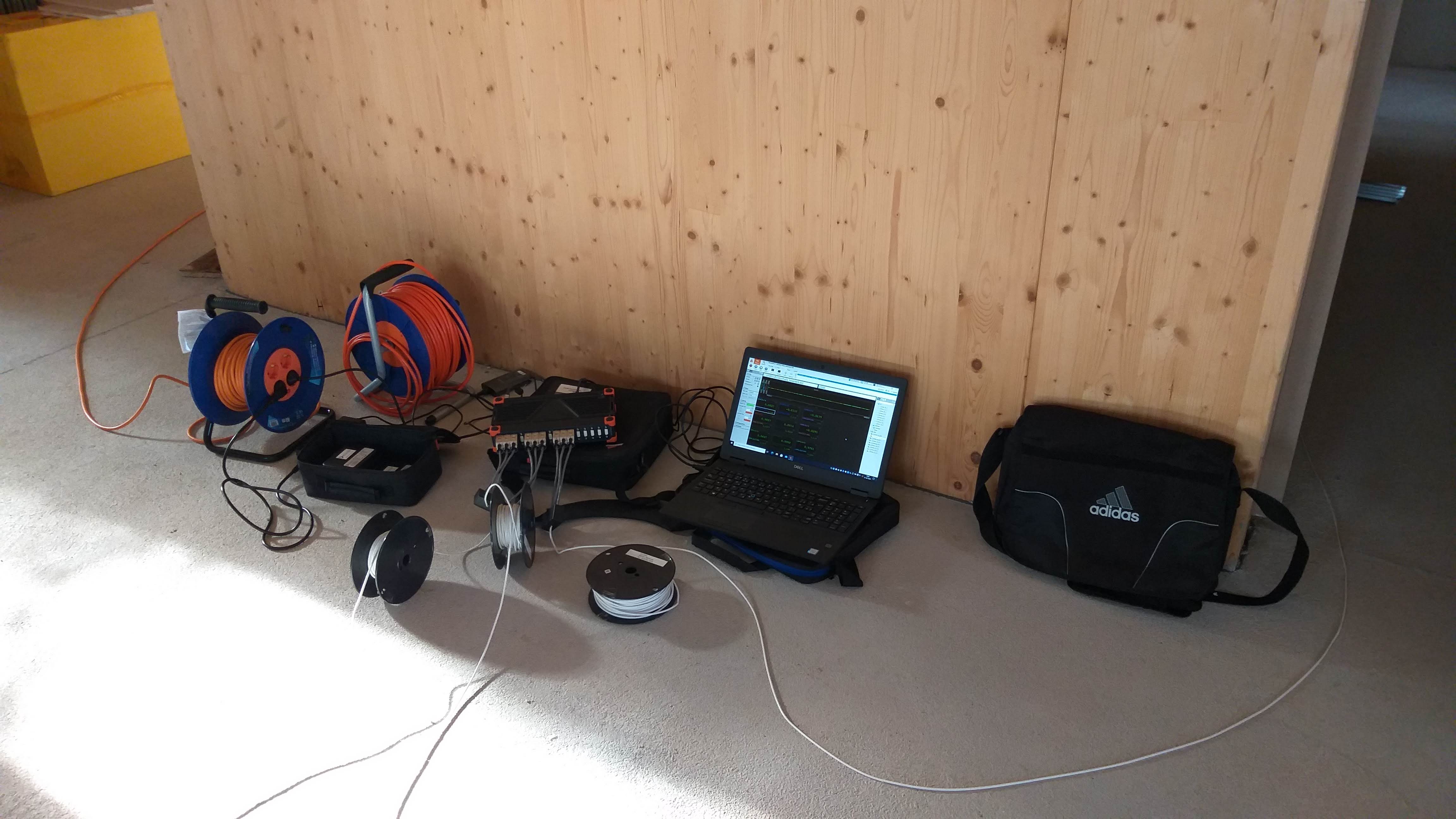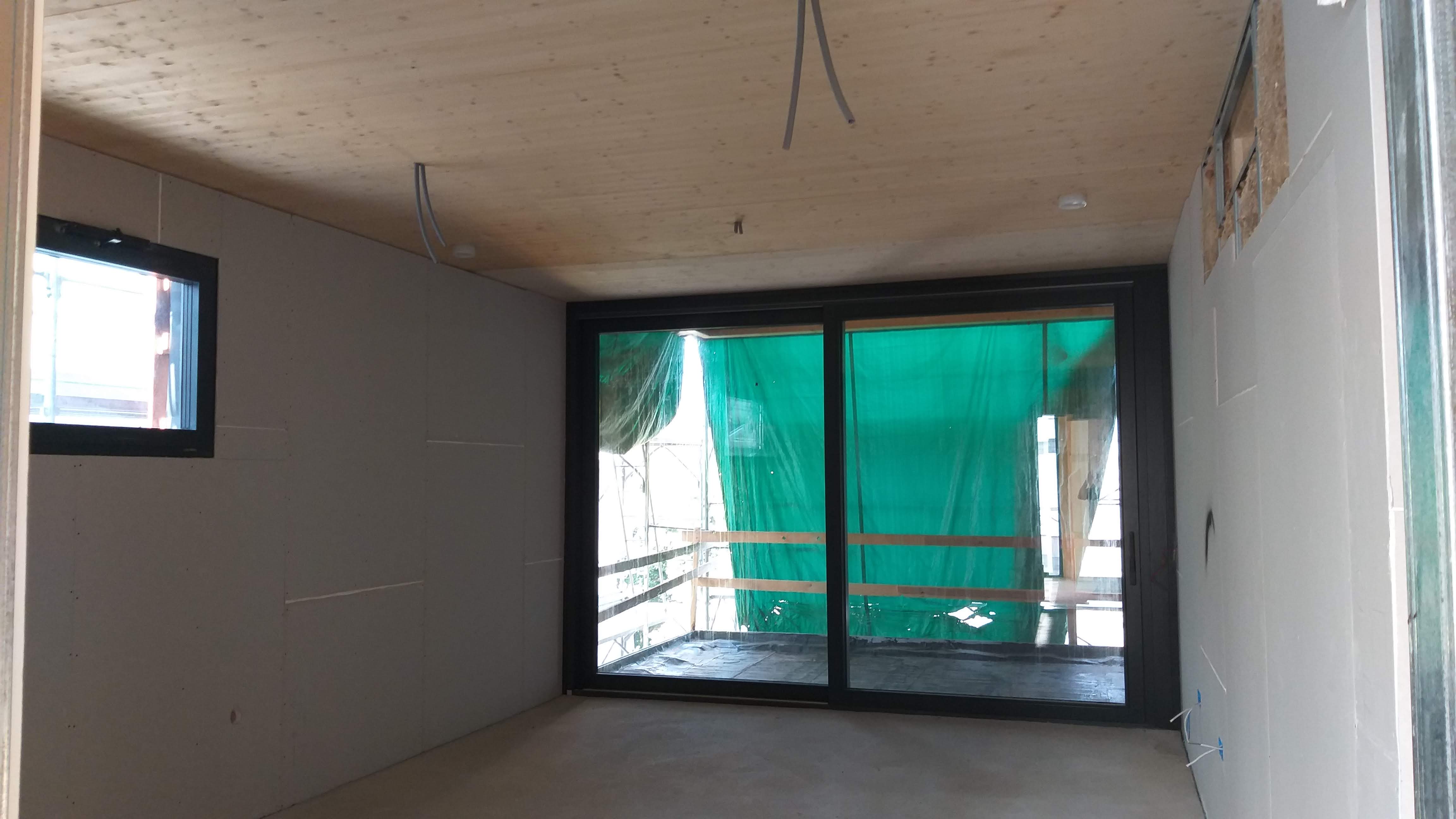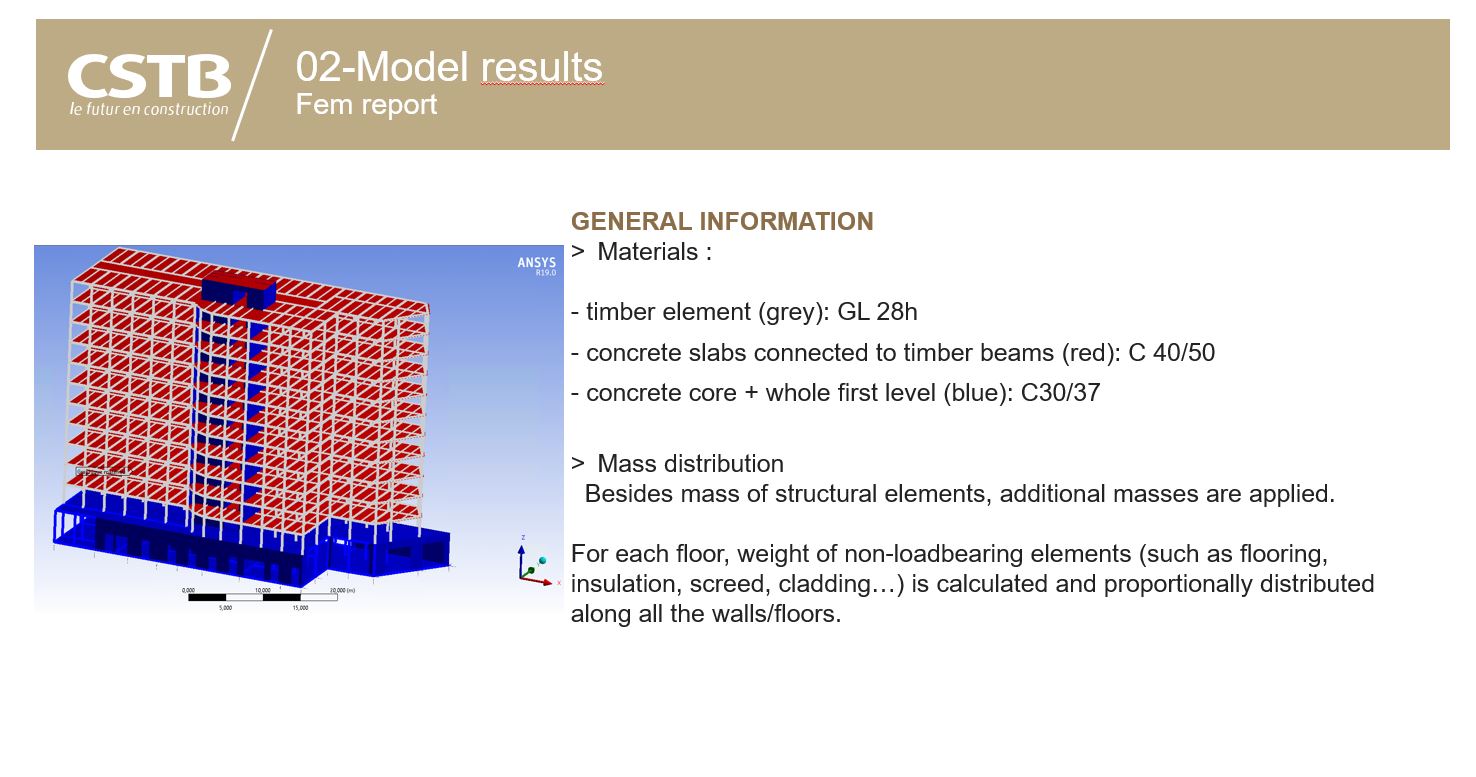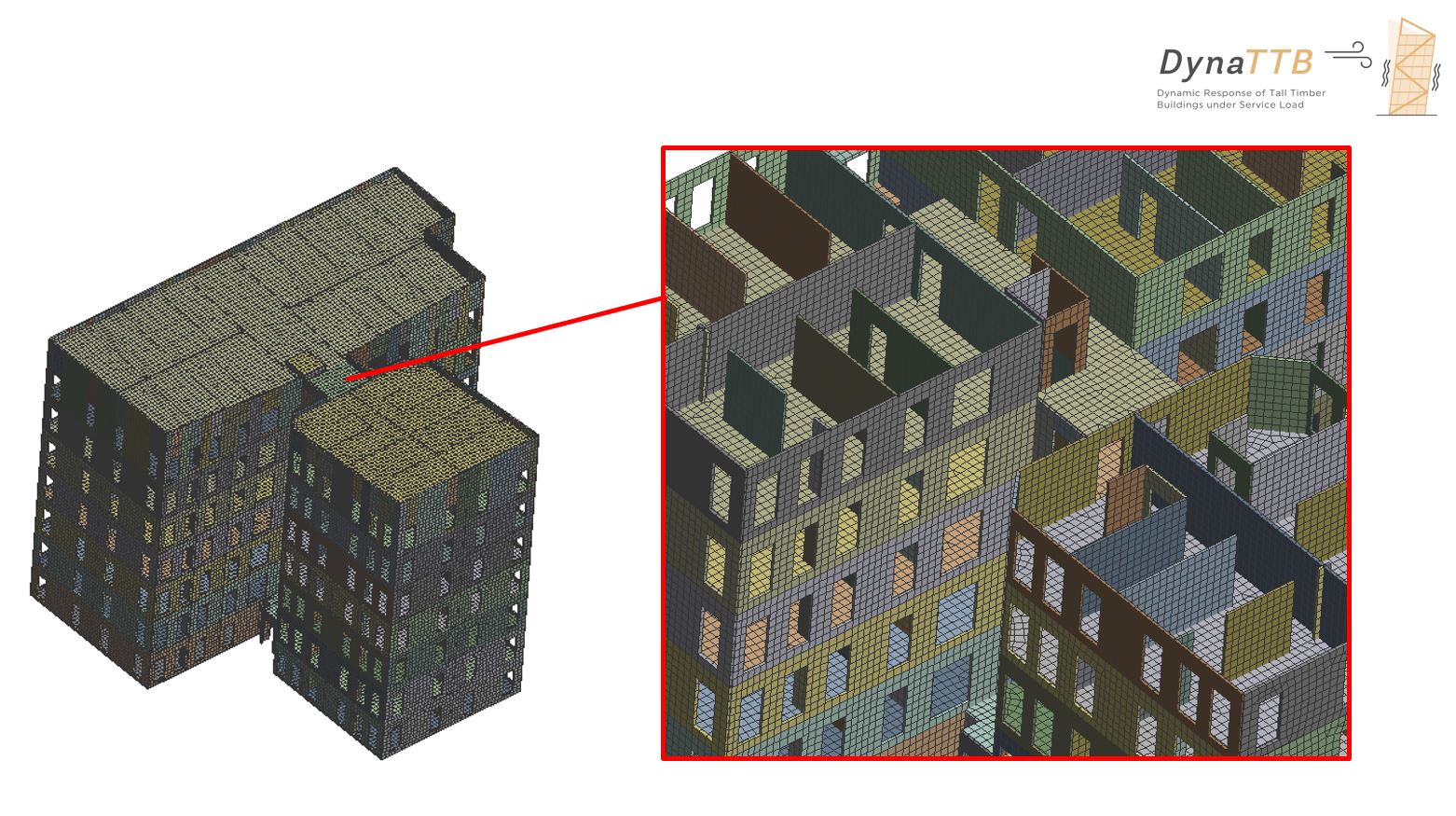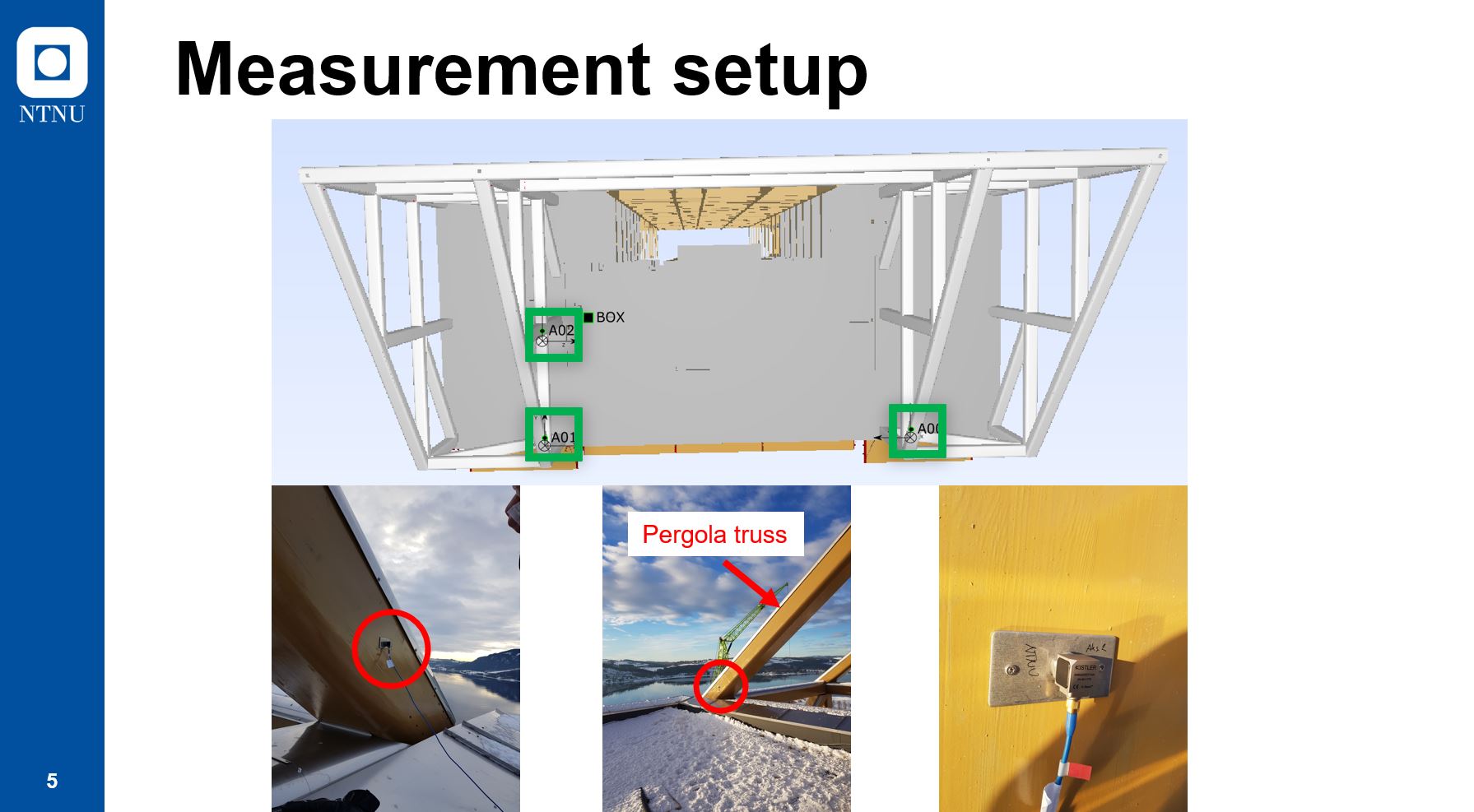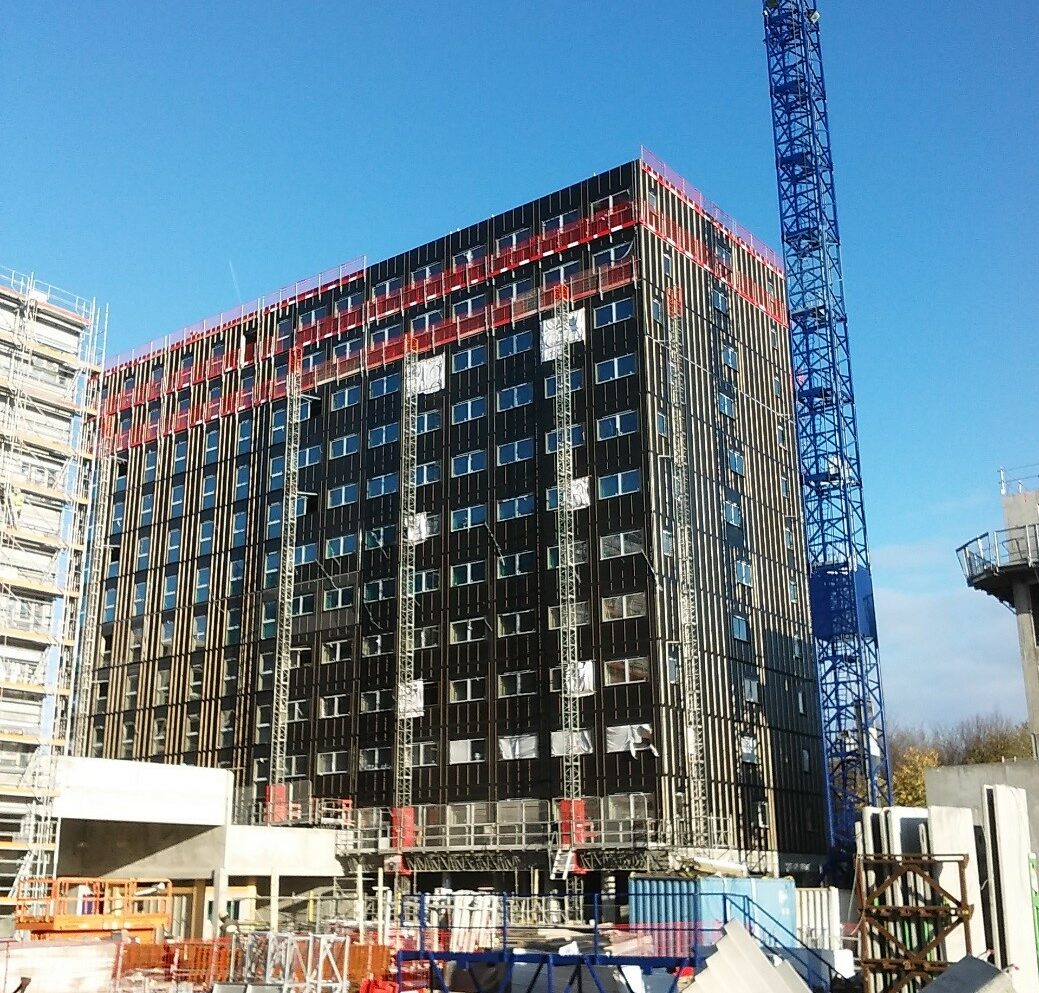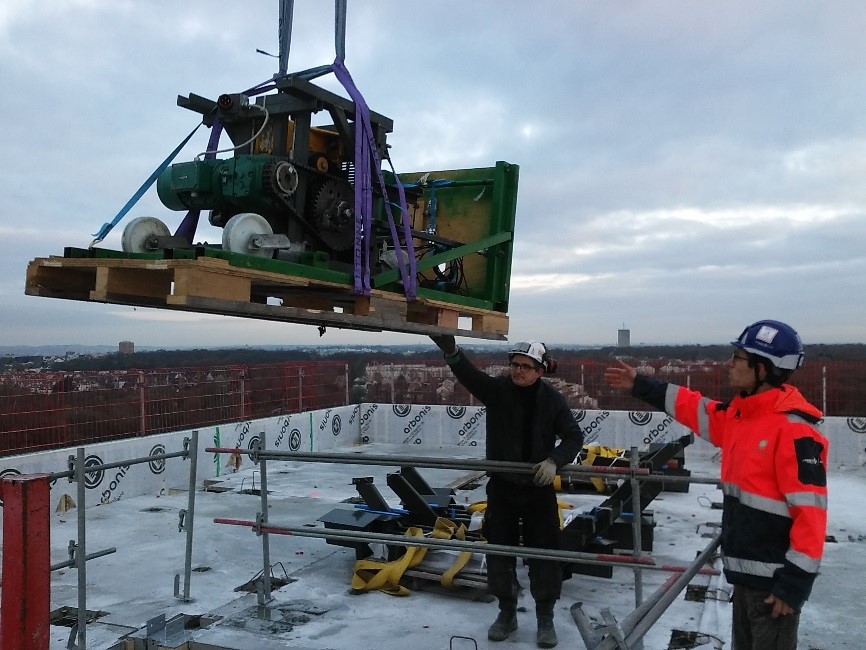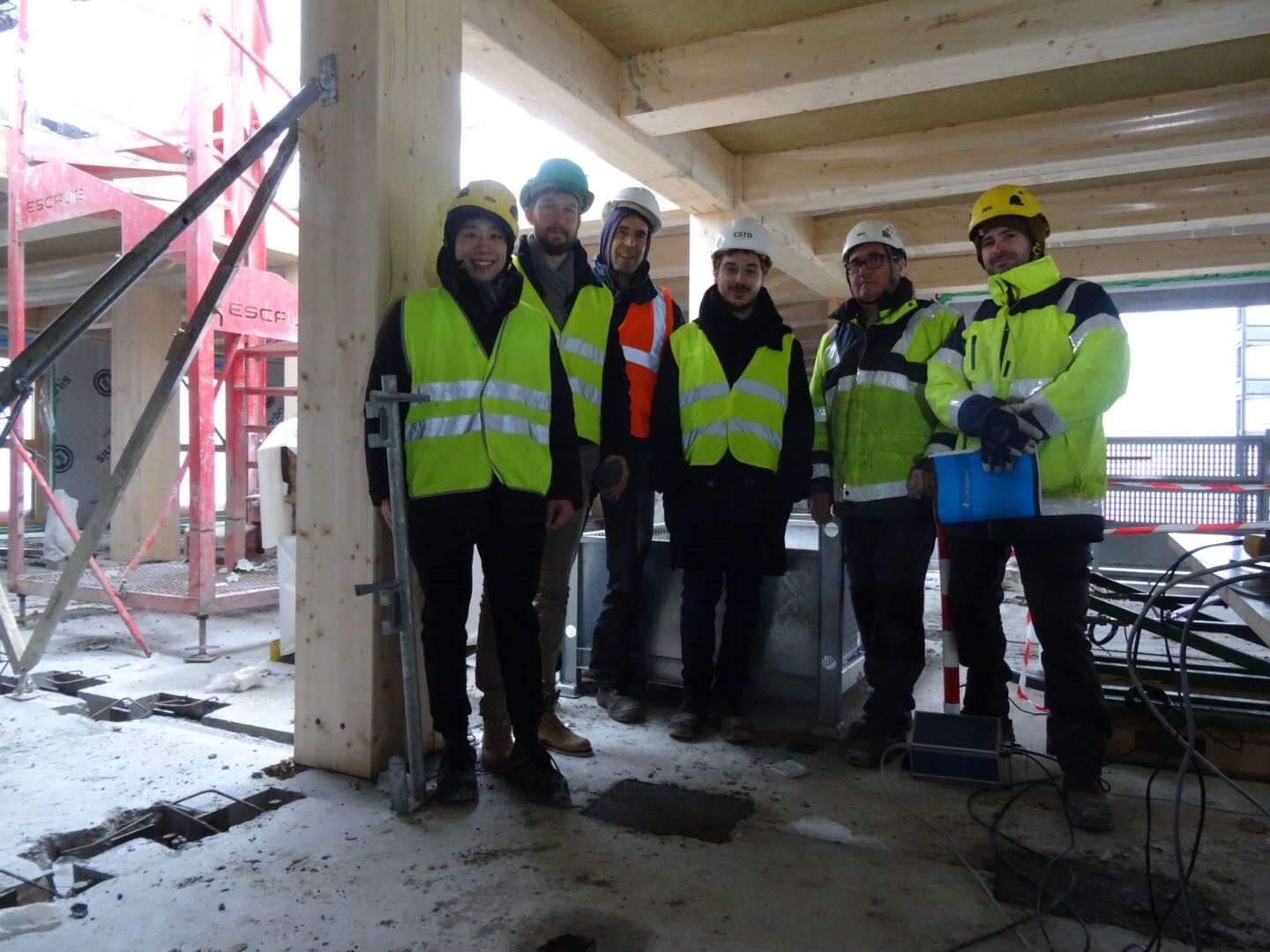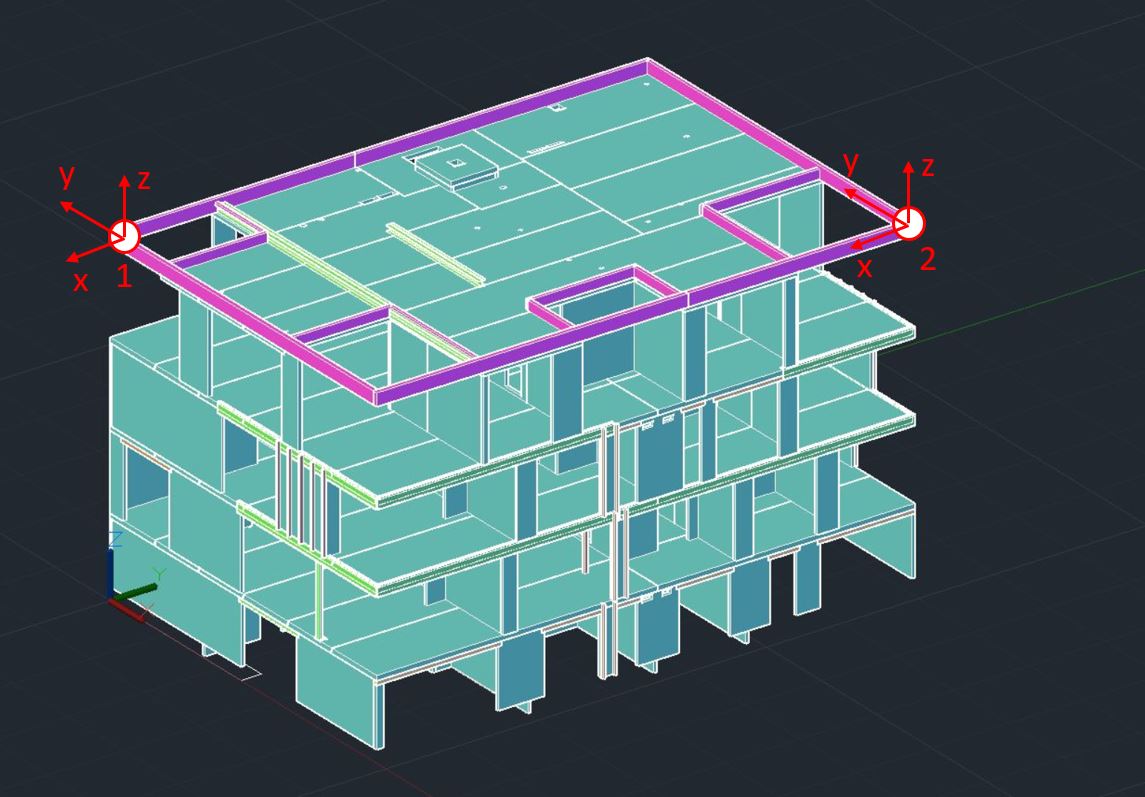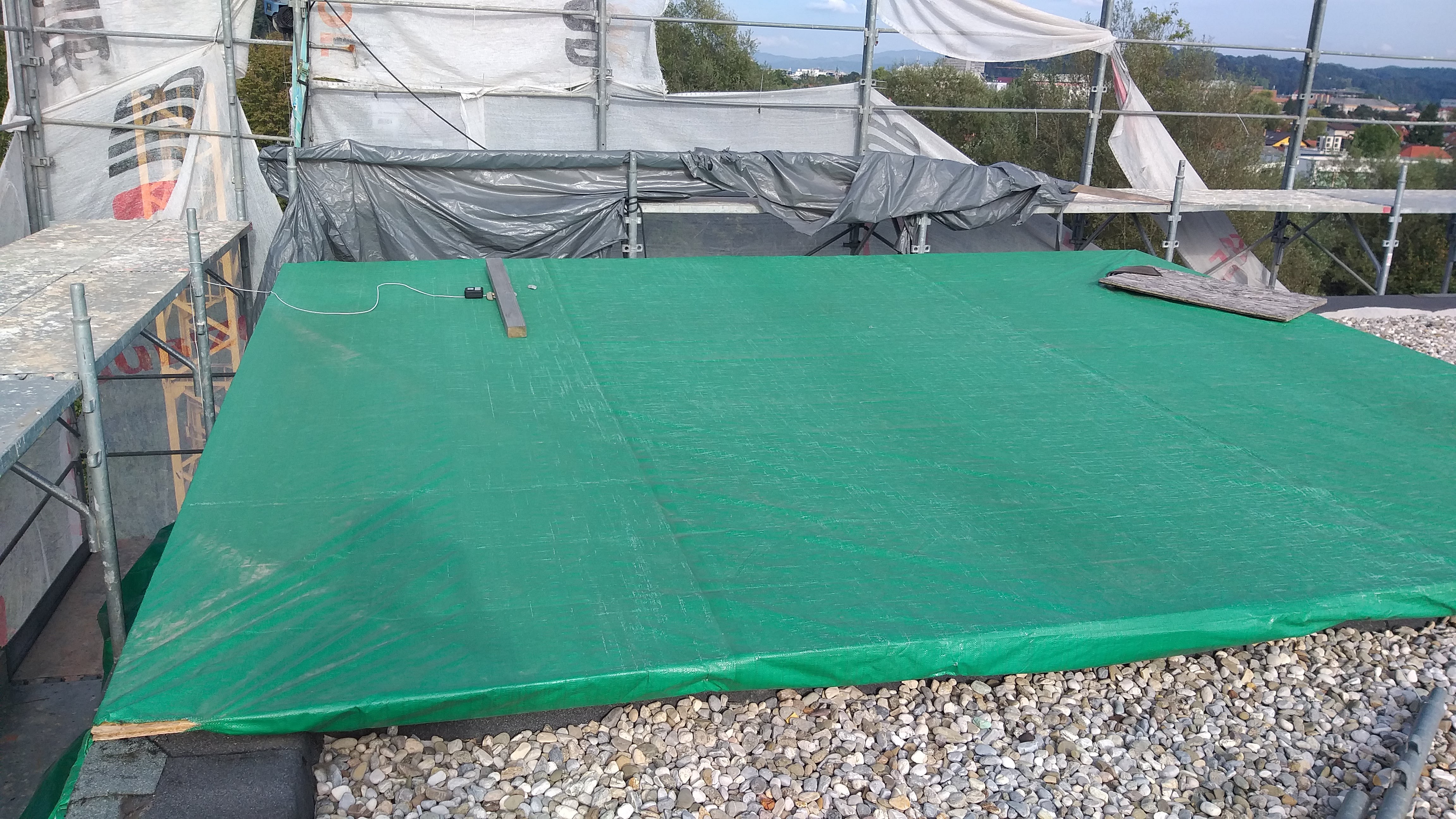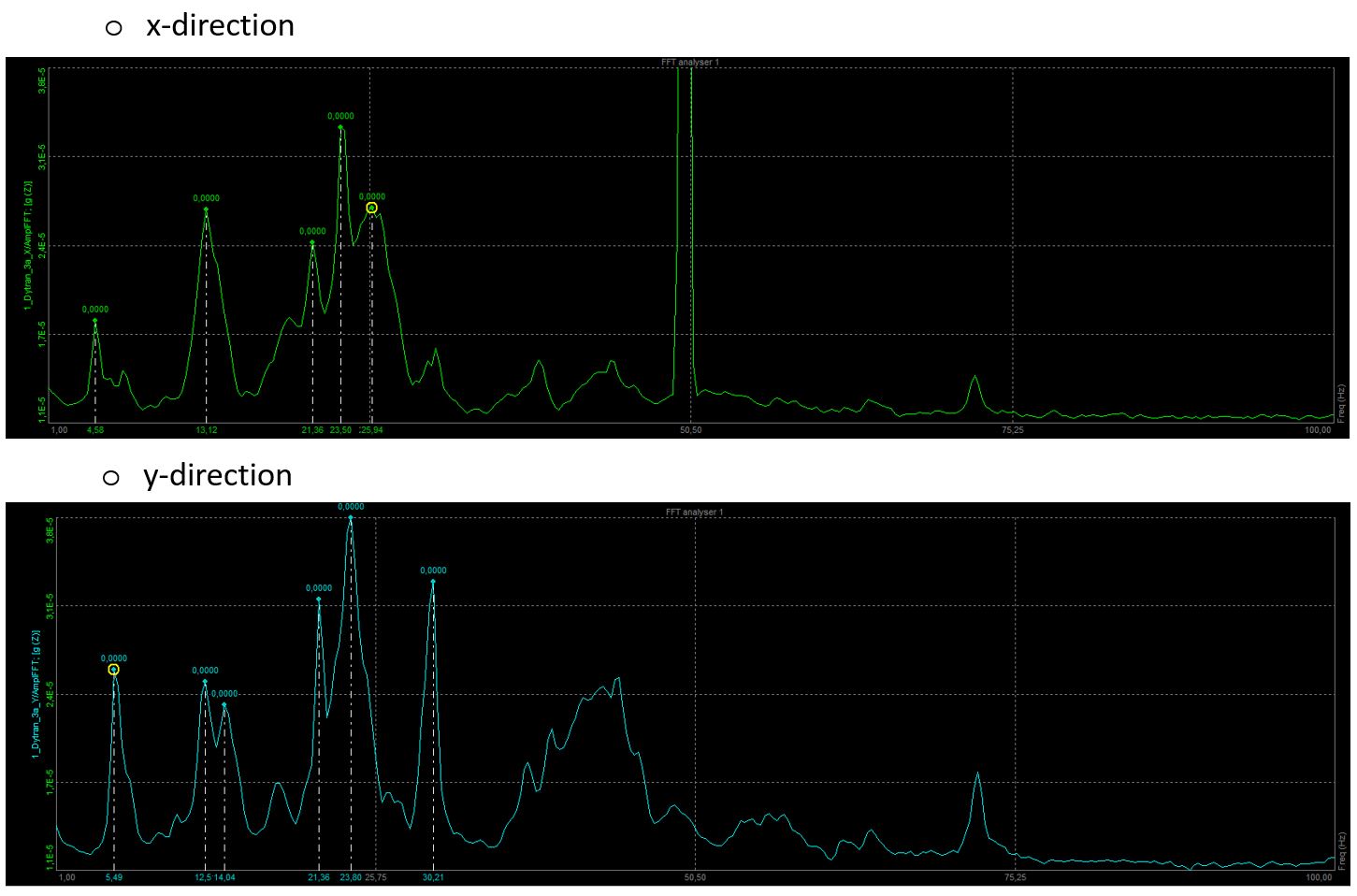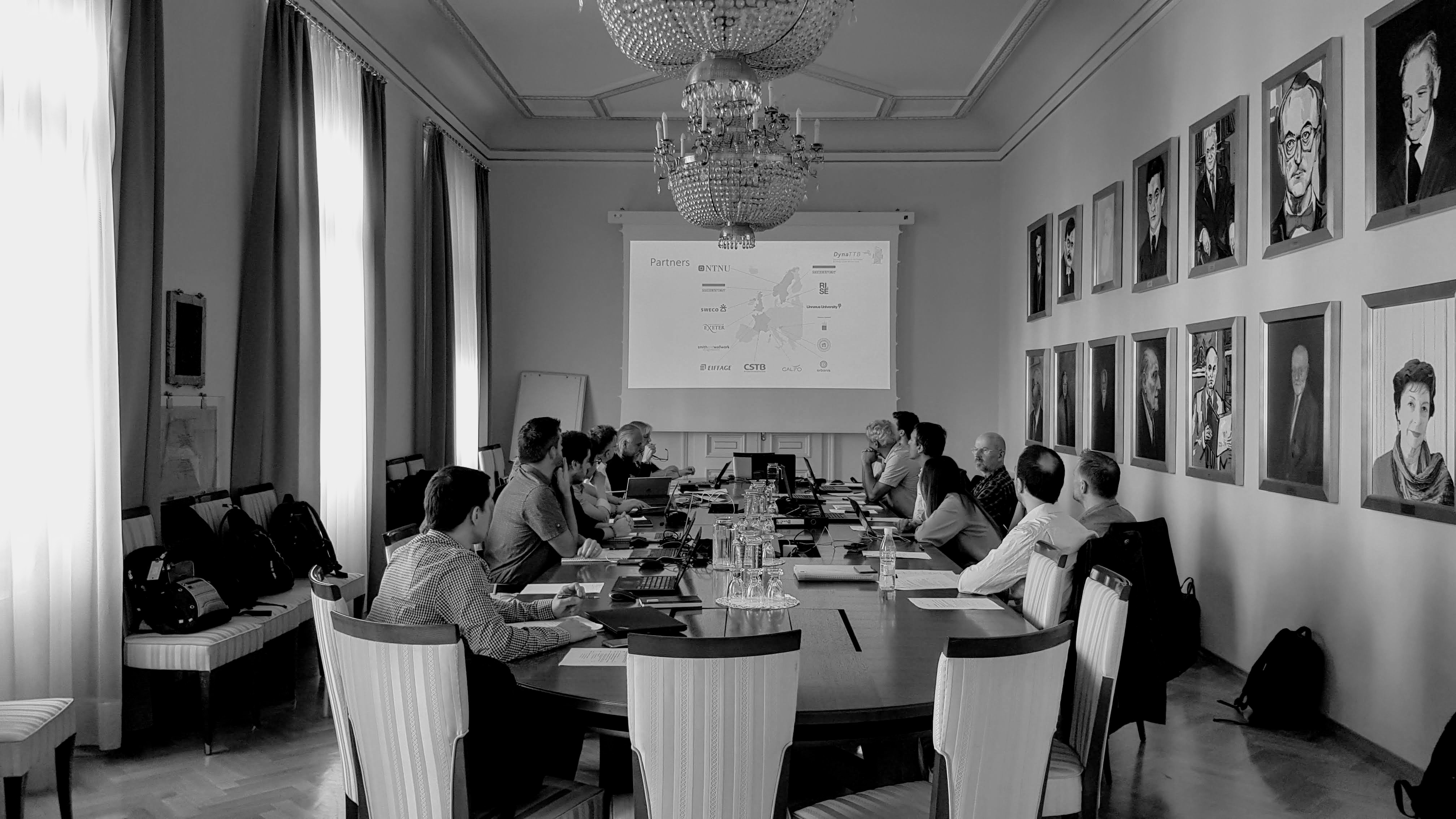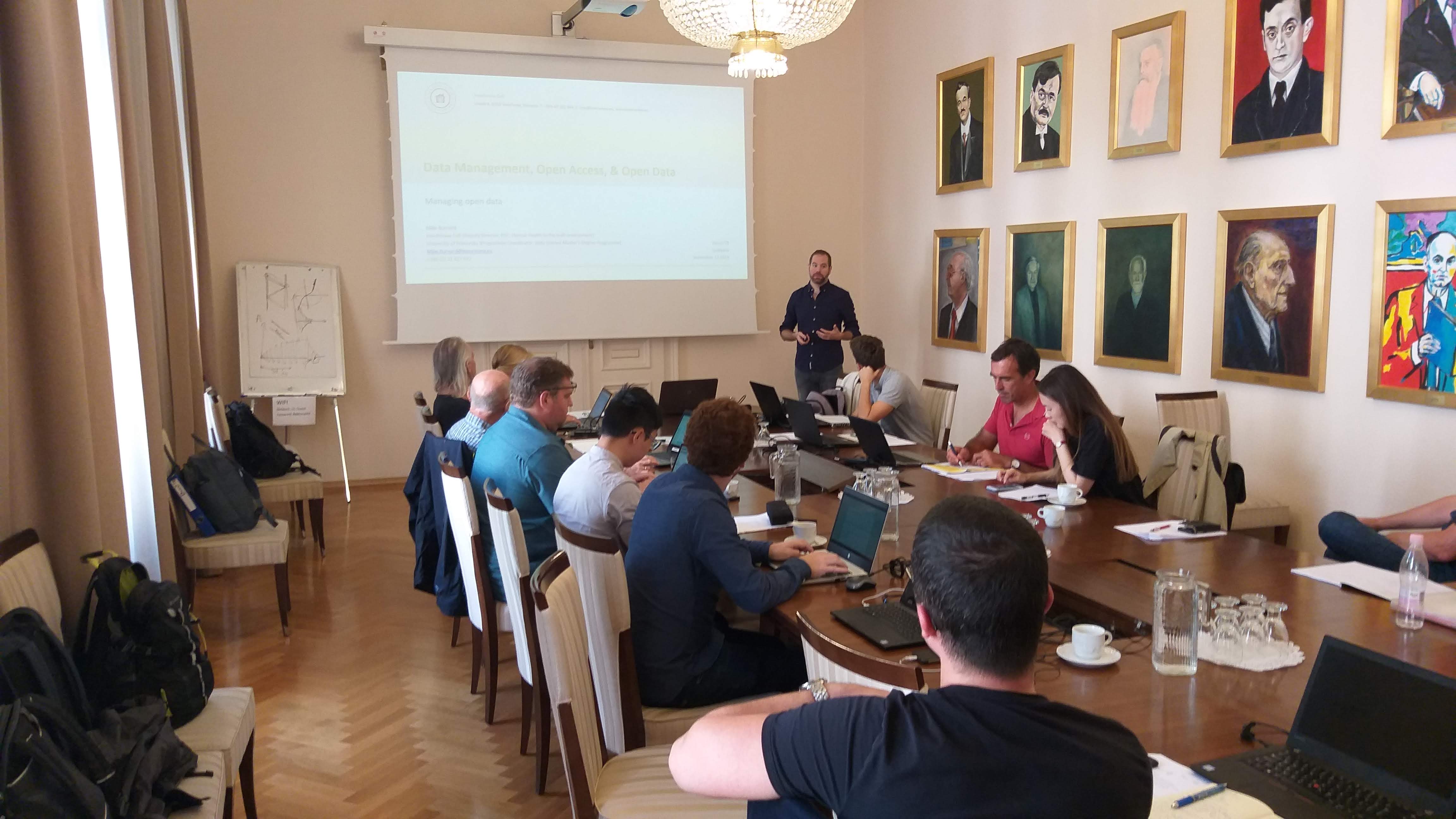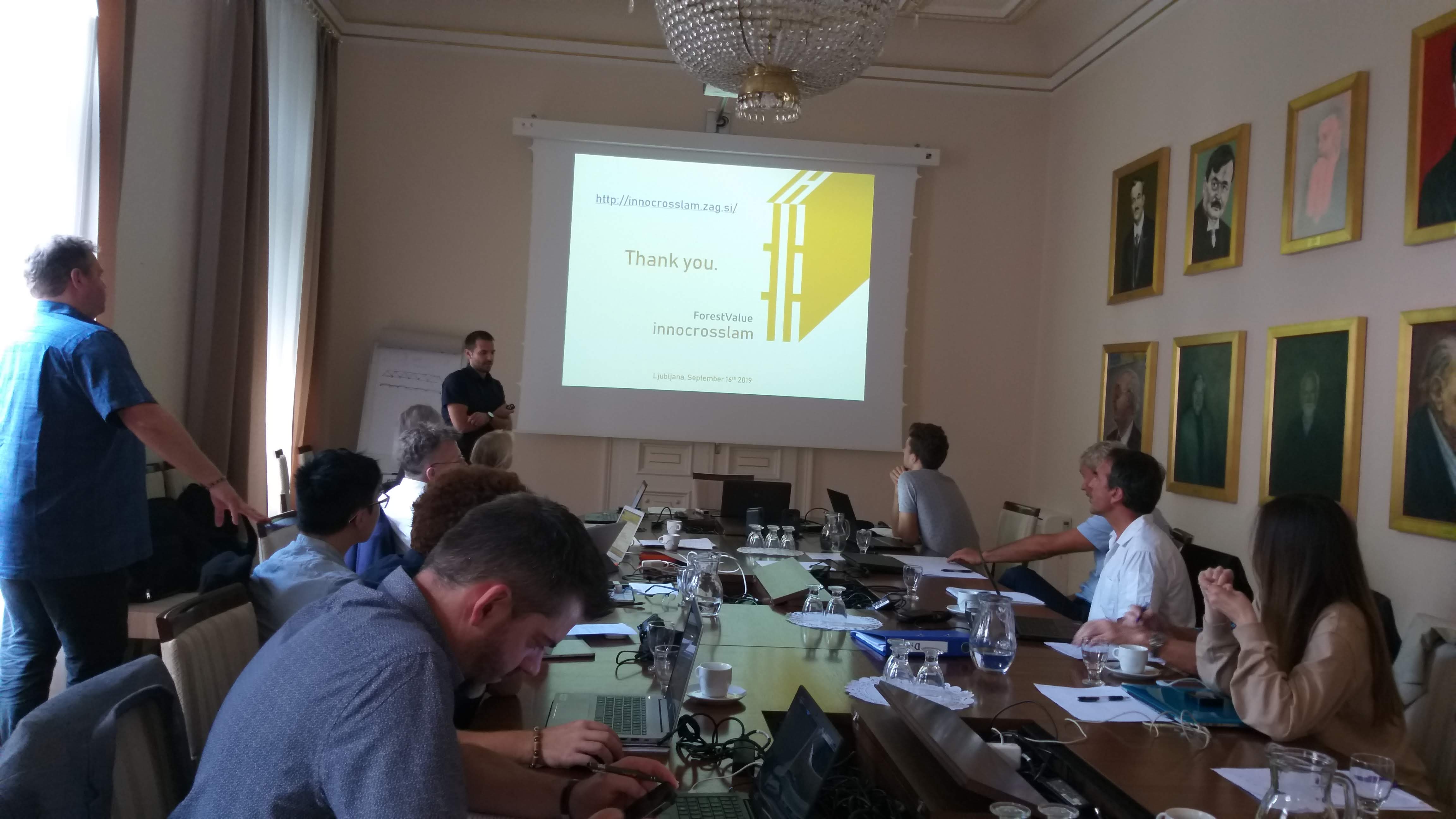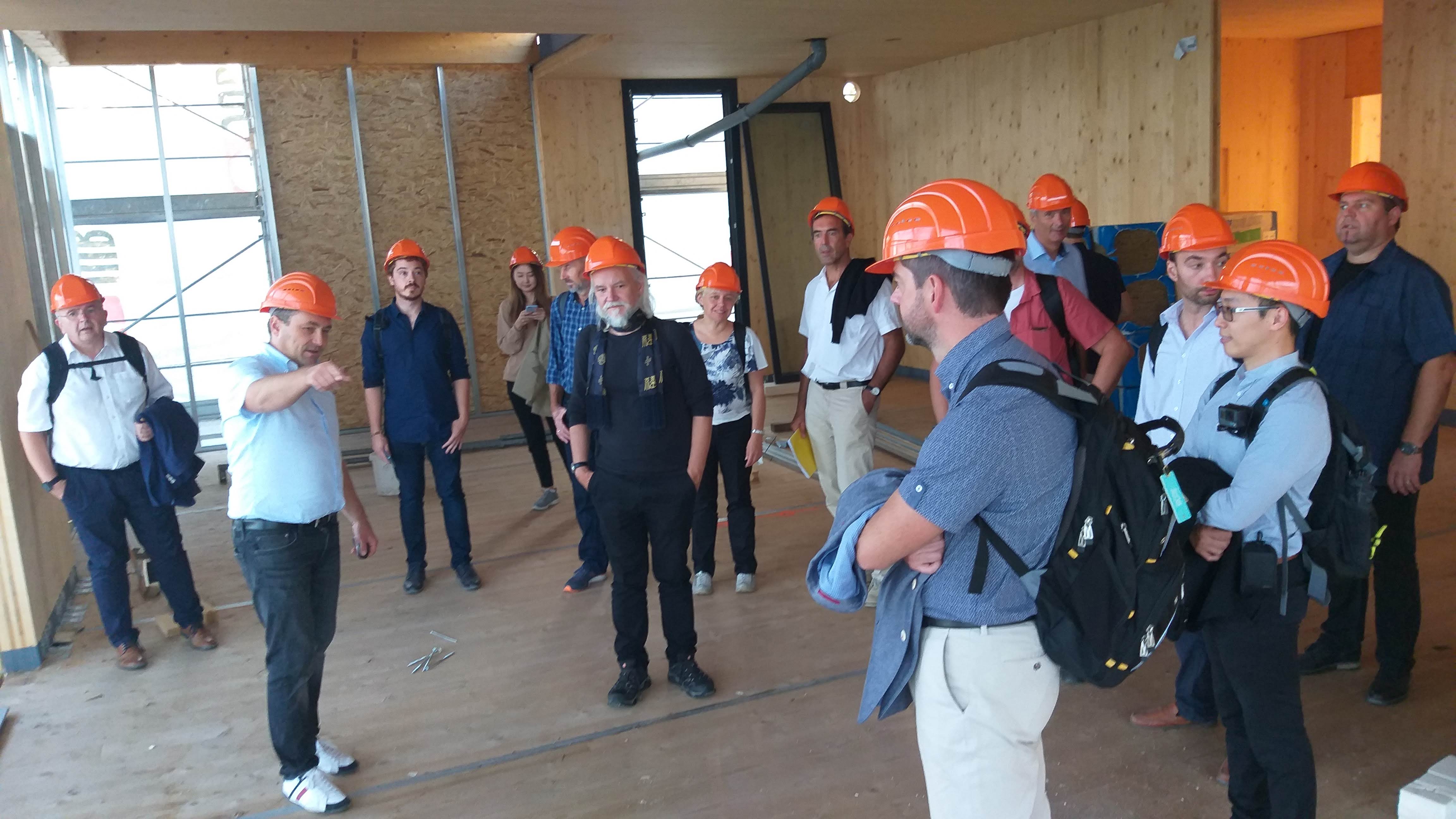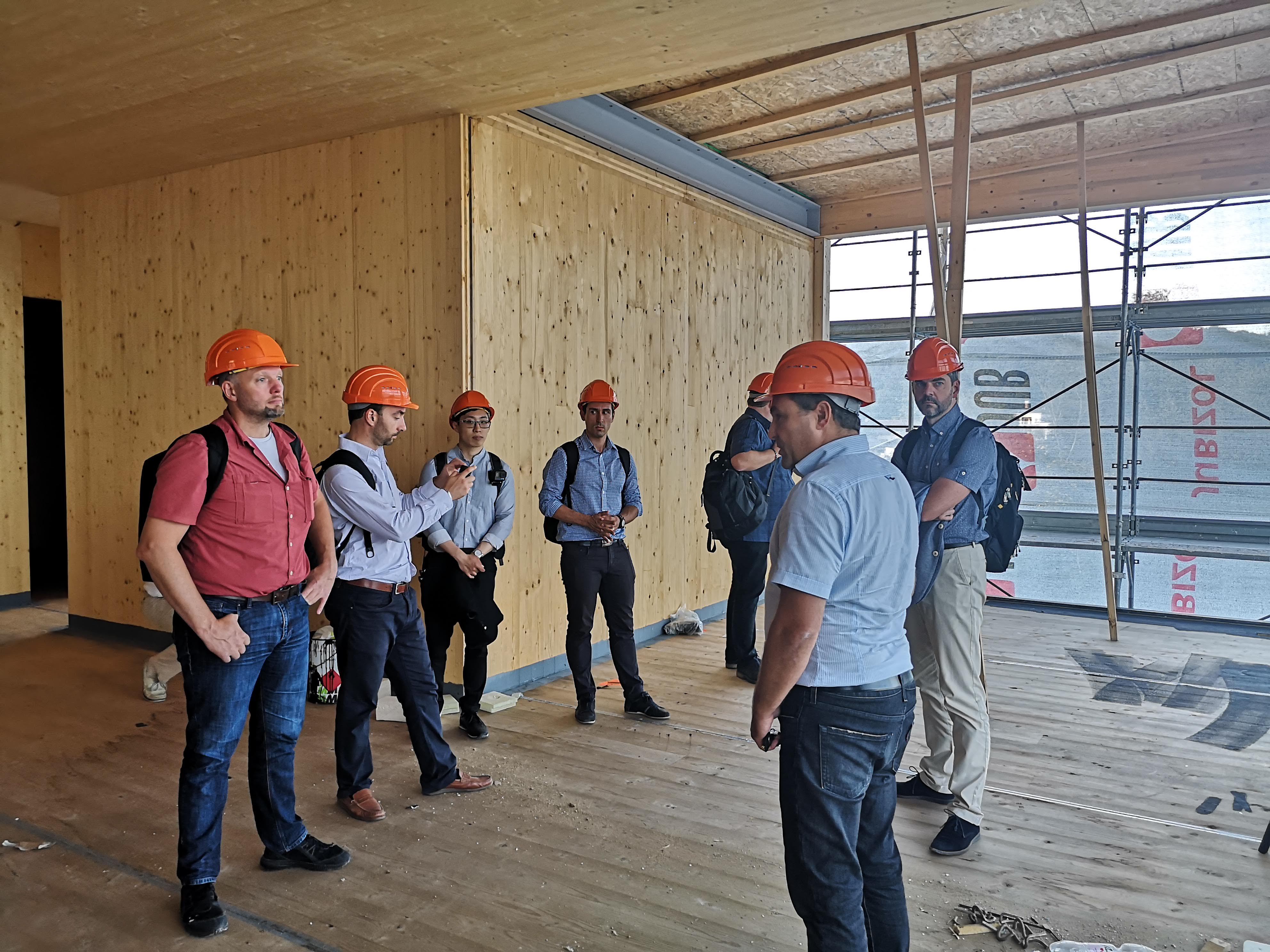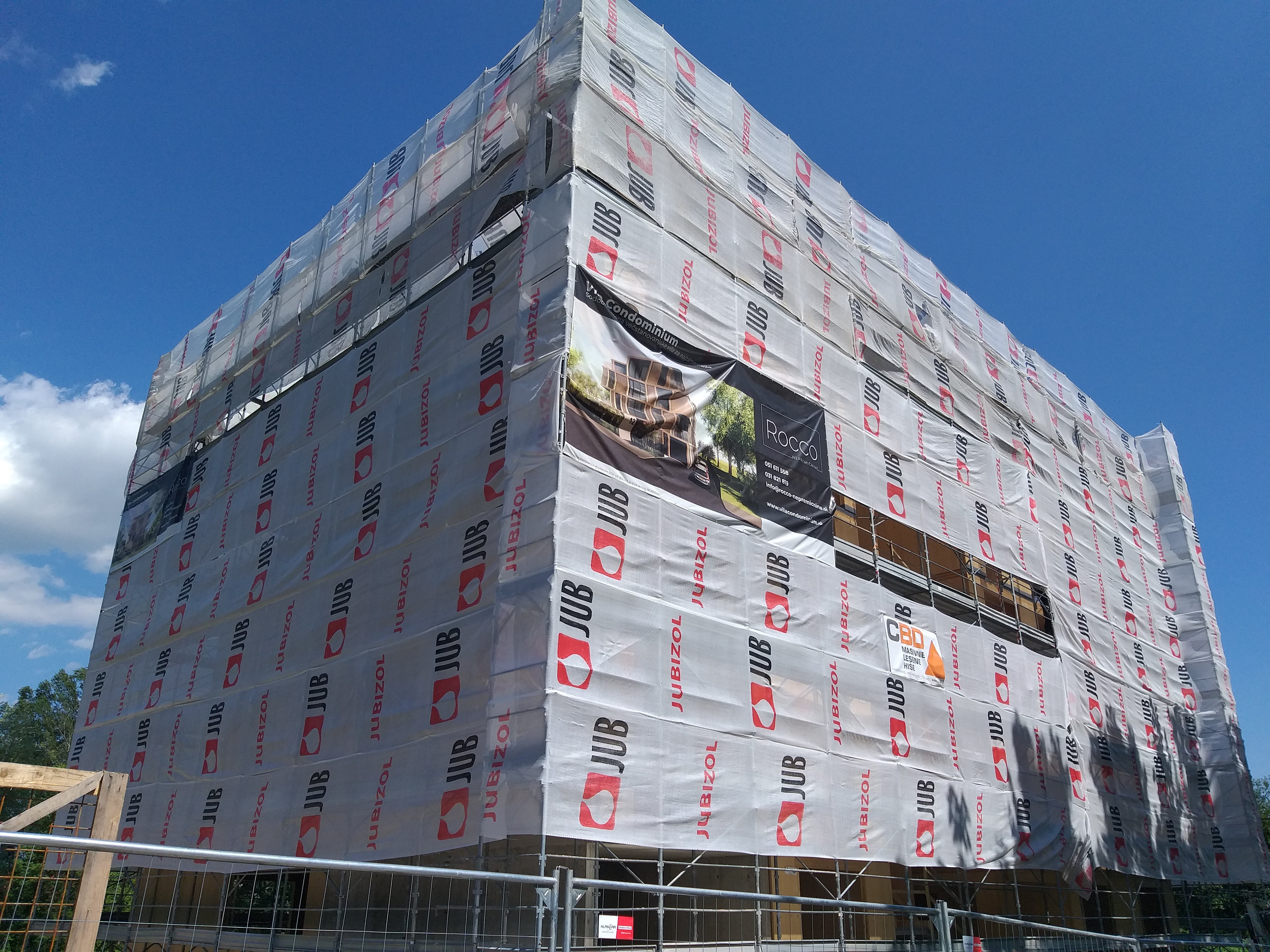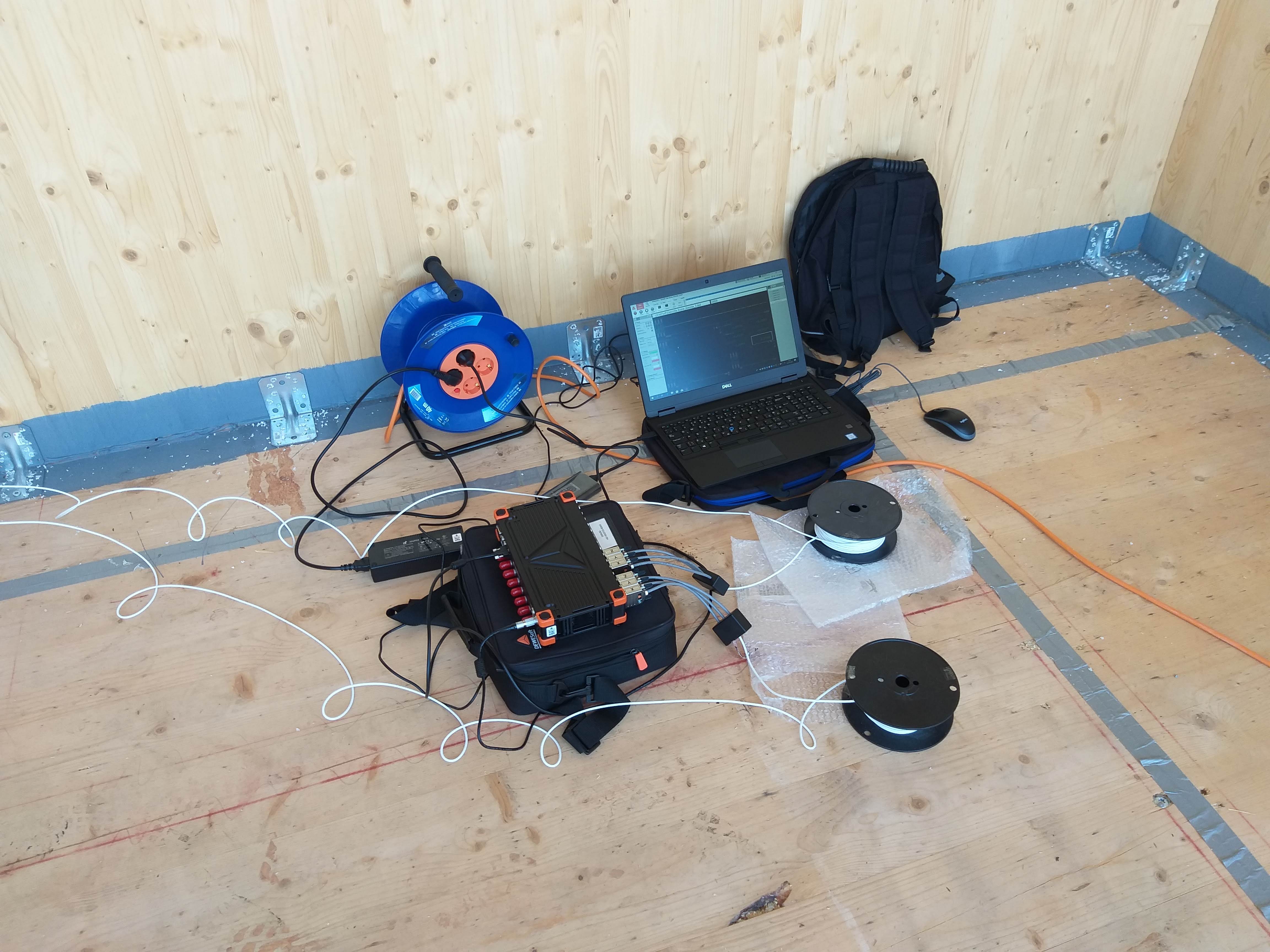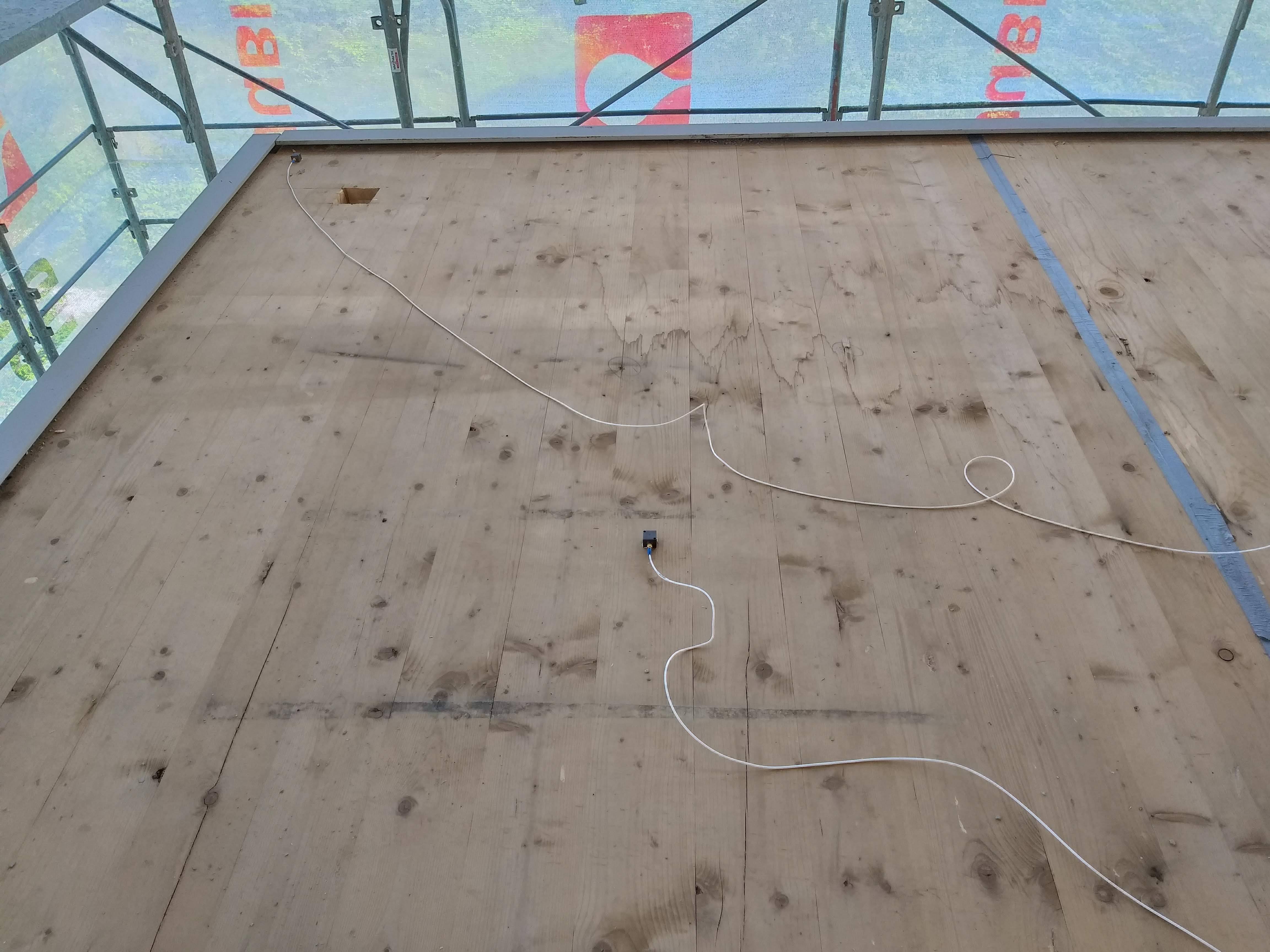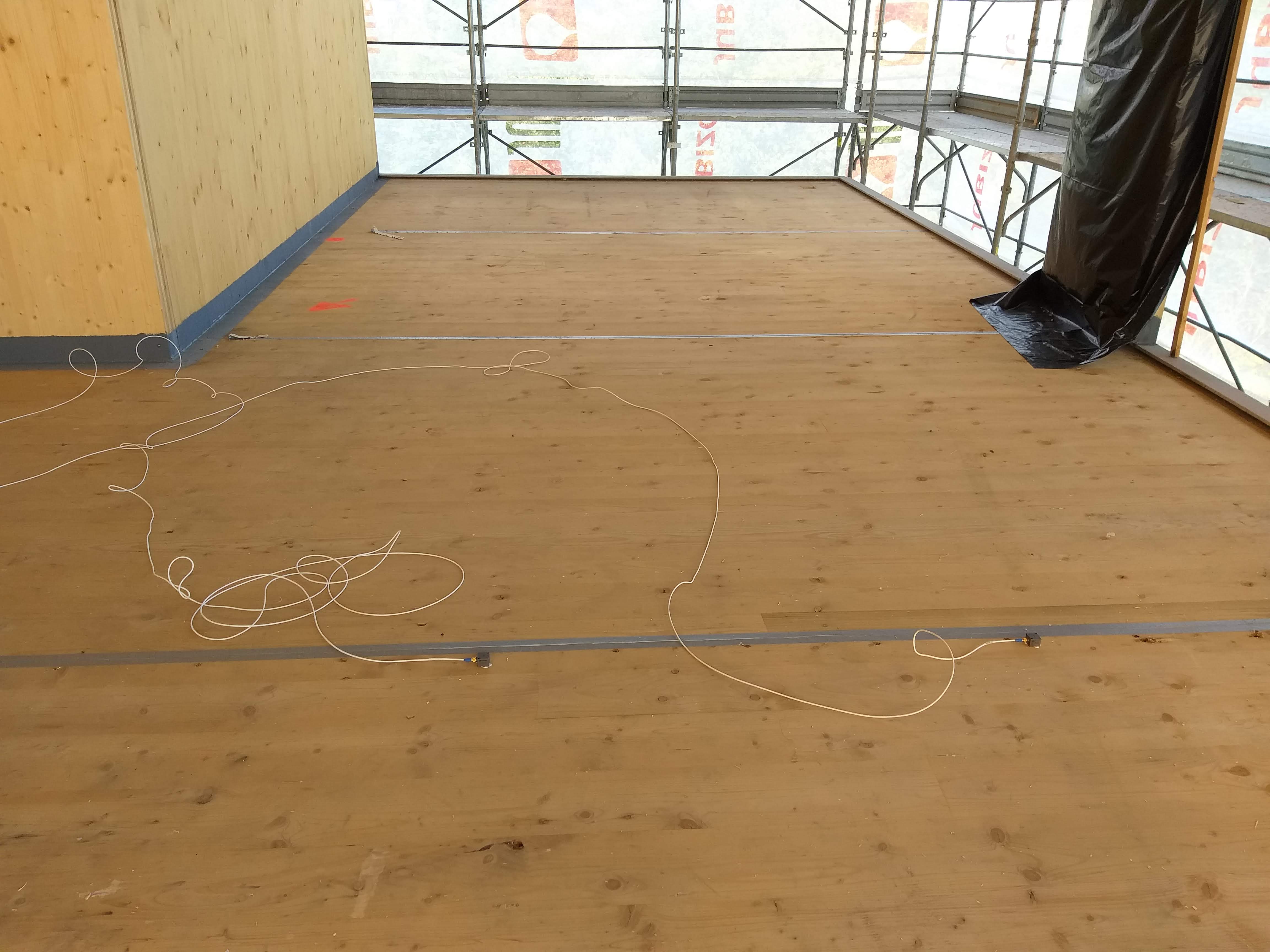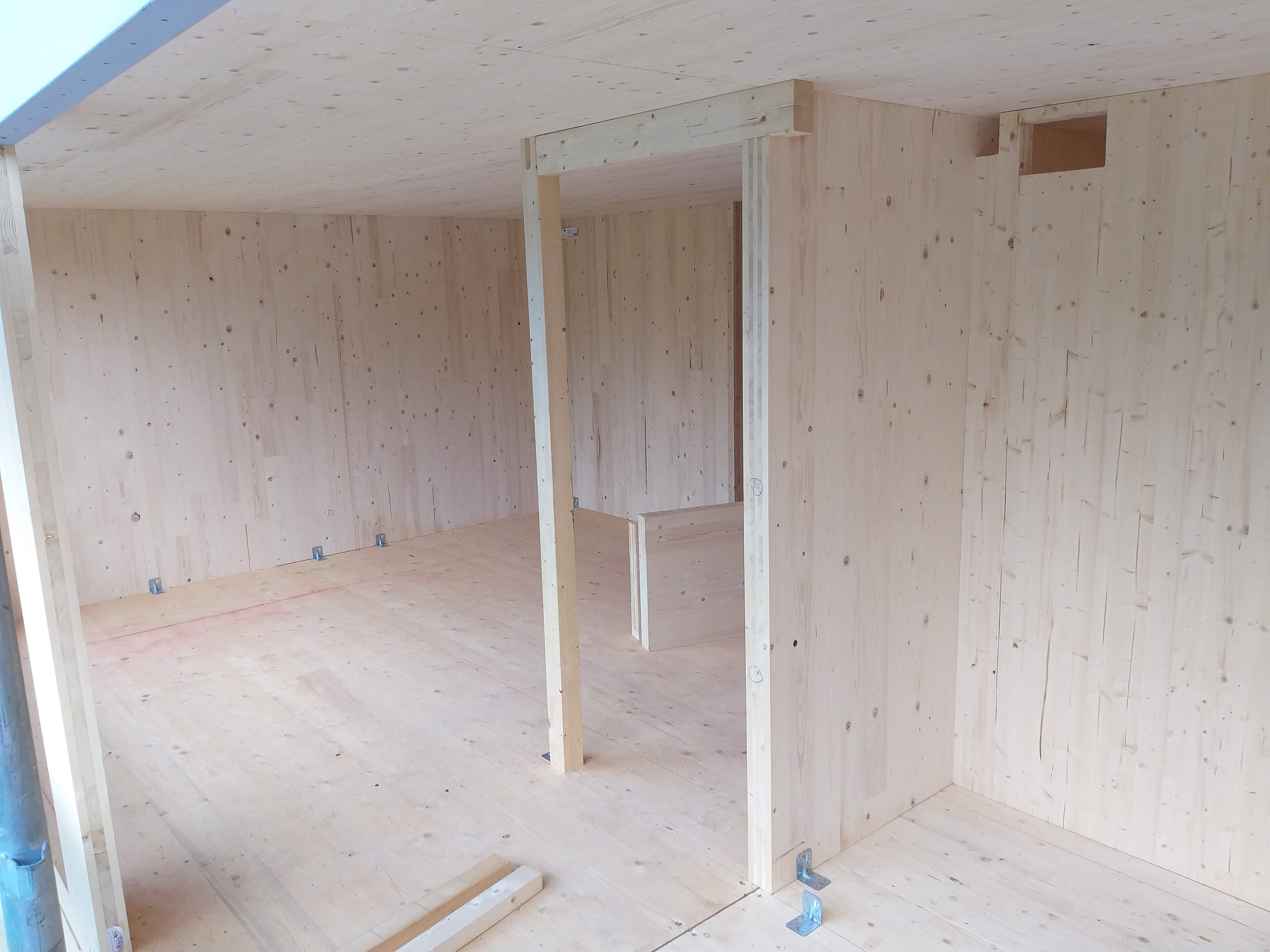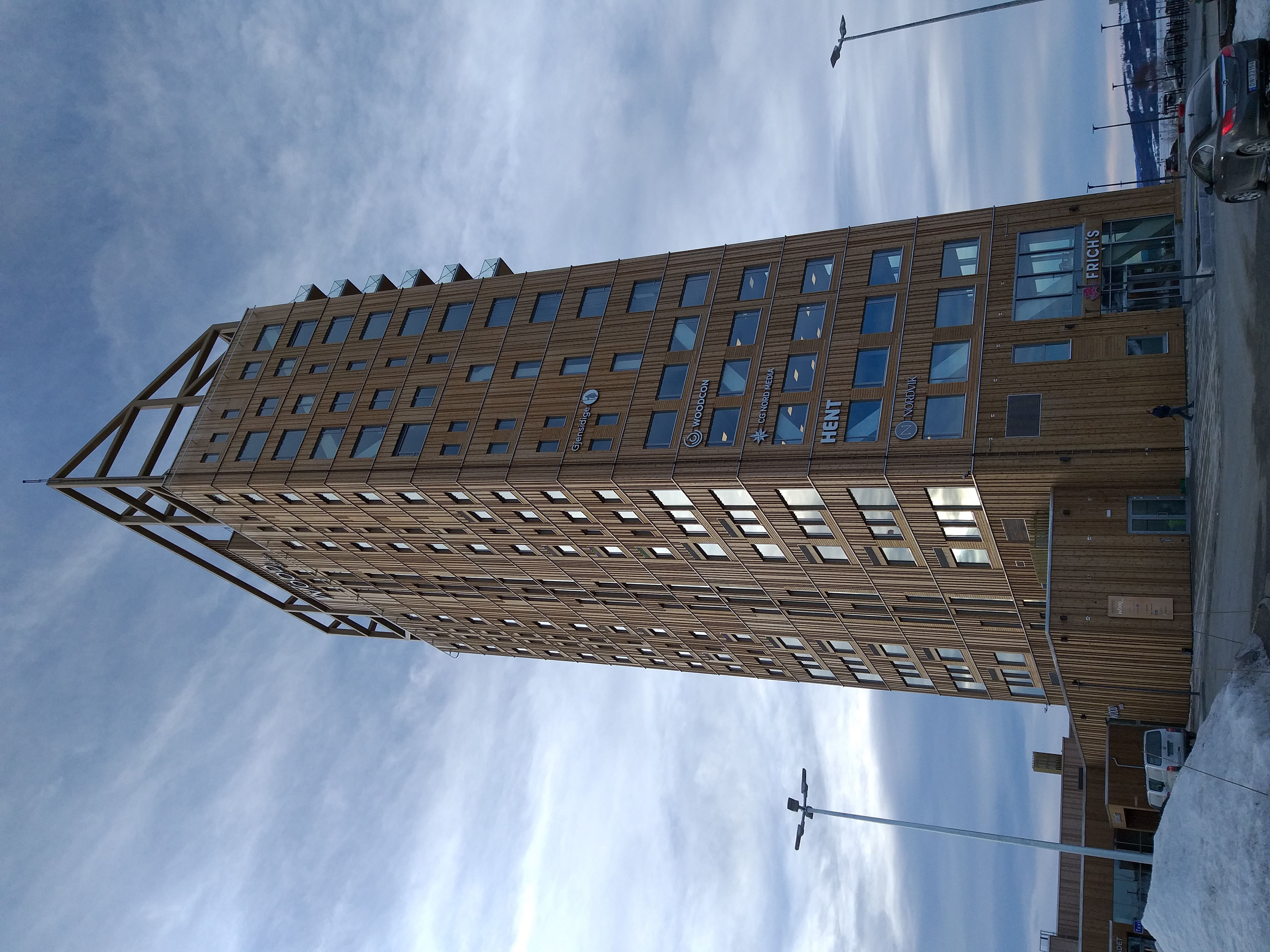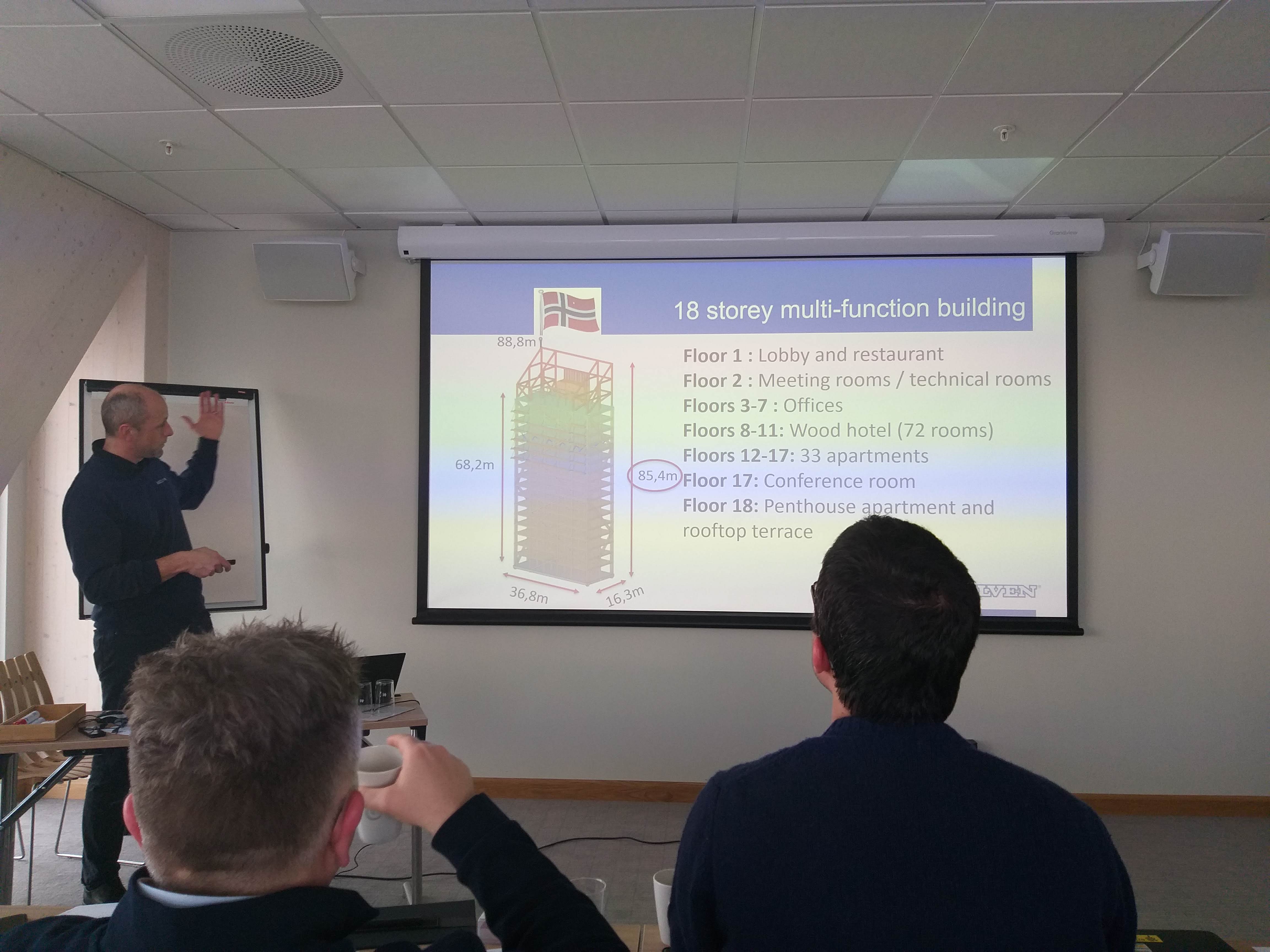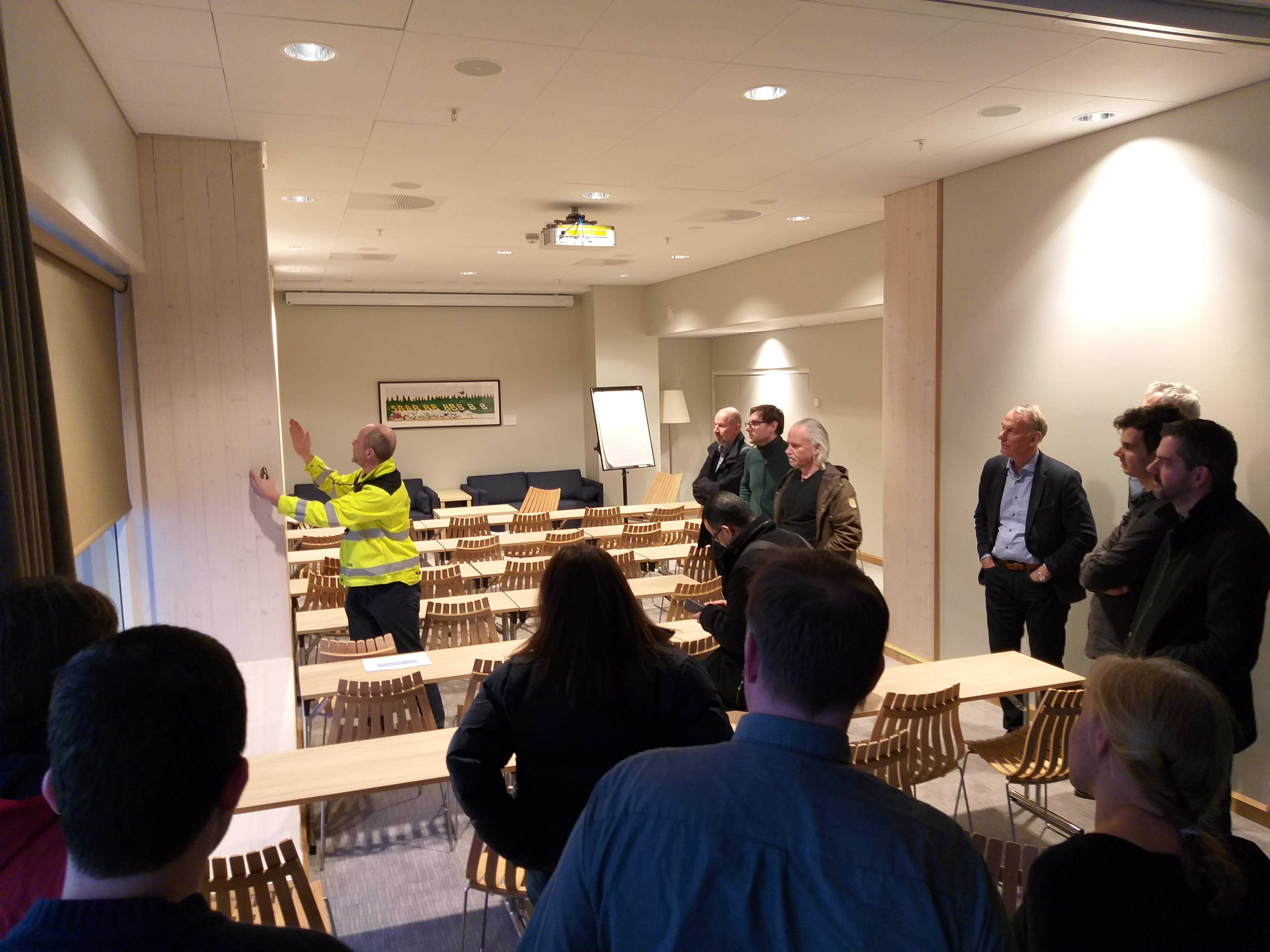



News
ForestValue Final Conference in Madrid
Marie Johansson, DynaTTB
project coordinator, attended the ForestValue Final conference which was held
from 28-29th September 2022 in Madrid, Spain. The speakers at the
conference presented the results on issues around forests and wood construction
which are being addressed in the Forest Value funded projects. Marie Johansson
presented the project DynaTTB – Dynamic Response of Tall Timber Buildings under
Service Load with results about how tall wooden buildings behave under wind
loads.
More information about the conference:
The conference
presentations can be accessed here:
·
Day 1:
·
Day 2: https://www.youtube.com/watch?v=2KwOQfujCQg
Photos: RISE
8EACWE Conference in Romania
From September 21st to 23rd 2022 the wind engineering community was gathering in Bucarest for the 8th European African Conference of Wind Engineering (8EACWE), were Olivier Flamand, a CSTB researcher, presented a paper “Wind shaking of high rise timber buildings” which was received favorably.
The paper is dealing with the measurements performed on the French Tall Timber buildings measured and analysed within the DynaTTB project, specifically presenting the monitoring of the Hyperion building. Some strong wind events were captured, giving a level of excitation a bit lower than what was provided by the forced vibration measurements with a shaker.
Photos: CSTB
SEMC Conference in South Africa
The SEMC congress took place in Cape Town in South Africa from September 5th to 7th, bringing together more than 350 structural engineering specialists from 45 countries (100 online) to share new research findings. Many presentations were dealing with additive construction in concrete or steel. Olivier Flamand presented a paper “Improving the modelling of Tall Timber Buildings” about the hybrid approach of modelling and full-scale testing of Tall Timber Buildings in France (Hyperion and Treed It). The presentation was followed by questions about the damping ratio measured, the way to model the stiffness of partitions and demands of collaboration.
Photos: CSTB
Unique forced vibration tests and long-term monitoring on tallest timber building in the world
Unique forced vibration testing campaign was conducted at the currently tallest timber building in the world according to CTBUH: an 18-storey, 88 m tall Mjøstårnet in Norway. The experimental campaign was conducted in collaboration between NTNU and University of Exeter researchers. The aim of the testing was to identify as precisely as possible the modal characteristics: natural frequencies and modal masses, shapes and ratios of this as-built tallest timber building in the world.
Two APS400 shakers with two horizontal reaction mass systems were used. The tests were unique as never before a frequency response function (FRF) based modal testing for global sway modes was carried out on such a large and occupied building in operation. This was enabled by a set of synchonised wireless accelerometers distributed through the building. The shaker force and accelerometer data acquisition system was wireless but fully synchonised enabling FRF measurements and hence full insight into the dynamic properties of such a unique building. The first three measured frequencies were f1 = 0.50 Hz, f2 = 0.53 Hz and f3 = 0.82 Hz. The testing yielded new insights into the amplitude-dependant dynamic behaviour of tall timber buildings.
Afterwards, a long-term monitoring equipment was installed to monitor ambient vibration data for several months. The results of the testing and monitoring exercise will be published in the upcoming months in journal publications.
Photos: NTNU and University of Exeter
A new scientific paper on how to model and evaluate dynamic properties of glulam trusses!
Pierre Landel, Wood Technology at RISE and Andreas Linderholt, Linnaeus University have published new findings in the iournal Engineering Structures. This open access article shows how to reduce a large finite element model of a glulam truss made of millions of solid elements, including all the details for slotted-in steel plates and dowel connections, to a simple model with a few beam and spring elements. The simplified model is computationally fast and can accurately predict the structural dynamics properties. Further, it can be used in an assembly model such as a tall timber building for design verifications and optimizations. This work is a part of Pierre Landel‘s PhD-studies, with Andreas Linderholt as supervisor, and it has been financed by the Dyna-TTB project.
Link to the published paper (open access): https://www.sciencedirect.com/science/article/pii/S0141029622003388
Photos: Linnaeus University and RISE
Forced vibration tests on the Eken building in Sweden
Andreas Linderholt at Linnaeus University, together with Pierre Landel and Marie Johansson from Wood Technology at RISE made forced vibration tests on the seven-storey building Eken in Mariestad in Sweden during two weeks in the spring of 2022 as a follow-up to the preliminary tests made in the autumn of 2021. The building was now instrumented with an increased number of, some 40, accelerometers of which the majority were positioned on the four corners of the building, under the balconies. The excitation was made by use of a mass inertia shaker. This time, fine frequency resolutions were used from 2 Hz all the way up to 20 Hz for excitation in two perpendicular directions.
Many eigenmodes, i.e. eigenfrequencies, mode shapes, damping and modal masses were extracted from the test data. The test shows that it is possible to excite higher modes, measure the vibrations and thereby be able to show how the building moves. The higher eigenmodes are most valuable for calibration of a numerical model of the building.
The movements of the building during the tests were barely noticeable to a person staying in the building which agrees well with the expectations. The results also show that the real building is stiffer than its numerical model counterpart used in the design. Hence, there is room to improve the numerical models to make them predict the structural behavior even better. In addition to the forced vibration tests, ambient vibration data were also recorded.
The building is owned by Mariehus, it has a load-bearing glulam frame from Moelven Töreboda and the frame consists of glulam beams and pillars stabilized with glulam trusses and joists consisting of reinforced LVL boards.
Photos: Linnaeus University and RISE
Long term monitoring on Yoker building in Glasgow, Scotland
The long-term monitoring (LTM) is being carried out at the ‘Yoker’ building off Ellerslie Road in Glasgow, Scotland. The battery-powered waterproof LTM system was developed to provide a continuous measurement of ambient horizontal sway vibration data. The aim is to gather unique horizontal vibration response data and enhance our ability to predict vibration performance of a new generation of lightweight cross-laminated timber (CLT) buildings.
Photos: University of Exeter
Pierre Landel presents his Licentiate thesis
Pierre Landel has presented his Licentiate thesis (Swedish degree halfway between MSc and PhD) at a seminar at Linnaeus University. The thesis has the title “Wind-induced vibrations in tall timber buildings – Design standards, experimental and numerical modal analyses”. The work was carried out under supervision of Associate Professor Andreas Linderholt at the Dept. of Mechanical Engineering at Linnaeus University as a part of the DynaTTB project.
Firstly, the research work presented in the thesis attempts to increase the understanding of the dynamical phenomena of wind-induced vibration in tall buildings and to evaluate the accuracy of the semi-empirical models available to estimate along wind accelerations in buildings. Secondly, it aims at, experimentally and numerically, studying the impact of structural parameters – masses, stiffnesses and damping – on the dynamics of timber structures. Finally, it suggests how tall timber buildings can be modelled to correctly predict modal properties and wind induced responses.
The Licentiate thesis can be found at https://lnu.diva-portal.org/smash/get/diva2:1659201/FULLTEXT01.pdf
Photos: Linnaeus University and RISE
Measurements of acceleration and horizontal movement of the Eken building in Mariestad
Andreas Linderholt, LNU together with Pierre Landel and Marie Johansson, Wood Technology at RISE made vibration measurements on the seven-storey building Eken in Mariestad. During a week in October 2021, the building was instrumented with almost 30 accelerometers to measure movements generated by a mass inertia shaker. The shaker is a new investment made by Linnaeus University.
The measurement campaign showed that it is possible to excite (shake) the building, measure the vibrations and thereby be able to show how the building moves. However, the movements in the building were so small that they were barely noticeable to a person staying in the building, which agrees well with the expected results. The results also show that the building is stiffer in reality than it was in the calculation models used in the dimensioning of the same. This means that there is room to improve the calculation models used to make them predict the end result with even greater precision.
The building is owned by Mariehus and has a load-bearing glulam frame from Moelven Töreboda. The frame consists of glulam beams and pillars stabilized with glulam trusses and joists consisting of reinforced LVL boards.
Photos: Linnaeus University and RISE
The 6th DynaTTB project partner meeting in Exeter (UK)
The sixth project partners meeting was held at the University of Exeter in UK. Each of the project partners presented their current results and plans for the last stage of the project, which will finish in October 2022. The partners shared and exchanged experiences regarding the experimental on-site measurements and numerical modelling updating of eight timber and hybrid timber buildings from Norway, Sweden, UK, France and Slovenia. In addition, laboratory experimental work on connections and subassemblies was presented to further strengthen the understanding of tall timber buildings dynamic behaviour under wind loads.
In addition, the project’s dissemination activities, including presentations at international conferences and publishing in scientific journal papers were discussed, in addition to the preparation process for the final guidelines which will be published at the end of the project. Due to Covid-19 travel restrictions, the ForestValue conference initially planned to be held in February 2022, has now been postponed to a new date 20-22th June 2022 and it will be held in the recently completed 20-storey tall timber Sara Culture house in Skellefteå, Sweden.
After the meeting, the host researchers also provided a guided tour of the University of Exeter’s laboratories and their new vibration simulator.
Photos: DynaTTB
Ongoing monitoring on Hyperion building, in Bordeaux, a point at midterm of the test period
The Hyperion tower is still a topic of interest after its completion. A monitoring system measuring accelerations at the top level of the tower as well as wind speed above the building was installed in June 2021 for a period of 6 months. Following the continuation of DynaTTB project to October 2022, the monitoring period was extended to Spring 2022.
The aim of this monitoring is to check the modal frequencies of the tower in its final state and compare accelerations actually measured on site with strong winds with the ones calculated at design stage with the Eurocode rules.
Because the building is surrounded by other building of comparative size, the wind “seen” by the building is different from the one measured at the closest meteo station, at Bordeaux airport. It must be measured on site, at close as possible from the building avoiding the influence of the building itself on the measurement.
The vane anemometer settled 10 m above the terrace is the best compromise, based on the experience of wind engineers at CSTB.
The monitoring system records the mean and RMS value from all sensors (7 accelerometers + wind speed and wind direction) every 10 minutes. It also records the instantaneous accelerations and wind characteristics for a 10 minute period every time the wind speed exceeds 5m/s for more than 5 seconds. The recording rate is 10 values per second.
Some strong wind events have been recorded, which open the possibility to compare with Eurocode calculations.
Because the force-balance accelerometers used for this monitoring are very sensitive, they also measure everyday mean displacements of the tower under the thermal effect of sun on the structure.
An example of a strong wind event is October 10th 2021 from 22:15 to 23:59, with a wind speed on site reaching 18 m/s. The mean wind speed on site for this sequence was 10 m/s.
Processing the measurement by accelerometers shows a strong vibration in phase at the three locations in direction Y (the weakest bending resistance) at a frequency 0.95 Hz.
Time history of the accelerations shows large amplitude governed by the wind turbulence. An amplitude of 0.05m/s² was exceeded in the buildings corners when the amplitude of the concrete core was limited to 0.01m/s².
Photos: CSTBOctober
Paper at IMAC Conference by researchers from University of Exeter
The aim of this paper is to extend another author’s study on using a novel, wireless, oven-controlled crystal oscillator (OCXO) high-precision synchronised data acquisition system to conduct forced vibration FRF-based modal testing of sway modes’ in civil structures e.g. building, tower and skyscrapers. The University of Exeter’s Vibration Engineering Section used National Instrument’s CompactRIO and LabVIEW to develop a set of wireless multi-channel data loggers to overcome conventional cabled test systems’ problems. Several OCXO-based systems can be used to distribute sensors wirelessly across the structure, using a sub-microsecond synchronisation procedure to measure the response.
In this study, the novel OXCO-based system was used in the FRF-based modal testing, to record input force and structural response signals with well-timed synchronisation indoors. To verify the robustness of the OCXO-based system measurement, a spectrum analyser (SA) was also used to provide the shakers’ excitation signal and perform a single point FRF measurement. Two different systems used independent time clocks. Therefore, in the offline signal post-processing, another time synchronisation/shift was applied. In this research, the technique of the cross-correlation time-lapse index of two vectors was used. This index could allow the synchronisation of all measured data. To validate the OCXO-based FRF measurement in buildings, a 15-tonne laboratory-based test floor was selected to be tested. The combination of distributed OXCO-based and SA-based systems was successfully used and identified the sway modes’ dynamic properties of the structure.
See the published paper here.
Photos: University of Exeter
Dowel connection experiments at NTNU
Researchers from NTNU conducted experiments on scaled doweled connections in glulam with slotted-in steel plates by. Two configurations were tested: beam-column connection and diagonal-column connection. Both connection configurations were tested under in-service cyclic loading. Finally, connections were loaded to failure to estimate the ultimate capacity.
Photos: NTNU
Numerical updating of Hyperion building
Numerical model of Hyperion has been completed by researchers from CSTB and the University of Ljubljana. It will be used together with the first set of measurements to update values for chosen parameters so that experimental and numerical results for frequencies and MAC values match as closely as possible. By now it is clear that the matching of the results is significantly dependant of the foundation modeling.
Photos: University of Ljubljana
Paper at Eurodyn Conference by researchers from University of Exeter
In his paper, researchers from the University of Exeter describe an experimental validation of a novel FRF-based modal testing system designed to measure experimentally sway modes of tall timber and other building structures. The test uses a set of synchronised electrodynamic shakers and oven-controlled crystal oscillator (OCXO) high-precision synchronised wireless accelerometers for simultaneous force and response measurements. This modal testing system makes no use of cables or radio-waves to connect all accelerometers simultaneously with the multi-channel data acquisition system but provides a perfect synchronised measurement of a practically unlimited number of force and response channels. The system will be used to estimate experimentally sway modes of as-built tall timber buildings. Therefore, the aim of this paper is to demonstrate the feasibility of the OCXO-based system in high-rise building FRF measurements. Two nominally identical FRF-based modal testing exercises were carried out on a 15-tonne laboratory-based test floor structure supported by 4 columns in order to measure its horizontal ’swaying’ modes of vibration using: (1) a well-established and quality assured ’wired’ system based on a 20-channel spectrum analyser, and (2) OCXO-based wireless system. It was shown that the two methodologies produce almost identical modal testing results and that the OCXO-based method is robust and reliable for field utilisation on high-rise buildings.
See the published paper:
https://www.easdprocedia.org/conferences/easd-conferences/eurodyn-2020/9270
Photos: University of Exeter
Conference paper at WCTE2021 on wind-induced acceleration according to different building codes
At the latest online conference WCTE 2021, the Swedish team of researchers from Linnaeus University and RISE presented a comparative study between four methods estimating the acceleration at the top of a building due to wind excitation. The study describes the along-wind acceleration models and reports huge differences between the building codes when designing five tall timber buildings (from 41 to 100 m high) for wind-induced vibration comfort. The Eurocode methods B and C predicted the along-wind accelerations almost 2 times higher than the American building code ASCE7-16 but 2 times lower than the Swedish one. The paper is available (here) and feel free to send questions or comments to the authors!
Photos: Linnaeus University and RISE
Full-scale forced vibration testing of Yoker building in Glasgow, Scotland
Yoker building is a seven-storey timber building constructed by CLT panel as a block structure, as shown in Figure 1. The FRF-based modal testing was in use to the building in terms of extract structural properties (e.g. natural frequencies, mode shapes, damping ratios, etc.). To provide an appropriated excitation, three electrodynamic shakers were applied to excite the building on the top floor at the communal corridor, as shown in Figure 2. Also, the University of Exeter developed a novel oven-controlled crystal oscillator (OCXO)-based distributed data logger that was spread to the structure on different floors was measured the acceleration data with wirelessly time-synchronisation. The frequency response functions (FRFs) estimation and curve-fitting were successfully applied to the measured data and identified modal properties, as shown in Figure 3. To verify the robustness of the FRF measurement, finite element modelling (see Figure 4) and pertinent model updating technique were used. To compare the measurement and FE model, consequently, the FE model could considerably give satisfactory simulation to the measured structure dynamics.
See also published paper here:
“Model updating of seven-storey cross-laminated timber building designed on frequency-response-functions-based modal testing” by Kurent et al.
Photos: University of Exeter
Ambient vibrations measurements in Tromsø, Norway
Field measurements have been done on two CLT buildings in Tromsø, Norway. The research group from Norwegian University of Science and Technology in Trondheim performed instrumentation of multi-story CLT buildings in Tromsø in two stages.
During the first stage, the 13-story CLT building was instrumented with accelerometers and anemometer and the data was collected for 1 month.
During the second stage, the instrumentation system was moved to a neighboring 10-story CLT building and the same measurements were conducted. The data has been collected for 2 months.
Photos: NTNU
Force vibration tests on InnoRenew building during construction in Izola, Slovenia
In August 2021 a next step of experimental test campaign on InnoRenew building in Izola, Slovenia, was performed. The building is still under construction, and it will be finished in November 2021. In this phase, final installations are being put in place, and Internal and external finishing are still under construction.
First, ambient vibration tests for estimation of natural frequencies were done. Then, sweep tests on two different locations (center of mass, corner of the building) were performed in the frequency range 2-10 Hz. The next step were detailed sweep tests around the previously estimated natural frequencies with ambient vibration tests. Further, we performed shaker shut down tests at the first three natural frequencies at different excitations levels to determine amplitude dependent damping values.
The first three natural frequencies: f1 = 4,65 Hz, f2 = 5,77 Hz, f3 = 6,67 Hz were measured. The damping values were ranging between 1.8-2.1%, depending on the natural frequency and the excitation level. The next measurement will be performed on the completed building.
Photos: InnoRenew CoE
Ongoing monitoring on Hyperion building in Bordeaux, France
The Hyperion tower, which was already “shaked” by researchers from CSTB during its construction, is now finished. These tests allowed us to identify mode shapes and modal damping variation with amplitude.
Because occupancy does not allow anymore for a large amplitude shaking campaign, this role was assigned to the natural wind. A long-term monitoring system was installed by CSTB team with a mast arising more than 8 m above the terrace at the upper level, bearing an anemometer for the measurement of instantaneous wind speed at the location of the tower, without effect of it.
A network of 7 high sensitivity seismic accelerometers were put in place on the terrace of the building, connected to a recorder sending the data to an online server.
Vibrations of the building and wind speed are recorded and can be followed online since June 2021, for a period of six months. The aim is to compare the damping observed with the shaker with the one observed in natural conditions and to check what is the comfort level of the building under strong winds.
Photos: CSTB
Published article “Model updating of seven-storey cross-laminated timber building designed on frequency-response-functions-based modal testing” by Kurent et al.
Blaž Kurent, Boštjan Brank (both from University of Ljubljana, Slovenia) and Wai Kei Ao (University of Exeter, UK) authored an open access article on model updating on seven storey cross-laminated timber building Yoker in Glasgow, UK. The article was published in Structure and Infrastructure Engineering journal and can be accessed here:
https://www.tandfonline.com/doi/full/10.1080/15732479.2021.1931893
Full scale tests on Trinity College building, Cambridge, UK
Researchers from University of Exeter, in collaboration with industrial partner in DynaTTB project, Smith and Wallwork, performed in-situ vibration serviceability test on a 5-storey hybrid CLT-concrete building Trinity College Cambridge, UK. A set of three shakers was used to perform FRF measurements and shaker shutdown test within the successful forced vibration testing campaign.
Ambient vibration test on 4-storey InnoRenew building in Izola, Slovenia
In March 2021 two independent sets of ambient vibration tests were performed on the 4-storey InnoRenew building in Izola, Slovenia, which is to be completed in autumn 2021. In addition to timber structure, roof and secondary glass elements (windows, doors), this building phase included partial screed on the floor plates, partition walls and partly finished internal CLT walls. The first set of tests was performed with data acquisition system Bruel&Kjaer (Type 3053-B-120), 1-axial accelerometers Bruel&Kjaer, Type 4507 B 004 and the data was processed with Bruel&Kjaer, BK Connect, PULSE Operational Modal Analysis software. The second set of tests was performed with Dewesoft 16-channel acquisition unit, 3-axial MEMS accelerometers and the data was processed with Dewesoft X3 processing software. In both sets measurements, matching results were achieved for the first three natural frequencies: f1 = 4,80 Hz, f2 = 6,27 Hz, f3 = 7,08 Hz. The next measurement will be performed also with excitation shaker.
Photos: InnoRenew CoE
The 5th DynaTTB project partner meeting (online)
The fifth project partner meeting took place from the 18th to the 19th March 2021 online instead of in-person meeting due to Covid-19 travel restrictions. Each of the partners presented updated on numerical modelling of selected tall timbe buildings and new on-site measurements and experimental data were presented. The ongoing work on the preparation of final Design guidelines was also discussed and the action points for the following months were set. The next meeting is planned to take place in Exeter, UK on 6-7th September 2021 (if Covid-19 travel restrictions will allow). In addition, a joint meeting with all timber building related ongoing ForestValue projects is planned to take place between 22-25th of February 2022 in Skellefteå, Sweden. The meeting will be held in the newly built 20-storey tall timber Sara Culture house.
Photos: DynaTTB – Dynamic Response of Tall Timber Buildings under Service Load project
Horizon Results Booster – Module A
ForestValue was granted Horizon Results Booster (HRB) “Portfolio Dissemination & Exploitation Strategy” services (www.horizonresultsbooster.eu) funded by the European Commission as a result of a successful application. Horizon Results Booster is a package of specialised services to maximise the impact of R&I public investment and further amplify the added value of the Framework Programmes (FPs). It helps to bring a continual stream of innovation to the market and beyond.
Within this HRB service, a project group of 17 ongoing ForestValue projects was formed with a common aim to disseminate effectively and boost exploitation potential of the research results of the projects. Representatives of each of the projects provided their input in individual project questionnaires and after an online meeting was organized in January 2021 for further discussions. Based on all the provided inputs HRB will prepare a portfolio of results that are suitable for dissemination and which includes a comprehensive mapping of the relevant stakeholders/target audience for each particular portfolio with a final report “Portfolio of R&I Results”. This portfolio aims to provide the first mapping of complementarities between the projects and will form the basis of Module B, which aims to design a common dissemination plan for the portfolio and to carry out the actual dissemination of the portfolio results.
Photos: DynaTTB – Dynamic Response of Tall Timber Buildings under Service Load, HRB: Research Dissemination Services
Presentation of DynaTTB at the ForestValue Midterm Seminar
The 17-18th of November 2020 ForestValue arranged for a digital seminar where mid-term results of all the 17 funded projects were presented. DynaTTB presented an update about the on-going work within the project. Short results regarding dowel test on-going at InnoRenew was shown just as some results from FE-modelling and testing of glulam trusses at Linnaeus university and RISE. Results from the full-scale measurements performed by CSTB and University of Exeter on the Tree-It building and the Yoker building was shown. The presentation ended with some images of the full-scale FE-models created by University of Ljubljana and NTNU.
During the seminar also results from the other ForestValue projects were presented. Several of these projects work with research areas important when building tall timber buildings. Some examples are the project InnoCrossLam (http://innocrosslam.zag.si/) that deals with increasing the competitiveness of CLT, FirEnWood (https://risefr.com/services/research-and-assessments/firenwood) that deals with fire safety design in timber buildings and hardwood_joint that deals with modelling the behaviour of timber connections.
The presentations from all the 17 projects can be found at https://forestvalue.org/annual-seminar-17-nov-2020/.
Photos: DynaTTB – Dynamic Response of Tall Timber Buildings under Service Load, HRB: Research Dissemination Services
Laboratory tests at NTNU
Over the past months, a series of laboratory tests have been carried out at Norwegian University of Science and Technology (NTNU) with focus on the energy dissipation of different structural components, namely a composite timber floor and timber connections. The timber composite floor was subjected to dynamic testing both by use of the modal hammer and forced vibrations applied by an oscillator. A viscous damping ratio equal to approx. 0.70% of the critical damping ratio was quantified by both methods for the fundamental mode of vibration. The energy dissipation of timber connections with screws and threaded rods was quantified on the basis of quasi-static cyclic tests under service load by use of the equivalent viscous damping ratio which was of the order of 5-8%. In the near future, cyclic testing of a glulam connection with slotted-in steel plates and dowels will be carried-out.
Photos: Norwegian University of Science and Technology (NTNU)
Experimental setup at Mjøstårnet
Mjøstårnet is an 18-story timber building located in Brumunddal, Norway (Fig.1). It is currently considered the tallest timber building in the world (CTBUH, 2019). The total height of the building is 88.8 meters, including the spire installed at the top of the pergola truss. The architectural height of the building is 85.4 meters including pergola.
A measurement setup consisting of triaxial accelerometers was installed on the roof of the building by researchers from Norwegian University of Science and Technology (NTNU) in March 2019. This setup measures ambient vibrations of the building due to wind load. The goal of the experimental setup was to obtain modal dynamic properties of the building, including fundamental frequencies and damping ratios.
Photos: Norwegian University of Science and Technology (NTNU)
References
The Council on Tall Buildings and Urban Habitat (CTBUH), CTBUH Ratifies “World’s Tallest Timber Building” Following Height Criteria Update, in GLOBAL TALL BUILDING NEWS, 2019.
Abrahamsen, R. 2018. Mjøstårnet – 18 storey timber building completed. Internationales Holzbau Forum IHF 2018.
Collaboration between DynaTTB and InnoCrossLam Forest Value projects
Within the InnoCrossLam project one of the tasks is to use modern FEM
tools to analyse complex high-rise CLT buildings located in seismically active
areas. For the purpose of the study a joint cooperation was established with
the DynaTTB project to reach a mutual goal of more reliable modelling of tall
timber buildings. DynaTTB is focused on the dynamic response of tall timber
building under service load with the emphasis on wind loading. As a case study,
a 4-storey asymmetrical CLT building was taken into consideration. The building
is situated in Ljubljana and was designed by the company CBD, also an
associated partner of InnoCrossLam.
The building’s roof plate horizontal accelerations were measured with a
set of Dytrans’s accelerometers combined with Dewesoft’s Sirius data acquisition
system. A fast Fourier transform (FFT) was used to calculate the building’s
vibration periods. So far, an ambient vibration method was used. Namely,
vibrations originating from the environment (wind, traffic etc.) are used to
excite the building. A force-based method, employing the use of a mechanical
shaker, is planned in the next months. The building was measured in different
building stages with the aim to try identifying the influence different non
load bearing elements (façade, windows, screed, cladding) have on the
building’s dynamic response. These elements change the stiffness of the
building and introduce additional damping that is otherwise usually not
accounted for in the finite element calculations.
The building was modelled in FEM software Dlubal Rfem, where different
modelling techniques were tested to match the experimentally determined natural
frequencies. The main goal was to find the most effective modelling approach
for practicing design engineers. The outcome of the study will be in the form
of practical suggestions on how to use Dlubal Rfem and its modules RF-Laminate
and RF-Dynam to model complex CLT buildings in seismic areas. The results from
the in-situ measurements were compared to the finite element’s response. The
vibration period matching so far shows good agreement between the two. The
comparison allowed us to identify which parameters are relevant and need to be
accounted for in the model.
Vibrational testing and FE-modelling of a large glulam truss that stabilizes a tall timber building
The dynamics of a 4300 kg large timber truss with slotted-in steel plates and dowel connection have been examined by researchers from RISE Research Institutes of Sweden and Linnaeus University. The truss is part of the structural lateral bracing of a six-storey residential house in Skövde in Sweden. Series of forced vibration tests with an impact hammer and accelerometers were performed at the glulam plant. Modes in the plane of the truss have been identified. Their damping values were estimated to be between 0.6 and 1 % of the critical viscous damping.
The experimental data are compared with results from a Finite Element (FE) model consisting of more than 2 million solid elements. The Modal Assurance Criterion is used to pair the experimental modes to the most similar numerical ones. The comparison shows that the natural frequencies of the paired numerical eigenmodes are all about 10 % higher than the one stemming from tests, before any calibration of the FE-model.
The investigation and the results will be presented at the EURODYN 2020 conference, 23rd-26th of November 2020 (https://eurodyn2020.org/).
Photos: RISE Research Institutes of Sweden, Linnaeus University
Bayesian (finite element) model updating webinar
Bayesian (finite element) model updating webinar was organized by University of Ljubljana from 25 September 2020 until 30 September 2020. The lecturers were prof. Hermann G. Matthies (TU Braunschweig) and dr. Noémi Friedman (Computer Science and Automation Research Institute, Budapest). There were 35 attendants (mostly doctoral students) from Slovenia, France and Croatia. The lectures are available on YouTube channel of U Ljubljana (Faculty of Civil and Geodetic Engineering):
https://www.youtube.com/watch?v=JjxRuxbbwT8&list=PLx-_u5puQ_yI0agKUc9MCDman5g6eRp5h
Second campaign of full-scale dynamic testing on Treed-It building, in Paris
When the building was first tested by CSTB, in December 2019, the main structure was achieved but not the internal partitions. In June 2020 the building was very close to its final stage and all internal walls in place, adding more mass but at the same time giving additional stiffness to the building.
The 500kg shaker was transported to the 11th floor by the lift, with great care when rolling on the definitive floors. The three first modes that have been identified during the first campaign have been excited once again with frequencies shifted a bit. The first frequency was shifted up, what means the stiffness added on this bending mode was larger than the added mass, when the second and third modes were observed at smaller frequencies. The amplitude dependency of the structural damping was confirmed. The three modes have the same mean amplitude damping, 1.7% of critical. In parallel the Finite Element Modelling of the building was improved, especially by a better model of the foundations, to fit with the measured mode shapes and frequencies.
Photos: CSTB
Full-scale dynamic testing on Hyperion building, in Bordeaux
The Hyperion tower is a 56m high, 16 storeys dwelling with a concrete core and CLT floors.
The 500kg shaker was lifted to the 17th floor by a tower crane, as water tightness was not done. The three first modes have been identified by ambient excitation measurement and by swept sine tests, performed by CSTB researchers. Damping ratio was found to be strongly dependent on the amplitude of vibration. The torsion mode, mode 2, showed a typical decrease of a solid damping, that can be explained by the way the CLT floor is connected to the concrete core. As the three modes were well separated, recorded vibrations are easy to analyze.
The next step will be to perform the same kind of tests, with smaller amplitudes of excitation, when the tower will be completed in March 2021.
Photos: CSTB
The 4th DynaTTB project partner meeting (online)
The fourth project partner meeting took place from the 22nd to the 23rd September 2020 online instead of originally planned location in Exeter, UK due to Covid-19 travel restrictions. Updates on laboratory and in-situ test measurements were presented by the partners and a plan for the remaining in-situ test measurements were discussed due to Covid-19 restricted international travel. Several international conference papers were submitted and ongoing work on scientific journal papers were discussed. Special attention was given to defining the structure of the final Design guidelines document.
Photos: DynaTTB – Dynamic Response of Tall Timber Buildings under Service Load project
3rd ambient vibration test on a 4-storey CLT building in Ljubljana
In September 2020 the third phase of ambient vibration tests was performed on the 4-storey “Flower Valley” CLT building in Ljubljana, Slovenia by researchers from InnoRenew CoE. In addition to timber structure, roof and secondary glass elements (windows, doors), this phase included screed on the floor plates, façade, partition walls and partly finished external and internal CLT walls. The next measurement is expected to be performed also with excitation shaker.
Photos: InnoRenew CoE
The 3rd DynaTTB project partner meeting (online)
The third project partner meeting took place on 24th of March 2020 online instead of originally planned location in Paris, France due to Covid-19 travel restrictions. Each of the partners presented different approaches on numerical modelling and/or on-site measurements and experimental data processing. In addition, adaptations of originally planned activities due to Covid-19 were discussed. The partners discussed also about the preparation of the mid-term reporting to ForestValue as well as about preparation of joint publications at international conferences and in scientific journals.
Photos: DynaTTB – Dynamic Response of Tall Timber Buildings under Service Load project
Full scale dynamic testing on Treed-It building, in Paris
In December 2019 the first measurement campaign was performed on the 11 storey Treed-It building, in the suburb of Paris by researchers from CSTB. The building is designed by Vinci Engineering with Arbonis as main contractor of the timber parts. For the measurements a 500kg shaker was lifted to the 10th floor with the site crane and Seismic accelerometers were placed at three levels to measure horizontal displacements during shaking. The shaker was operated with various amplitudes and various frequencies; abruptly stopping the excitation allows to measure the decay of vibration, giving structural damping for each mode. Damping was close to 3.5% of critical for large amplitudes in torsion and decreases to less than 1% for small amplitudes. For the flexion mode structural damping was close to 2.5% of critical for large amplitudes and reduced to 1.5% of critical for smaller amplitudes.
Photos: CSTB
2nd ambient vibration test on a 4-storey CLT building in Ljubljana
In November 2019 the second set of ambient vibration tests was performed by InnoRenew CoE researchers on the 4-storey “Flower Valley” CLT building in Ljubljana, Slovenia. In this phase, all the secondary glass elements (windows, doors) were installed, which was expected to increase the structure’s stiffness. In addition, the roof was also completed in this stage, which increased the total mass of the building, mainly due to added gravel on the roof.
Photos: InnoRenew CoE, CBD Contemporary Building Design
The 2nd DynaTTB project partner meeting (Ljubljana, Slovenia)
The second project partner meeting took place in Ljubljana from the 16th to the 17th September 2019. It was hosted by University of Ljubljana, Faculty of Civil and Geodetic Engineering.
During the two days of meetings the ongoing work was disucssed. In-situ building cases were presented as well as the numerical modelling concepts. The first day finished with a visit of a 4-storey CLT building in Ljubljana, Slovenia, lead by Bruno Dujič from CBD Contemporary Building Design, which was resonsible for the structural design and execution of the timber structure.
In addition to project partner presentations, two additional invited presentations took place at the second day of the meeting. Boris Azinović from National building institute of Slovenia presented ForestValue project InnoCrossLam and common point in collaboration among both projects were identified. Mike Burnard from InnoRenew CoE gave a presentation on Data Management, Open Access and Open Data.
Photos: InnoRenew CoE
Ambient vibration test on a 4-storey CLT building in Ljubljana
In July 2019 the first series of ambient vibration tests was performed on a 4-storey CLT building in Ljubljana, Slovenia by InnoRenew CoE researchers. This building is still under construction and it will be tested in various building stages in order to study the influences of secondary elements to the natural frequency of the building. In this phase, the measurements were performed on load bearing structure. In the following months, the structure with added doors and windows will be tested.
Photos: InnoRenew CoE, CBD Contemporary Building Design
The DynaTTB project has started: Kick-off meeting (Brummundal, Norway)
The kick-off meeting took place on the 28th March 2019 in the world’s tallest timber construction, the 85 m tall Mjøstårnet in Brummundal, Norway. The building itself will also be analysed within the project.
The partners presented themselves and their work and set more detailed plans for future work. In addition, structural design project and a presentation of the Mjøstårnet building was given by partners in the project, structural design office Sweco, and the manufacturer and contractor of the Mjøstårnet’s timber structure, Moelven.
Photos: InnoRenew CoE
